inbox and environment News: Issue 611
January 28 - February 3, 2024: Issue 611
Bush-stone curlew at Palm Beach January 2024: Watch out, shorebirds are about - a few notes on our ground-dwelling bird residents and visitor birds
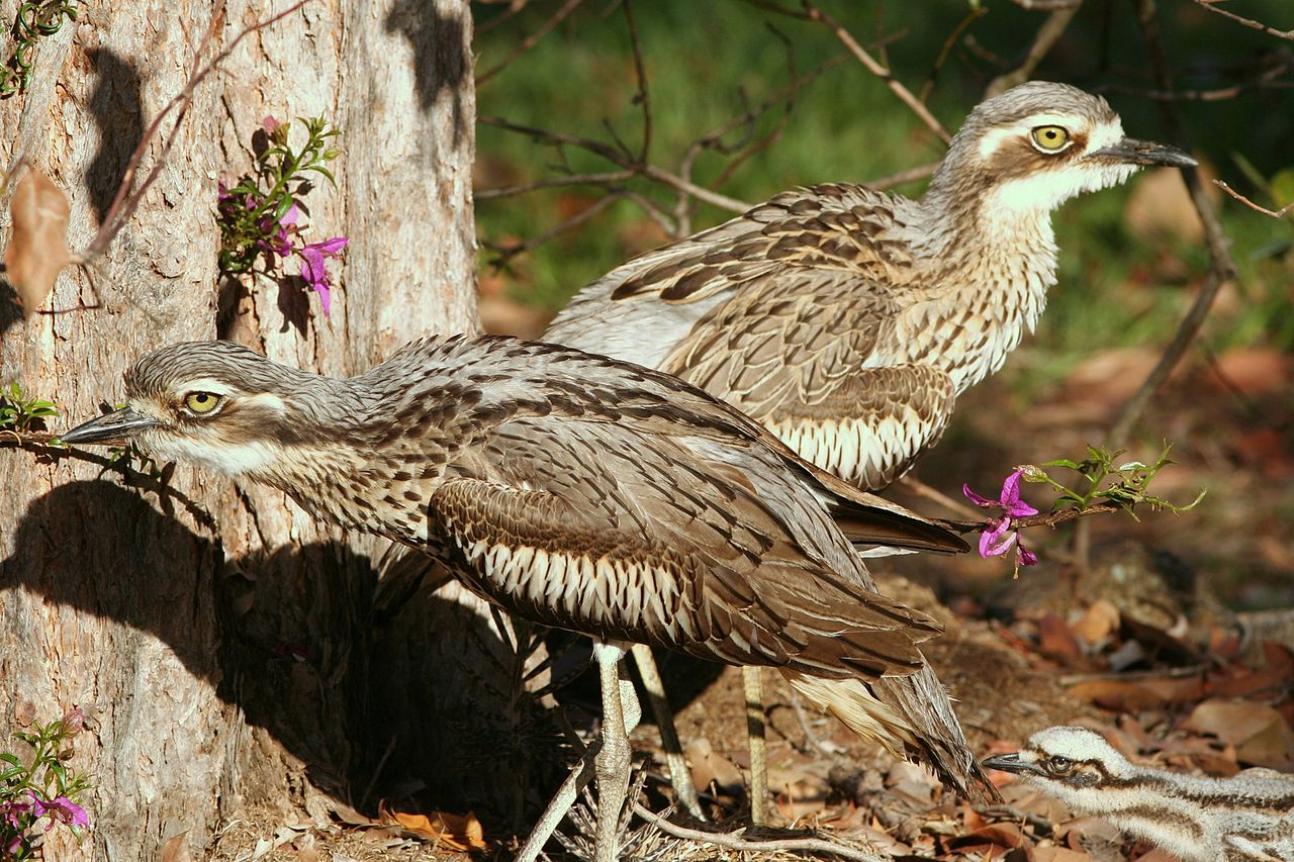
A bush stone curlew has been spotted near Station Beach in recent days. This is now a very rare sighting for Pittwater and quite exciting - although they did once live at Careel Bay as well. This sighting has been reported to Council.
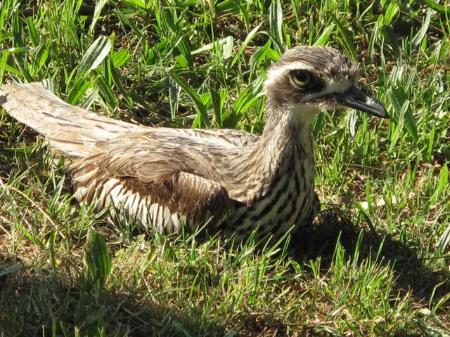
Above: Stone Curlew at North Avalon/Careel Bay, October 2011.
A large, slim, nocturnal, ground-dwelling bird that will build its nest in sand dunes, the bush stone-curlew is now listed as threatened in New South Wales. When breeding, bush stone-curlews create a nest on the ground laying up to 2 eggs between August and October and again between November to January. Each summer endangered pied oystercatchers and little terns, and critically endangered hooded plovers and beach stone curlews, lay their eggs in shallow nests on our beaches.
Unfortunately residents and visitors are taking their dogs offleash into north Palm Beach environs; Station Beach, Barrenjoey National Park, onto North Palm Beach and the into the PB Sand dunes, despite signage clearing stating this is a NO DOGS area. Even if your dog is not interested in the birds, shorebirds will recognise your dog as a predator and leave their nest in fright or attempt to lead the ‘predator’ away. Parent birds are easily disturbed and can abandon nests.
Recent BirdData surveys record Station Beach and Governor Phillip Park are home to a great list of resident bird species and other wildlife.
Similarly many of our creeks and other estuary foreshores are homes to resident shorebirds and a place of refuge for visitor birds during certain seasons.
Birds often seen along Careel Creek include: Pacific Black Ducks, Australian White Ibis, Little Pied Cormorant, White-faced Heron. Unfortunately many of the ducklings are eaten by large eels. As native plants installed by bushcare volunteers grow small birds such as Superb Wren, Spotted Pardalote and White-browed Scrub Wren will forage for insects there. Watch for the mud nests of Magpie Larks in the trees on the western bank.
The Bush Stone-curlew is an endangered species in the Sydney area, but breeds in Careel Bay. During 2011 one was often seen along the creek or nearby. This bird needs open woodland or saltmarsh, with fallen branches to hide among, as it relies on camouflage to protect itself and its nest on the ground.
Locals are calling on the Council to ensure they can live and raise their young in safety and peace across Pittwater and the peninsula.
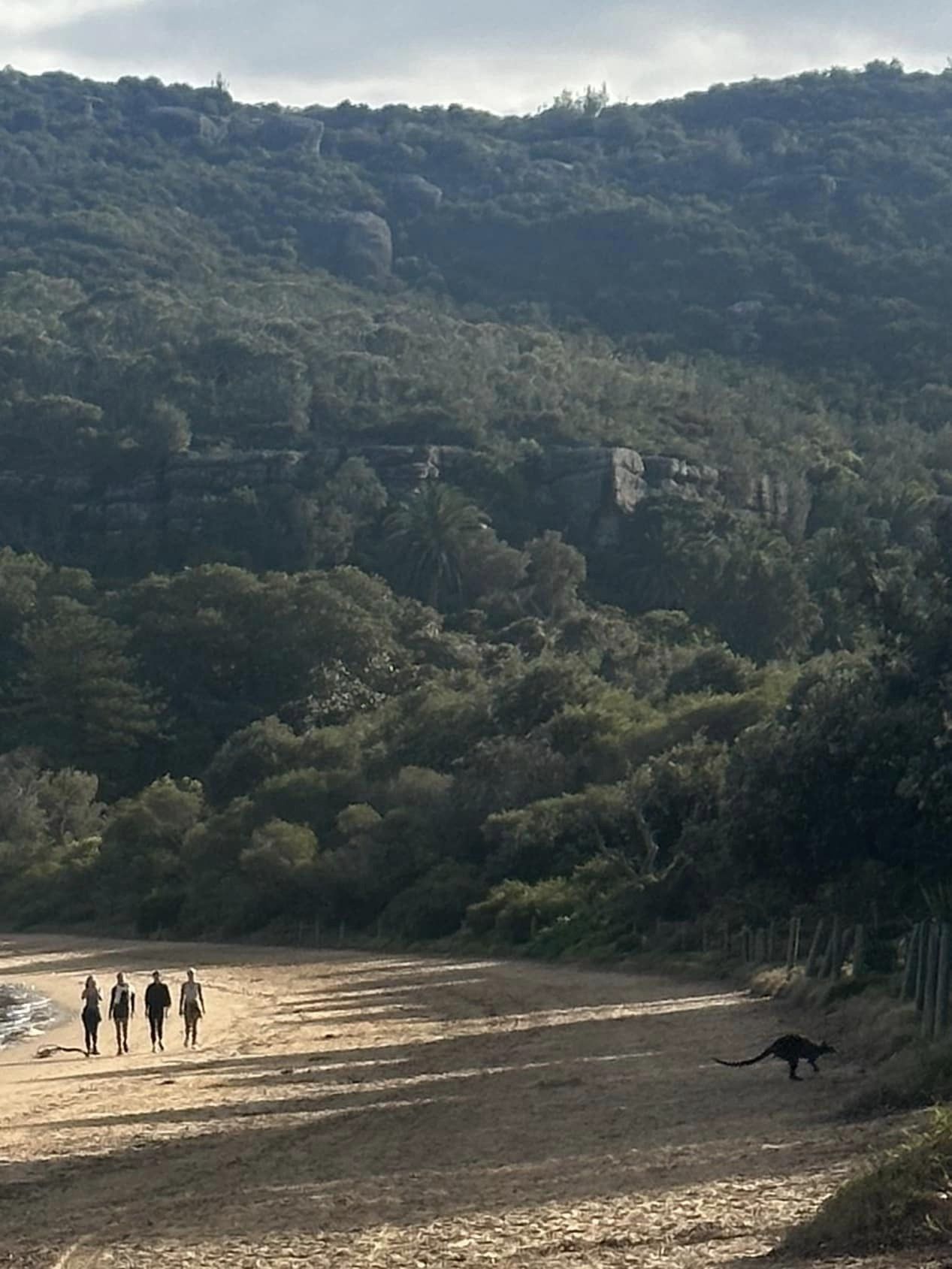
Wallaby going into sand dunes at Station Beach, Thursday August 24 2023, photo supplied.
Dog offleash on Station Beach in 2023, and signage these dog walkers ignored, photos supplied.
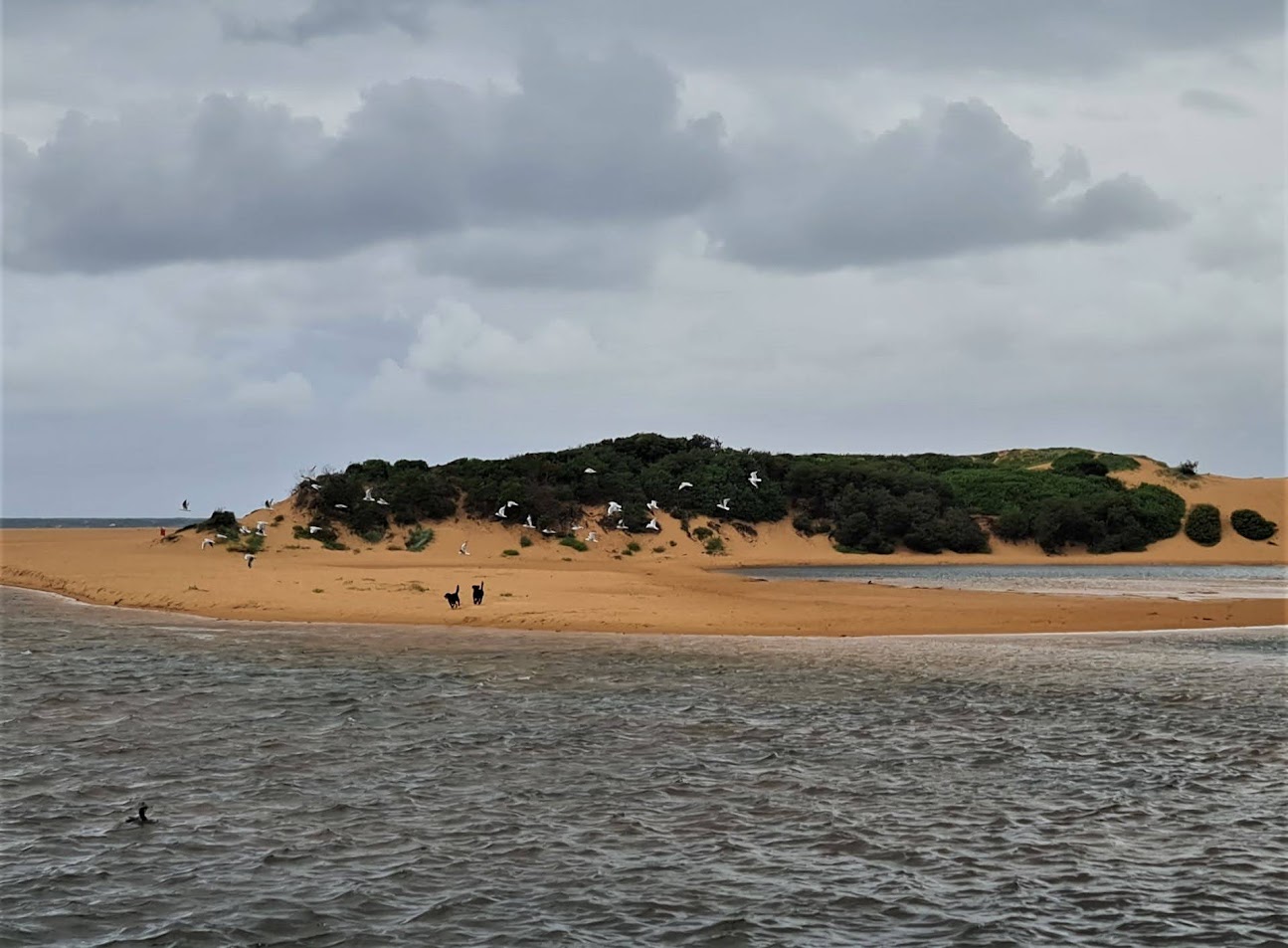
Dogs chasing seagulls off sandbar at North Narrabeen Lagoon January 2024, photo supplied.
The presence of this bird is a great reminder that our area is home to numerous ground-dwelling birds. They live in our wetlands, bush reserves, along our beaches and estuary foreshores.
East Asian—Australasian Flyway
Australia is one of 22 countries within the East Asian—Australasian Flyway and migratory waterbirds reach it via one or more of these countries, e.g. from breeding grounds in Russia or New Zealand.
Shorebird migration is among the most extraordinary feats of travel in the animal kingdom. Each species has its own breeding and non-breeding distribution and habitat preferences. Each has its own migration strategies, flight routes and stopover sites.
Australia is the southern destination for shorebirds using the East Asian—Australasian Flyway and a significant proportion of birds arriving here either stay in Queensland, New South Wales, Victoria or Tasmania, or travel through to New Zealand.
The East Asian-Australasian Flyway Partnership (EAAFP) was launched on 6 November 2006. It aims to protect migratory waterbirds, their habitats and the livelihoods of people dependent upon them. There are currently 40 Partners including 18 national governments, 6 intergovernmental agencies, 14 international NGOs, 1 international organisation and 1 international private enterprise.
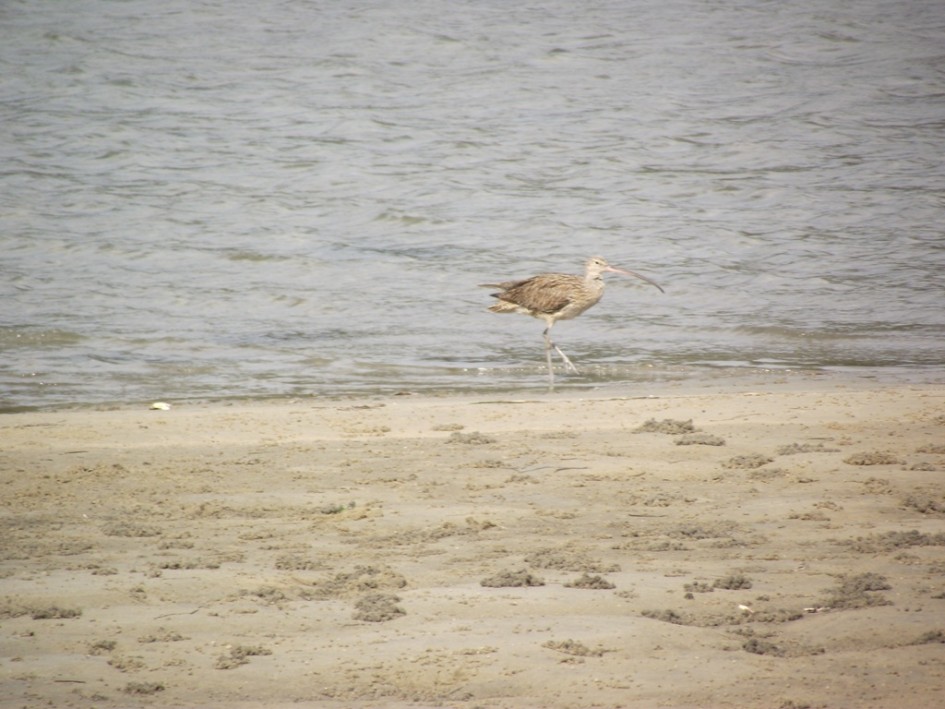
Eastern Curlew at Careel Bay foreshore
The Eastern Curlew is listed as critically endangered under the Environmental Protection and Biodiversity Conservation Act 1999. This species breeds in northern China and Russia during March – August and returns to Australia to feed during summer.
signage at Careel Bay, Pittwater - a place for shorebirds
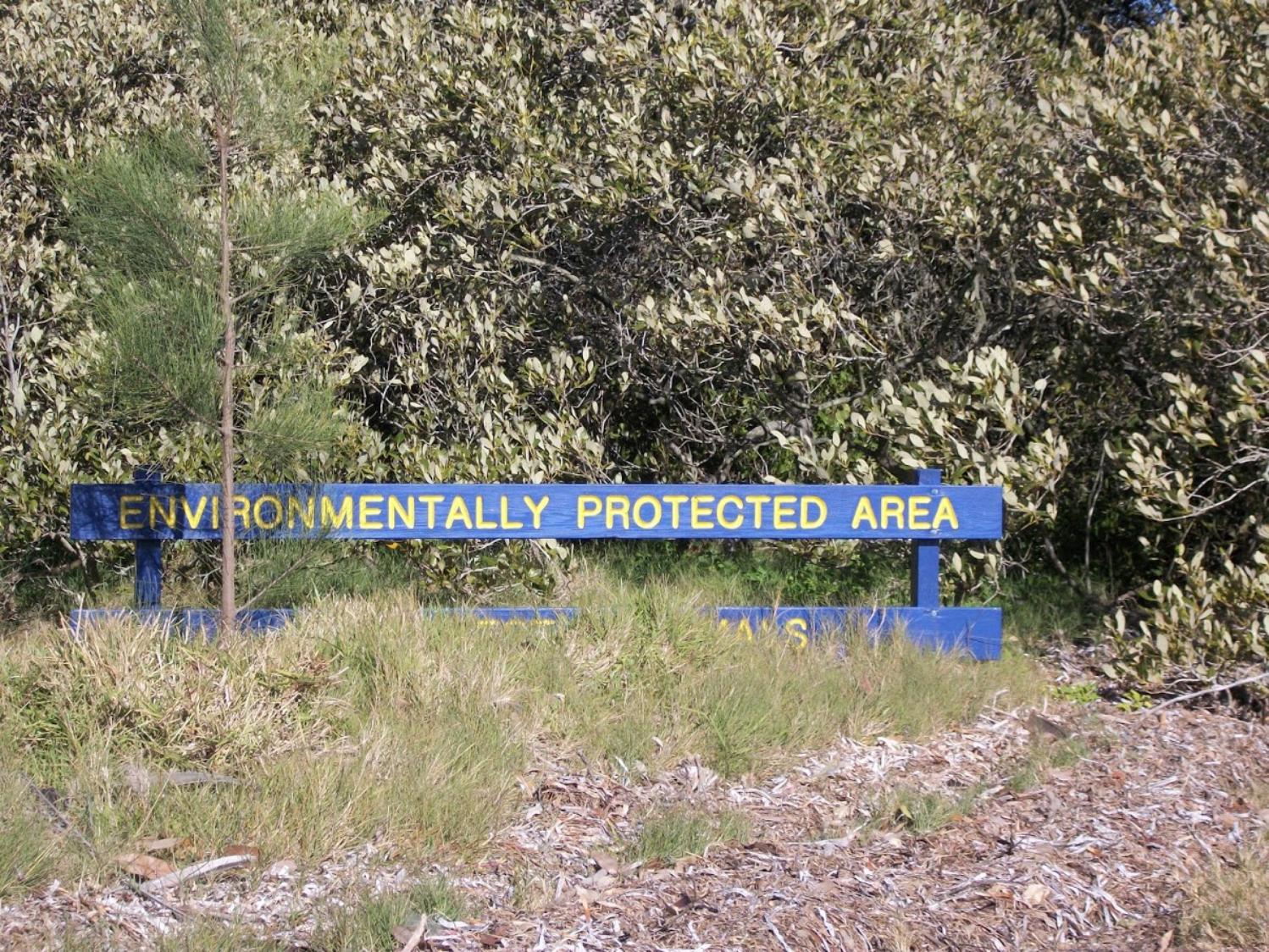
This Issue a few notes on these other residents and visitors of Pittwater and the peninsula runs as the Aquatics feature. BirdLife Australia's Shorebirds pamphlets for youngsters and Birders is at the base of the page so you may download these for the next time you're out and about.
Rose The Orphaned Brushtail: Update
Friday January 26, 2024
For those who remember little Rose whose mum was hit and killed on Barrenjoey Rd, opposite the golf course, a few months ago. Her and her buddy Max, whose mum was also killed, have just been released this evening by us in a secret location.
They were both feral as, which is perfect and I will be support feeding and checking on them for the next 2 weeks. I wish them both the best of luck and glad they could have a second chance. - update and photos courtesy Helen Pearce, Sydney Wildlife Rescue rscuer, rehabilitator and carer
For first report and background, please visit: Mother Brushtail Killed On Barrenjoey Road: Baby Cried All Night - Powerful Owl Struck At Same Time At Careel Bay During Owlet Fledgling Season, November 2023, Issue 604
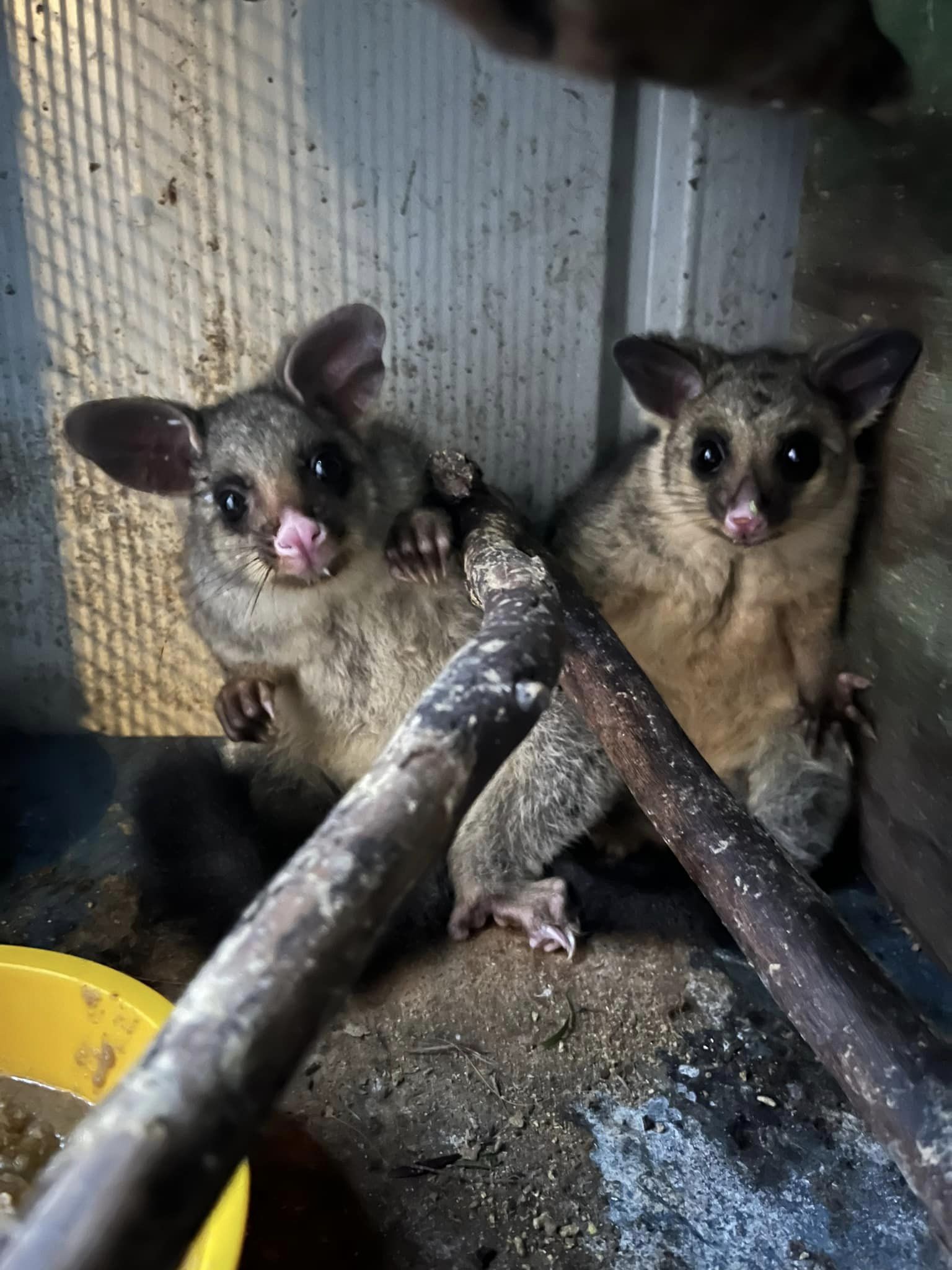
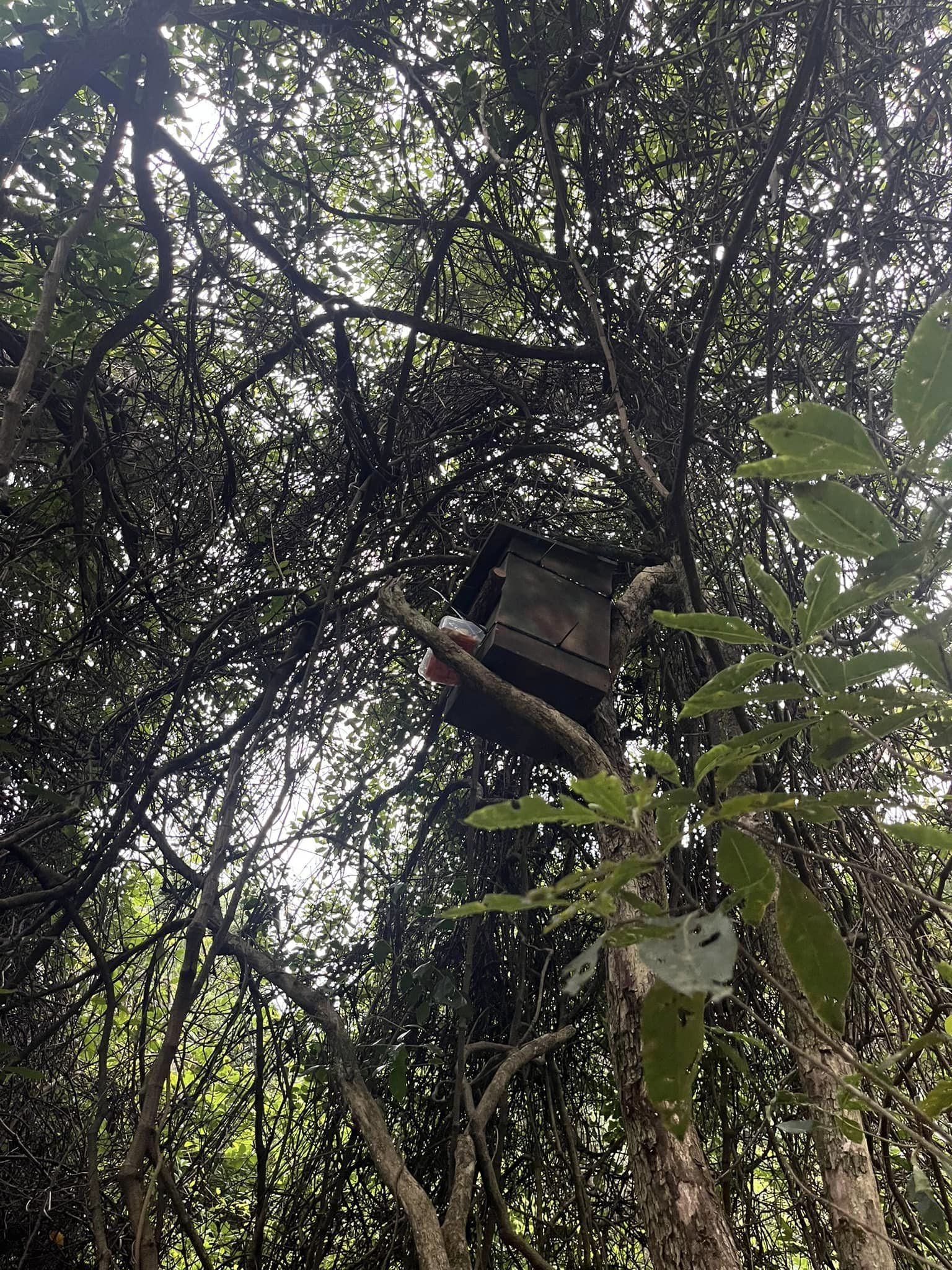
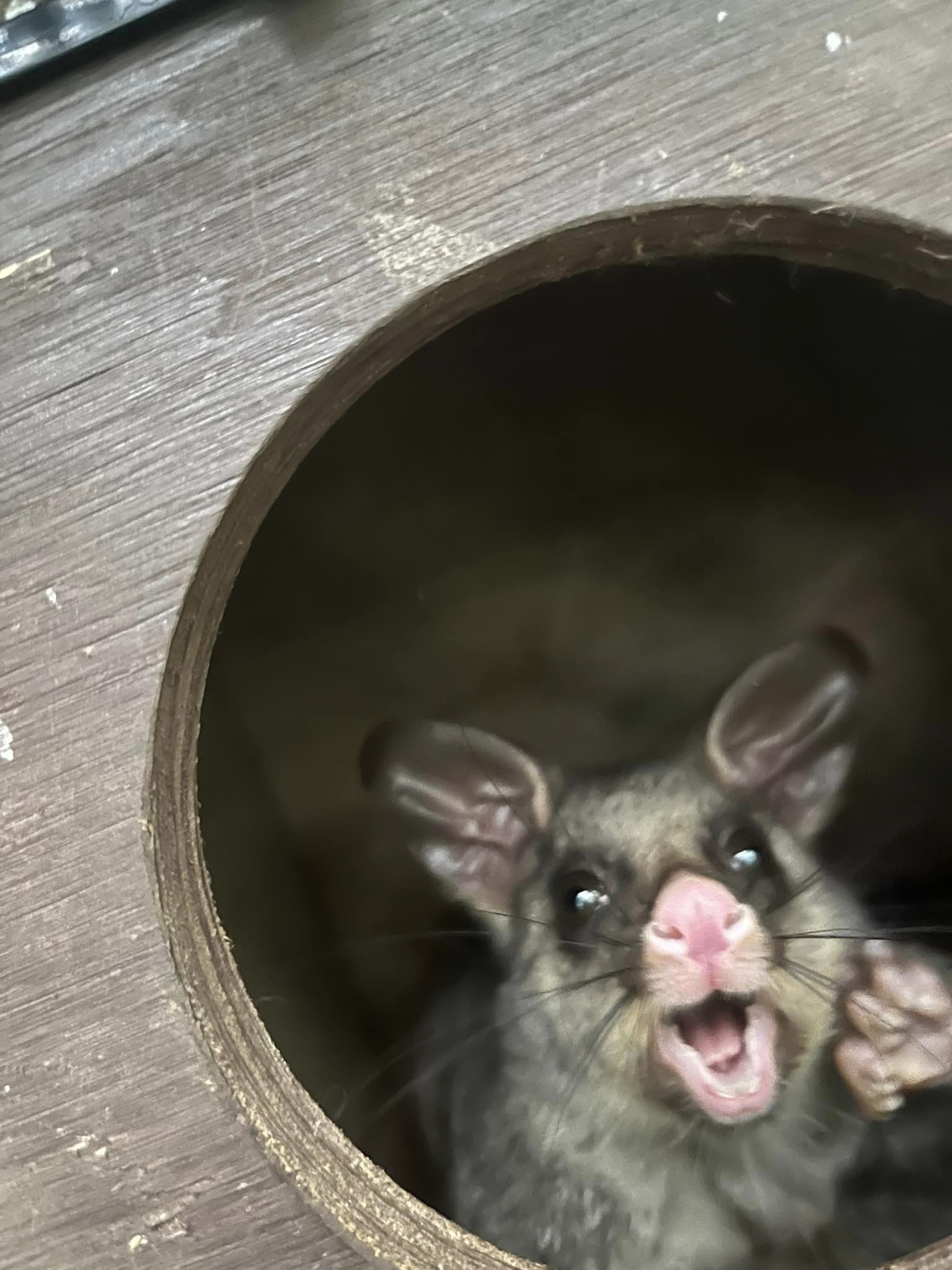
Mona Vale's Century Old Anzac Memorial Tree Passes Away
The first WWI Memorial at Mona Vale was the now replaced Roll of Honour which was installed at Mona Vale Public School, and dedicated on March 23rd, 1918.
The next, which would not be recognised by those who planted it, was a Victory Tree placed alongside the Methodist Church in Mona Vale, which once stood where Woolworths now stands.
The tree, still standing near Woolworths, has recently died, is a Holly Oak (Quercus ilex).
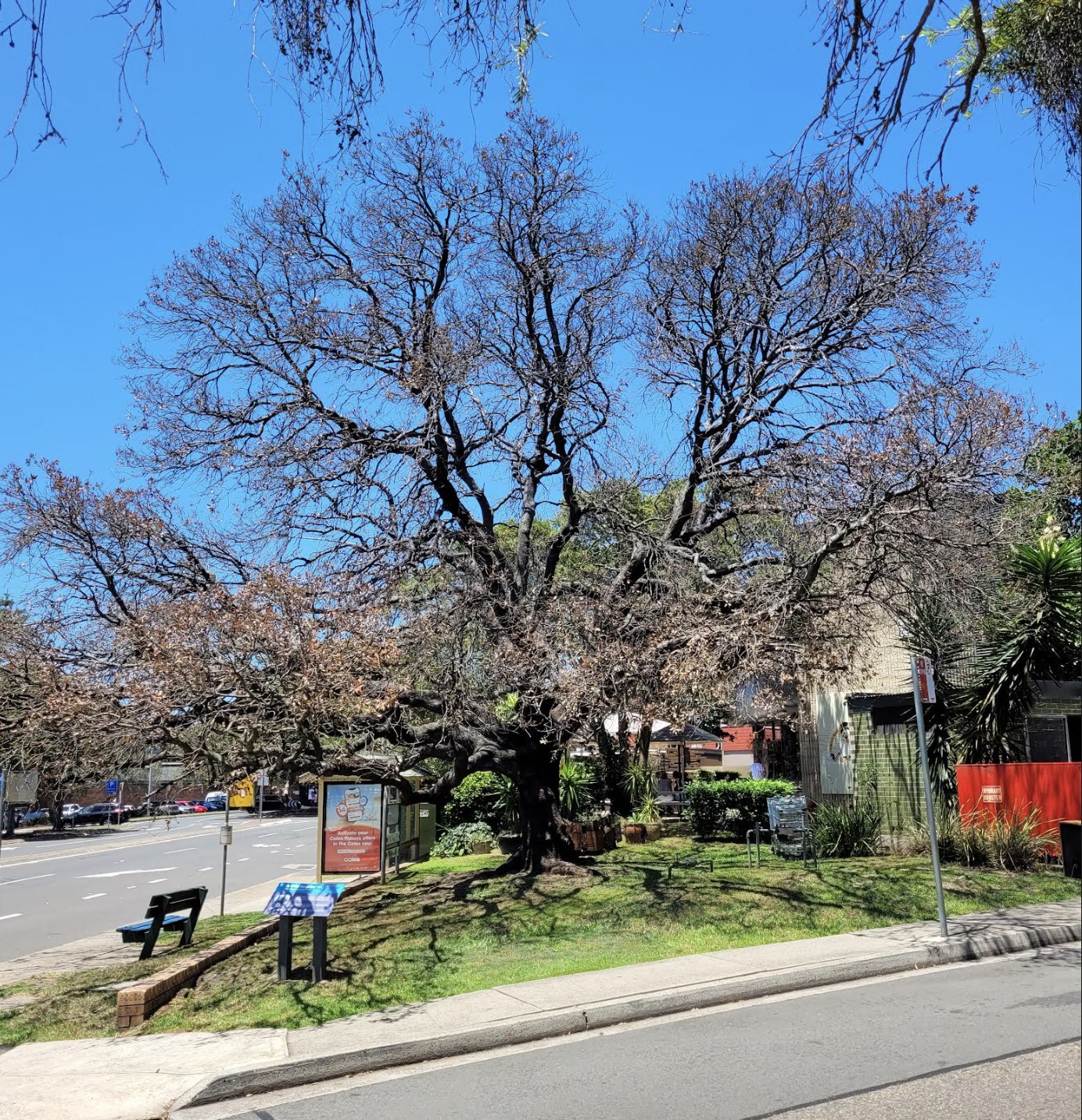
This tree was planted in 1920 and became the first place Mona Vale ANZAC Day ceremonies were conducted by students and the community:
The Victory Tree.
To stand as a living expression of gratitude to God for victory in the great war, and to continually remind the youth of Methodism of the ideals for which our soldiers so nobly fought,' the Young People 's Department recently offered to present and forward to every Sunday School in the State a 'Victory Tree,' for planting in school or church grounds. The Department stipulated that applications should be made upon a prescribed form, which stated the conditions of gift, and a copy of which was forwarded to every Sunday School.
Below is a list of the schools ' that have made application for a tree, and to many of these the trees have already been forwarded. Superintendents and teachers are requested to scan the list, and if the name of their school does not appear thereon, to take steps to have an application lodged at the Y.P. Department's Office at an early date.
The trees are beautiful specimens of the kind most suit-able for the districts concerned, and the presentation of them is made possible by the kindness of Mr. Maiden, the Government Botanist: —
SYDNEY DISTRICT.— Rockdale, French's Forest, West Bexley, St. Ives, Bexley, Pymble, Turramurra, Wahroonga, Willoughby, Tempe Park, Bondi, Waverley, Malvern Hill, Chatswood (Central), Mona Vale...The Victory Tree. (1920, June 19). The Methodist (Sydney, NSW : 1892 - 1954), p. 4. Retrieved from http://nla.gov.au/nla.news-article155274628
VICTORY TREE CELEBRATIONS.
On or near Anzac Day the following centres will, according to agreement with the Young People's Department, conduct a ceremony, when thanksgiving shall be offered to Almighty God:
-Parkesbourne, Bega, New Lambton, Knockrow, Wauchope, Caniaba, South Bathurst, Kembla Heights, Gerringong, Cowlong, Brooklana, Nelson's Bay, Palmer's Island, Murwil-lumbah, Casino, Blackman's Point, Tenterfield, Fernmount, Comboyne, Coraki, Tenter-Grafton, Mine Camp (Catherine Hill Bay), Koppin Yarratt, Suspension Bridge, Summer Hill, Waverley, Montague Street (Balmain), Chatswood South, Paddington, Brooklet; Forbes, Ryde, Eastwood, Kurri Kurri, Grenfell, Rockdale, West Bexley, St. Ives, Pymble, Turramurra, Wahroonga, Willoughby, Tempe Park, Bondi, Ariah Park, Culcairn, Hay, Malebo, Macksville, Kyogle, Lismore, Wyrallah, Rous Mill, Lawrence, South Woodburn, Werris Creek, Stannifer, Glen Innes, Gunnedah, Cooma, Boorowa, Robertson, Biddon, Cardiff, Gouldsville, Wakefield, East Maitland, Bolwarra, Spring Hill, Hornsby, Waitara, Punchbowl, Lindfield, Arncliffe, Brookvale, Balgowlah, Kensington, Peakhurst, Mullum-bimby, French's Forest, Luddenham, Rye, Park, Hannam Vale, Wattle Park, Kangaloon, Merrilla, Lawson, Cullinga, Narrandera, Merriwa, Wallendbeen, William Street (Bathurst), Armidale, Gilgandra, Cootamundra, Stewart Street (Bathurst), North Goulburn, Orange, Gapertee, Temora, Ulabo, Harden, Corowa, Dalton, Blayney, Parkes, Bowral, Brownlow Hill, Quirindi, Rylstone,. Hexham, Liverpool, Holroyd, Wamberal, Kangaroo Valley, Wyee, Dora Creek, Bulli, Thirroul, Coledale, Peak Hill, Adamstown, Aberdare, Boggabri, Toronto, Laman Street (Newcastle), Baulkham Hills North, Lakemba, Rozelle, Rosebery, Balmain East, Hurstville, Lewisham, Earlwood, Malvern Hill, Epping, Chatswood Central, Mona Vale, Hamilton, Junction (Merewether), Bexley, Flemington, Parramatta (Macquarie Street), Auburn, Granville, Upper Picton, Orchard Hills, Cawdor, Badgery's Creek, Mt. Kembla, Warrena, Weston, Abermain, Pelaw Main, Heddon Greta, Toongabbie, Leura, Yass, Woodstock, Gunning (three centres), West Wyalong, Tallong, Uralla, Cunningar, Cowra Road, Millthorpe, Gundagai, Dubbo, Newcastle C.M.M., Stockton, Cook's Hill, Molong, Carrington, Dundas, Wallsend (Metcalfe Street), Dangar Street (Newcastle), Castle Hill, Penrith, Morpeth, Mayfield, South Hurstville, Nowra, West Ryde, Ilford, Oberon, Goldsmith Street (Goulburn), Katoomba, Drummoyne, Sutherland, Lambton, Dennis Island, Branxton, Corinda. VICTORY TREE CELEBRATIONS. (1921, April 23). The Methodist (Sydney, NSW : 1892 - 1954), p. 6. Retrieved from http://nla.gov.au/nla.news-article155269705
From: Mona Vale War Memorials: A School Honour Board, A Victory Tree, A Cenotaph - Pittwater Online News, Issue 535
Photo supplied by David James OAM

Angophora Costata Flowering
January 2024
Sydney Red Gum, Angophora costata, has spectacular bark as well as flowers in early Summer. A few weeks later Rough-barked Apple, Angophora floribunda, flowers. This is our latest cover image, a tree in Village Park Mona Vale. Both have masses of flowers on the ends of the branchlets, and unlike eucalypts, their adult foliage is arranged in pairs, or opposite. Eucalypt adult leaves occur on alternate sides along the twigs. Angophora buds and gumnuts have vertical ridges, as on right side of the image.
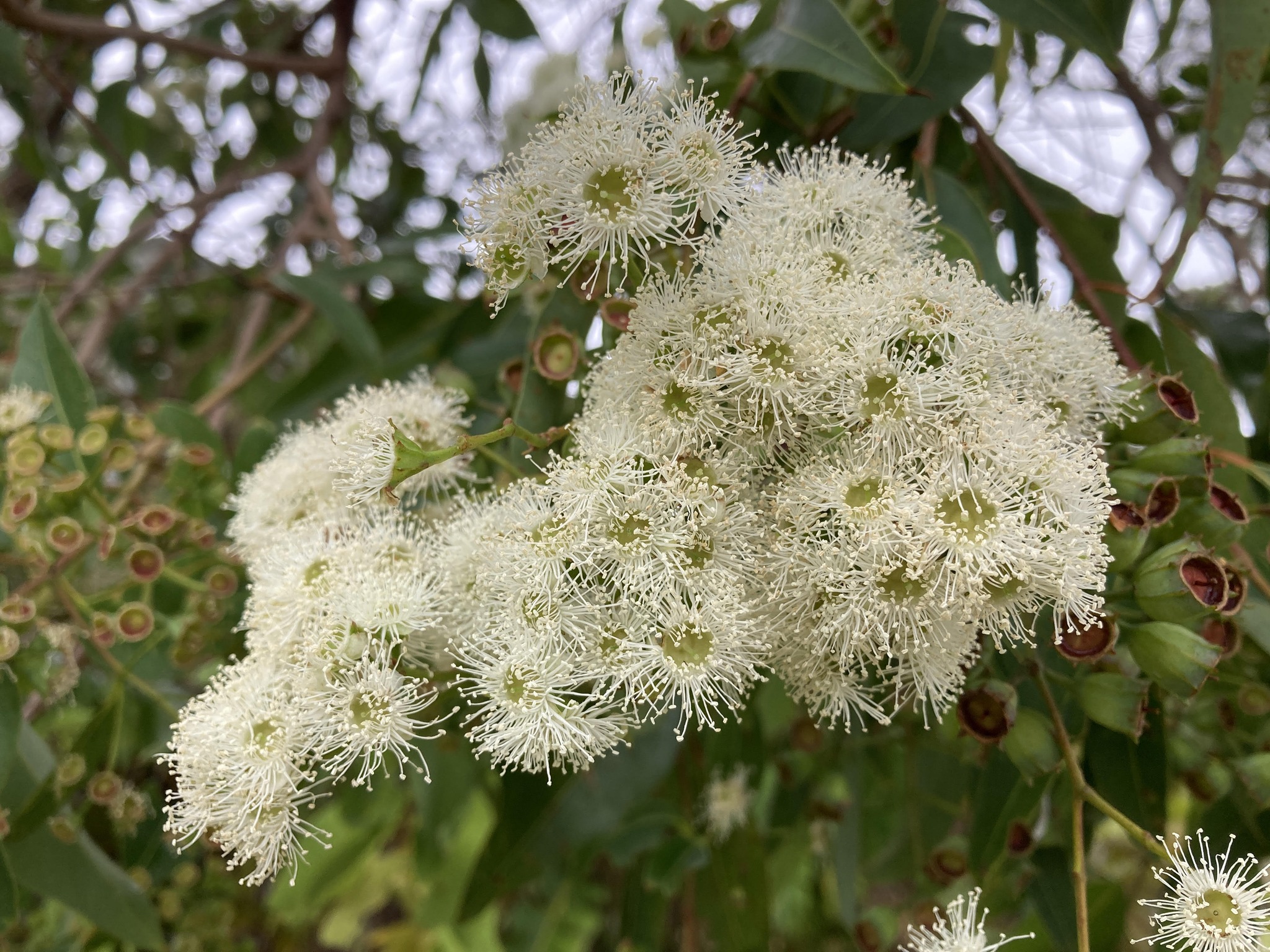
Photo and information: Pittwater Natural Heritage Association (PNHA)
Stay Safe From Mosquitoes This Holiday Season
- Applying repellent to exposed skin. Use repellents that contain DEET, picaridin, or oil of lemon eucalyptus. Check the label for reapplication times.
- Re-applying repellent regularly, particularly after swimming. Be sure to apply sunscreen first and then apply repellent.
- Wearing light, loose-fitting long-sleeve shirts, long pants and covered footwear and socks.
- Avoiding going outdoors during peak mosquito times, especially at dawn and dusk.
- Using insecticide sprays, vapour dispensing units and mosquito coils to repel mosquitoes (mosquito coils should only be used outdoors in well-ventilated areas)
- Covering windows and doors with insect screens and checking there are no gaps.
- Removing items that may collect water such as old tyres and empty pots from around your home to reduce the places where mosquitoes can breed.
- Using repellents that are safe for children. Most skin repellents are safe for use on children aged three months and older. Always check the label for instructions. Protecting infants aged less than three months by using an infant carrier draped with mosquito netting, secured along the edges.
- While camping, use a tent that has fly screens to prevent mosquitoes entering or sleep under a mosquito net.
Kimbriki Resource Recovery Centre: Early Childhood Educators Professional Development Day
As part of Kimbriki's 2024 Eco House & Garden Educational Calendar, this year we introduce the Early Childhood Educators Professional Development Day on Friday 22nd March. For more details and bookings 👉 https://www.trybooking.com/events/landing/1162305
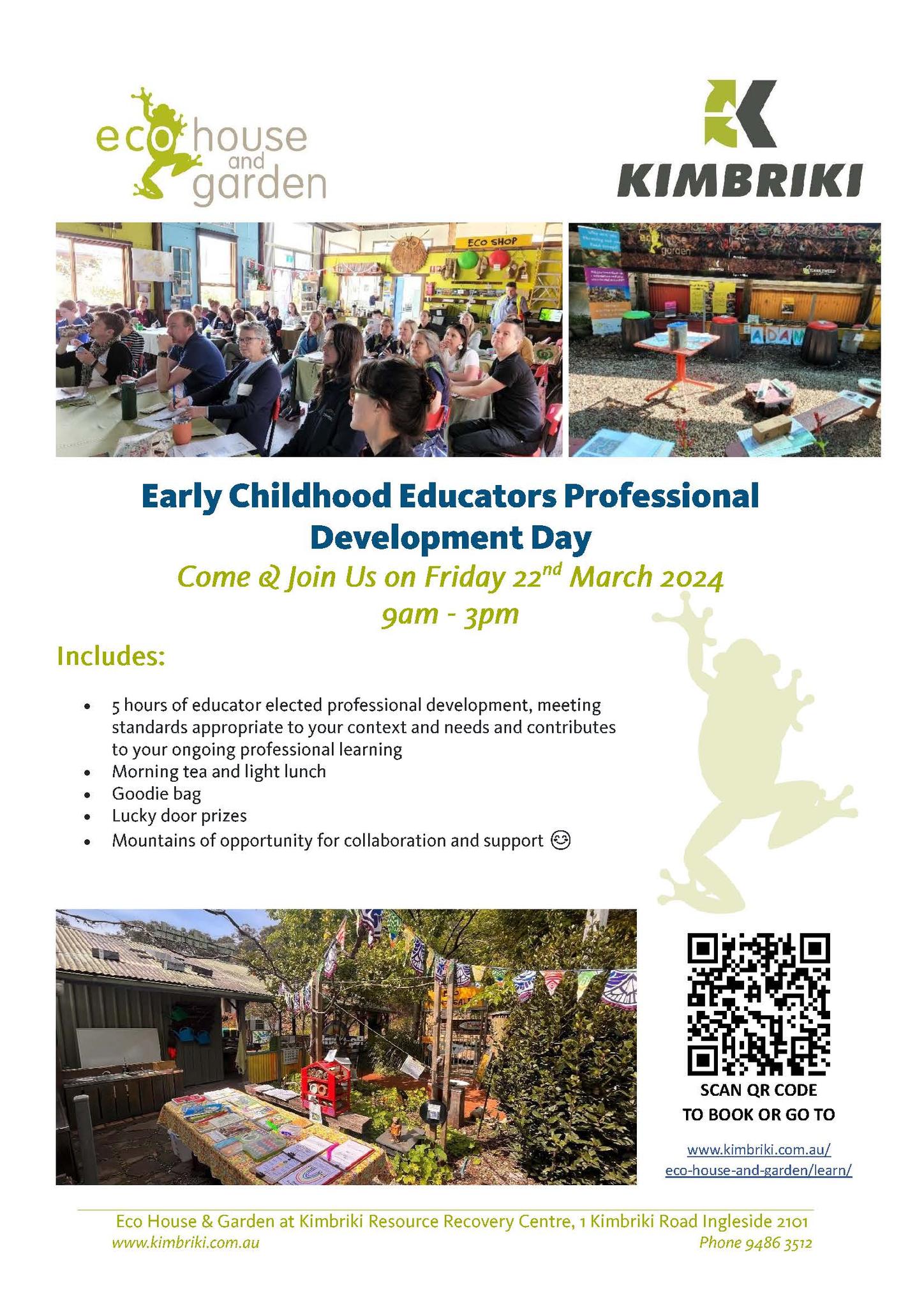
Mountain Bike Incidents On Public Land: Survey
- Mountain Bike Incidents On Public Land: Survey Launched To Gather Data On What's Happening To Public Parks - Community Land - Bush Reserves In Pittwater
- Mother Brushtail Killed On Barrenjoey Road: Baby Cried All Night - Powerful Owl Struck At Same Time At Careel Bay During Owlet Fledgling Season: calls for mitigation measures - The List of 'What You can Do' as requested
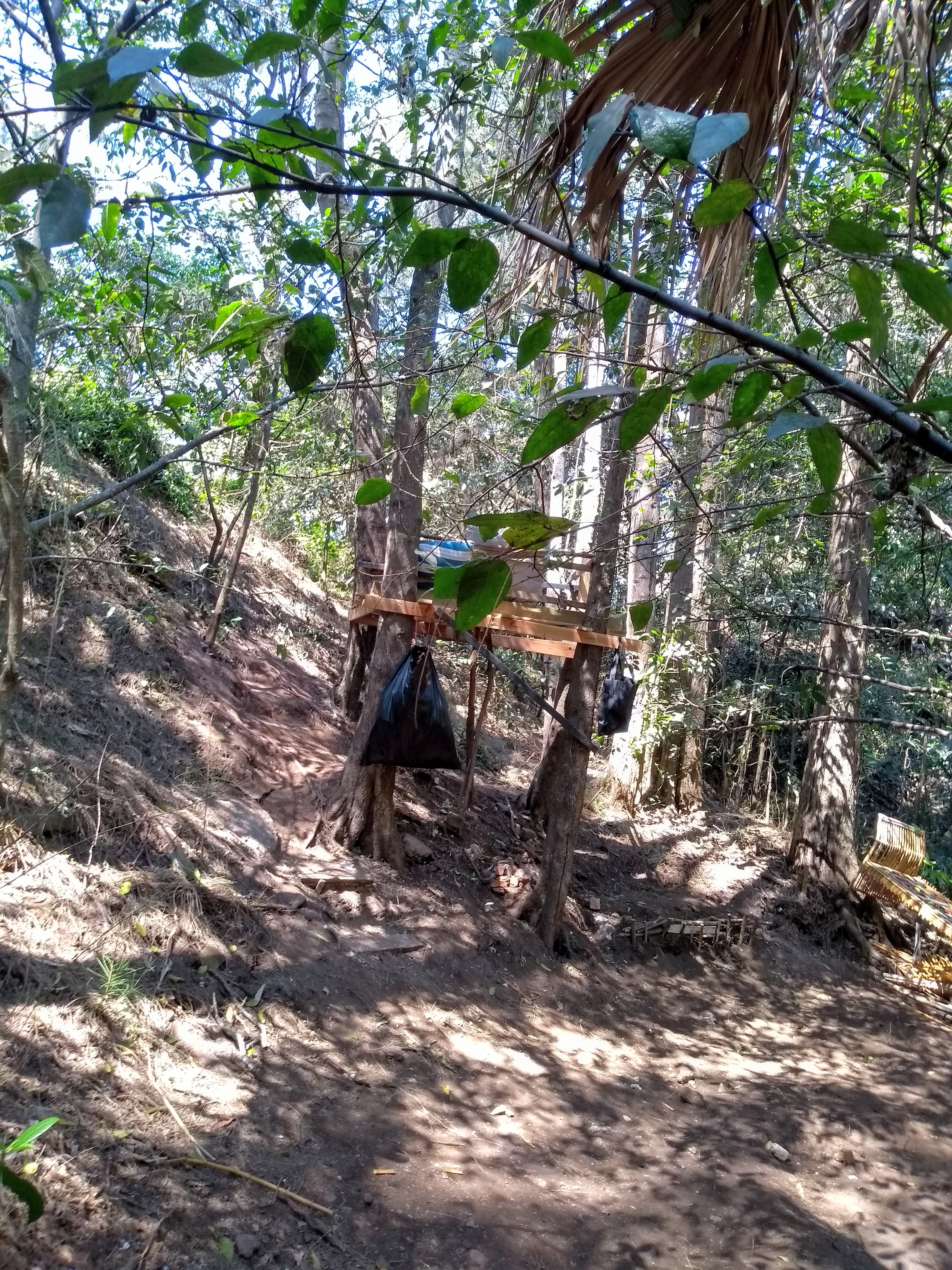
Please Look Out For Wildlife During Heatwave Events

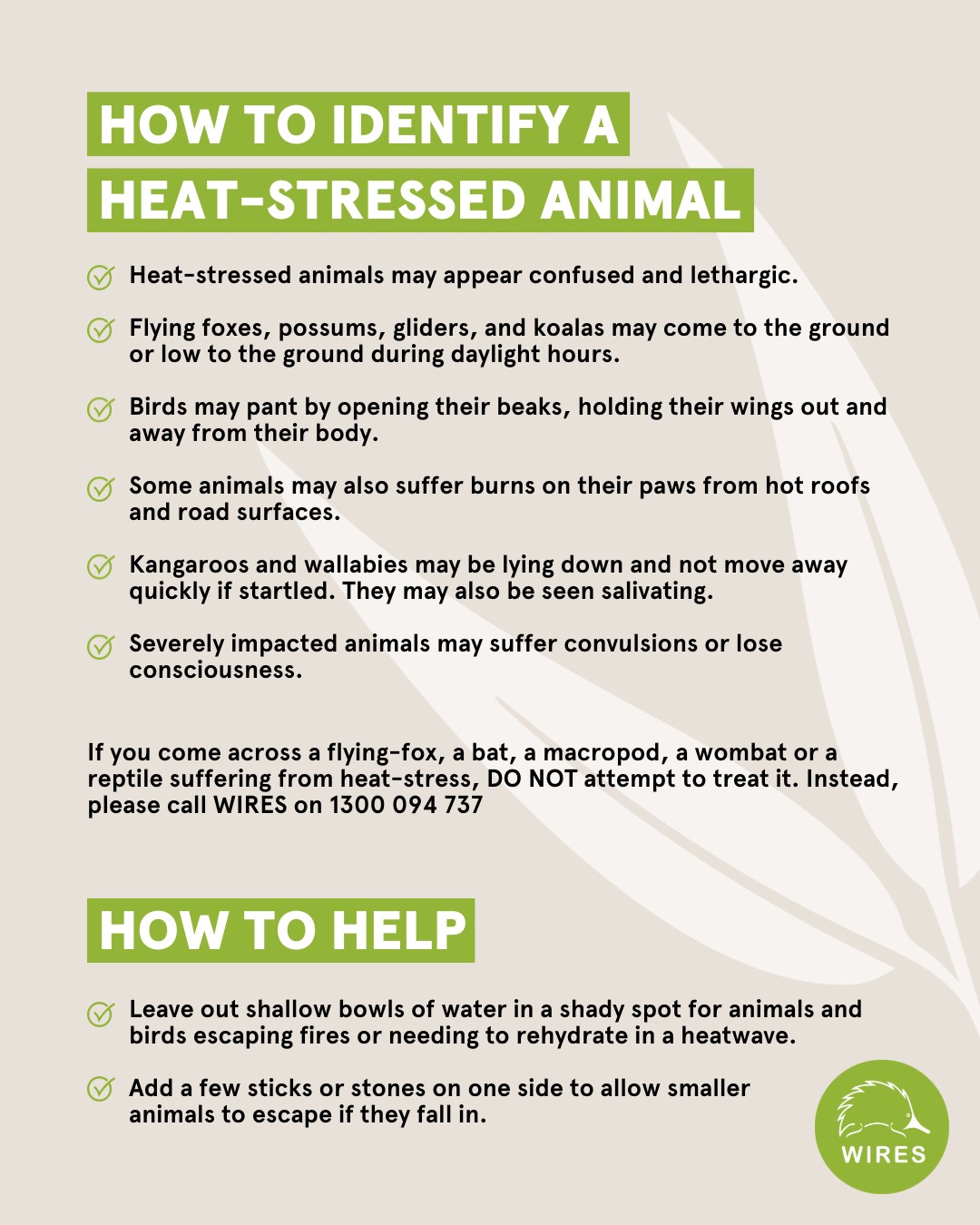
Palmgrove Park Avalon: New Bushcare Group
 Palmgrove Park Avalon is a remnant of the Spotted Gum forest that was once widespread on the lower slopes of the Pittwater peninsula. This bushland’s official name and forest type is Pittwater and Wagstaffe Endangered Ecological Community, endangered because so much has been cleared for suburban development. Canopy trees, smaller trees and shrubs, and ground layer plants make up this community. Though scattered remnant Spotted Gums remain on private land, there is little chance of seedlings surviving in gardens and lawns. More information HERE
Palmgrove Park Avalon is a remnant of the Spotted Gum forest that was once widespread on the lower slopes of the Pittwater peninsula. This bushland’s official name and forest type is Pittwater and Wagstaffe Endangered Ecological Community, endangered because so much has been cleared for suburban development. Canopy trees, smaller trees and shrubs, and ground layer plants make up this community. Though scattered remnant Spotted Gums remain on private land, there is little chance of seedlings surviving in gardens and lawns. More information HERE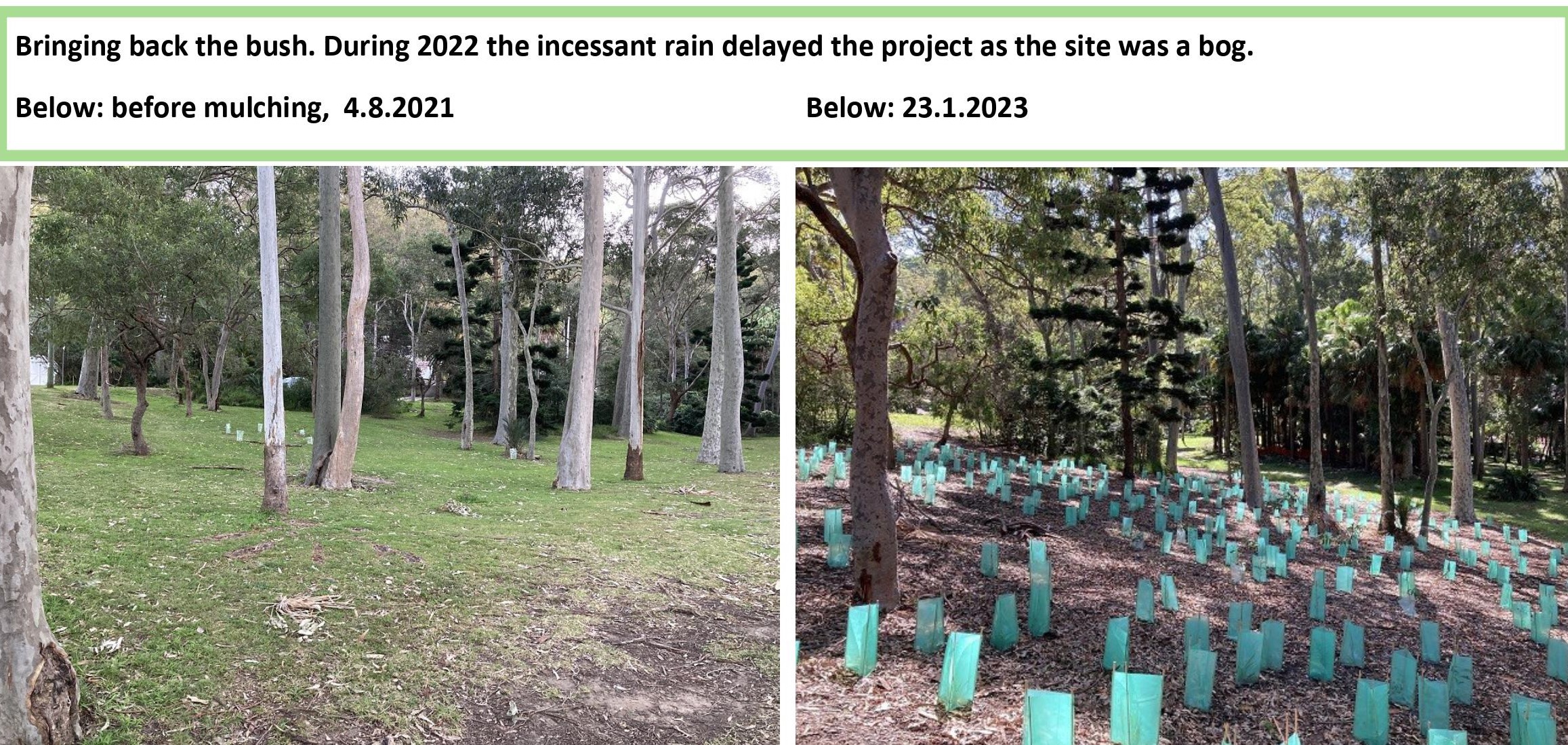
Report Fox Sightings
%20(1).jpg?timestamp=1675893929686)
Marine Wildlife Rescue Group On The Central Coast
A new wildlife group was launched on the Central Coast on Saturday, December 10, 2022.
Marine Wildlife Rescue Central Coast (MWRCC) had its official launch at The Entrance Boat Shed at 10am.
The group comprises current and former members of ASTR, ORRCA, Sea Shepherd, Greenpeace, WIRES and Wildlife ARC, as well as vets, academics, and people from all walks of life.
Well known marine wildlife advocate and activist Cathy Gilmore is spearheading the organisation.
“We believe that it is time the Central Coast looked after its own marine wildlife, and not be under the control or directed by groups that aren’t based locally,” Gilmore said.
“We have the local knowledge and are set up to respond and help injured animals more quickly.
“This also means that donations and money fundraised will go directly into helping our local marine creatures, and not get tied up elsewhere in the state.”
The organisation plans to have rehabilitation facilities and rescue kits placed in strategic locations around the region.
MWRCC will also be in touch with Indigenous groups to learn the traditional importance of the local marine environment and its inhabitants.
“We want to work with these groups and share knowledge between us,” Gilmore said.
“This is an opportunity to help save and protect our local marine wildlife, so if you have passion and commitment, then you are more than welcome to join us.”
Marine Wildlife Rescue Central Coast has a Facebook page where you may contact members. Visit: https://www.facebook.com/profile.php?id=100076317431064
- Ph: 0478 439 965
- Email: marinewildlifecc@gmail.com
- Instagram: marinewildliferescuecc
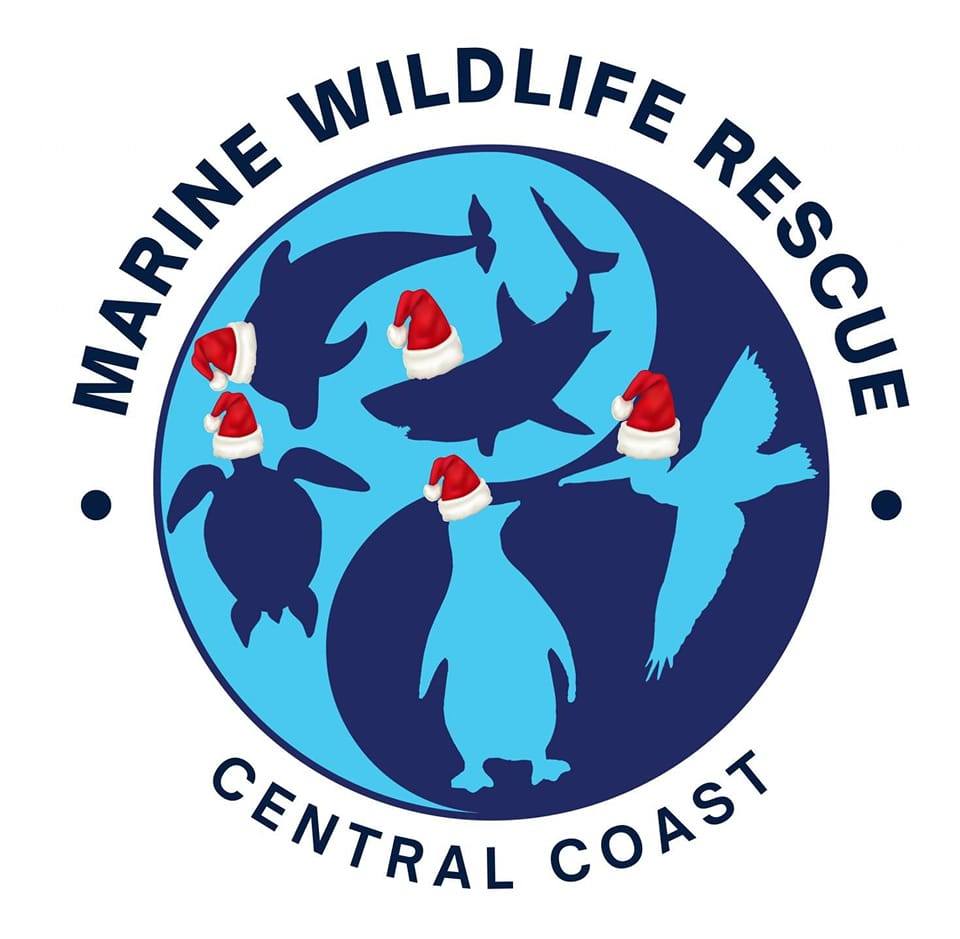
Watch Out - Shorebirds About
.JPG.opt1460x973o0,0s1460x973.jpg?timestamp=1663629195339)
Possums In Your Roof?: Do The Right Thing
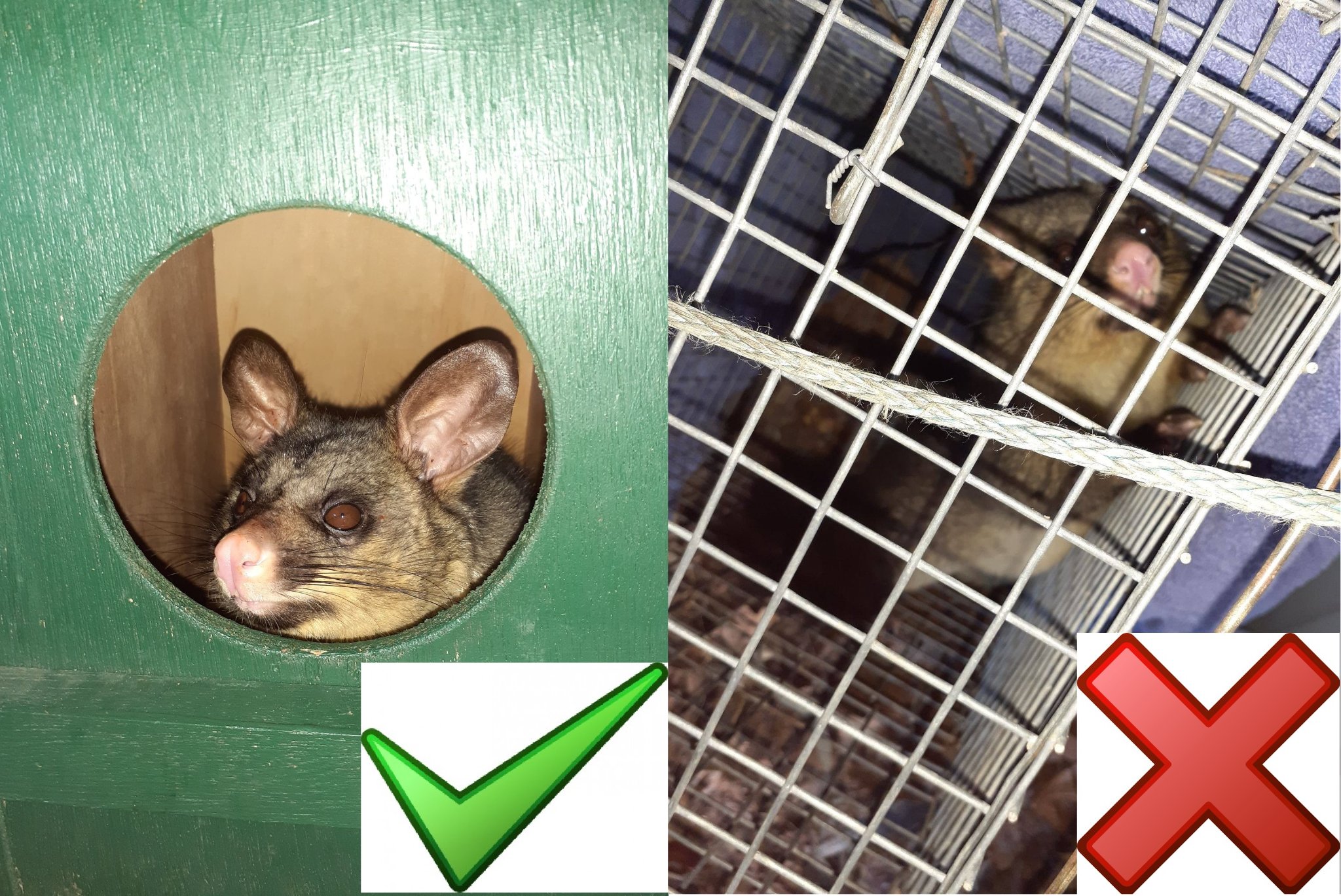
Aviaries + Possum Release Sites Needed

Bushcare In Pittwater
Where we work Which day What time
Avalon
Angophora Reserve 3rd Sunday 8:30 - 11:30am
Avalon Dunes 1st Sunday 8:30 - 11:30am
Avalon Golf Course 2nd Wednesday 3 - 5:30pm
Careel Creek 4th Saturday 8:30 - 11:30am
Toongari Reserve 3rd Saturday 9 - 12noon (8 - 11am in summer)
Bangalley Headland 2nd Sunday 9 to 12noon
Bayview
Winnererremy Bay 4th Sunday 9 to 12noon
Bilgola
North Bilgola Beach 3rd Monday 9 - 12noon
Algona Reserve 1st Saturday 9 - 12noon
Plateau Park 1st Friday 8:30 - 11:30am
Church Point
Browns Bay Reserve 1st Tuesday 9 - 12noon
McCarrs Creek Reserve Contact Bushcare Officer To be confirmed
Clareville
Old Wharf Reserve 3rd Saturday 8 - 11am
Elanora
Kundibah Reserve 4th Sunday 8:30 - 11:30am
 Mona Vale
Mona Vale Mona Vale Beach Basin 1st Saturday 8 - 11am
Mona Vale Dunes 2nd Saturday +3rd Thursday 8:30 - 11:30am
Newport
Bungan Beach 4th Sunday 9 - 12noon
Crescent Reserve 3rd Sunday 9 - 12noon
North Newport Beach 4th Saturday 8:30 - 11:30am
Porter Reserve 2nd Saturday 8 - 11am
North Narrabeen
Irrawong Reserve 2nd Saturday 2 - 5pm
Palm Beach
North Palm Beach Dunes 3rd Saturday 9 - 12noon
Scotland Island
Catherine Park 2nd Sunday 10 - 12:30pm
Elizabeth Park 1st Saturday 9 - 12noon
Pathilda Reserve 3rd Saturday 9 - 12noon
Warriewood
Warriewood Wetlands 1st Sunday 8:30 - 11:30am
Whale Beach
Norma Park 1st Friday 9 - 12noon
Western Foreshores
Coopers Point, Elvina Bay 2nd Sunday 10 - 1pm
Rocky Point, Elvina Bay 1st Monday 9 - 12noon
Friends Of Narrabeen Lagoon Catchment Activities

Gardens And Environment Groups And Organisations In Pittwater
- Ringtail Posse: 1 – February 2023; Anna Maria Monticelli: King Parrots/Water Dragons - Jacqui Scruby: Loggerhead Turtle - Lyn Millett OAM: Flying-Foxes - Kevin Murray: Our Backyard Frogs - Miranda Korzy: Brushtail Possums
- Ringtail Posse: 2 - March 2023; Kevin Murray: Tawny Frogmouth - Kayleigh Greig: Red-Bellied Black Snake - Bec Woods: Australian Water Dragon - Margaret Woods: Owlet-Nightjar - Hilary Green: Butcher Bird - Susan Sorensen: Wallaby
- Ringtail Posse 3 - April 2023: Jeffrey Quinn: Kookaburra, Tom Borg McGee: Kookaburra, Stephanie Galloway-Brown: Bandicoot, Joe Mills: Noisy Miner
- Ringtail Posse 4 May 2023 - Andrew Gregory: Powerful Owl, Marita Macrae: Pale-Lipped Or Gully Shadeskink, Jools Farrell: Whales & Seals, Nicole Romain: Yellow-Tailed Black Cockatoo
- Ringtail Posse 5: June 2023 - Lynleigh Greig OAM: Snakes, Dick Clarke: Diamond Python, Selena Griffith: Glossy Black-Cockatoo, Eric Gumley: Bandicoot
- Ringtail Posse 6: July 2023 - Sonja Elwood: Long-Nosed Bandicoot, Dr. Conny Harris: Swamp Wallaby, Neil Evers: Bandicoot, Bill Goddard: Bandicoot
- Ringtail Posse 7: August 2023 - Geoff Searl OAM: Tawny Frogmouth, Peter Macinnis: Echidna, Peter Carter: Ringtail Possum, Nathan Wellings; Kookaburra
- Ringtail Posse 8: September 2023 - Saving Sydney's Last Koalas; Logging Now Stopped In Future Koala Park By Minns Government - ''Is There Time To Save Sydney's Last Koalas Too?'' Asks: John Illingsworth, WIRES, Sydney Wildlife Rescue, Save Sydney Koalas, The Sydney Basin Koala Network, The Help Save The Wildlife & Bushlands In Campbelltown Group, Appin Koalas Animal Rescue Service, Patricia and Barry Durham, Sue Gay, Save Mt. Gilead, Paola Torti Of The International Koala Intervention Group
- Ringtail Posse 9: October 2023 - David Palmer OAM: Bandicoots, Helen Pearce: Brushtail Possum, Amina Kitching: Goanna, David Goudie: Ringtails Possums + Bandicoots + Owls
- Mother Brushtail Killed On Barrenjoey Road: Baby Cried All Night - Powerful Owl Struck At Same Time At Careel Bay During Owlet Fledgling Season: calls for mitigation measures - The List of what you can do for those who ask 'What You I Do' as requested
- Ringtail Posse 10: November 2023 - Stop Wildlife Roadkill Group: You Can Help By Using The Wildlife Incident Mapping Website
Federal Court Ruling Fails NSW’s Threatened And Endangered Species
January 10, 2024
The Nature Conservation Council of New South Wales (NCC), the state’s leading environmental advocacy organisation, has expressed disappointment in today’s Federal Court decision to dismiss the North East Forest Alliance’s challenge to the 2018 North East NSW Regional Forest Agreement.
“It’s a sad day for the vulnerable species of NSW,” said Jacqui Mumford, chief executive officer of Nature Conservation Council NSW.
“This is a devastating decision that now allows the ongoing destruction of critical habitat for endangered species based on outdated data. This case has revealed the inadequacy of our state and federal laws to protect nature.
“We call on Minister Penny Sharpe to step up, throw out these outdated RFAs, make a transition plan and end the native forest logging industry for good.
“Without action from the Minister, this decision could be the death knell for struggling species such as koalas and greater gliders.
“This decision sets a dangerous precedent that could see forestry operations continue to be exempt from the federal Environment Protection and Biodiversity Conservation Act 1999 (EPBC Act) without requiring a new assessment.
“Why should Forestry Corporation NSW (FCNSW) get a pass to destroy critical habitat for endangered species and be exempt from federal environment laws?
“A lot has happened in 27 years –– we saw the Black Summer bushfires wipe out vast swathes of the Australian bush, killing billions of animals; the impacts of climate change are worsening species decline; and scores of species have become threatened or endangered.
“At the very least Minister Sharpe should be putting plans in place to bring RFAs into alignment with the current reality.
NCC Chief Executive Officer Jacqui Mumford said,
“If the laws regulating environmental protection aren’t doing their job, then it’s time for new laws.
“This case could have been a lifeline for struggling endangered species but our forests now face an uncertain future.
“It shouldn’t be up to hard-working and dedicated grassroots groups to protect forests – government regulations should be robust enough to serve their purpose.”
“Both the Federal and NSW Government have acknowledged that the laws meant to protect vulnerable species aren’t working.
“This case should be a wake up call that the overhaul of the EPBC Act needs to include strong standards that protect nature from all threats.
“We need to arrest the sad trend of species decline and protect our forests. There are dozens of threatened and endangered species in areas that are currently or imminently being logged.
“The only way to ensure the protection of these important species is to end the broadscale destruction of native forests.
“It’s time to end native forest logging in NSW.”
_________________________________________________
Forest Campaigners Vow To Fight On As Court Dismisses Historic Logging Case
January 10, 2023: NSW EDO
A Federal Court judge has dismissed a historic legal challenge to the agreement that allows logging in north-eastern NSW native forests. [1]
The North East NSW Regional Forest Agreement (North East RFA) covers the vast coastal area between Sydney and the Queensland border, and exempts logging from federal environmental assessment under the Environmental Protection and Biodiversity Conservation Act 1999 (EPBC Act). [2]
The North East Forest Alliance (NEFA) challenged the agreement in court arguing that when the RFA was renewed in 2018 for another 20 years, the Commonwealth did not assess climate change, endangered species or old-growth forests as it was required to.
Justice Perry dismissed those arguments. She found that such an assessment was not required, and in any event had occurred. Justice Perry did not make any finding in relation to the environmental sustainability of logging operations.
The case, lodged by the Environmental Defenders Office (EDO) on behalf of NEFA in August 2021, was the first legal challenge to an RFA in NSW since RFAs were entered into in 2000.
NEFA President Dailan Pugh said: “NEFA objected to the governments extending the North East RFA in 2018 based on 1997 data, without requiring a new assessment.
“It is therefore extremely disappointing that after a five-year legal battle this process of not requiring a contemporaneous assessment has been legally validated.
“The decision to not require a new assessment put at risk the survival of a multitude of species that have rapidly declined since 1997, including many nationally threatened species that are not adequately protected under NSW’s logging rules and are being significantly impacted.”
NEFA vice-president Susie Russell said: “We are in the midst of extinction and climate crises, aggravated by the 2019-20 wildfires, rising temperatures and logging, so it is reprehensible that these species are still not receiving the immediate increase in protection Professor Samuel’s review of the RFAs identified as needed back in 2020.”
EDO Managing Lawyer Andrew Kwan said: “We’re disappointed by today’s decision. Without law reform, it means that native forest logging in the region will continue to be exempt from Commonwealth environmental assessment for at least another 20 years.
“This could have devastating consequences for wildlife and forests. It is vital that our remaining native forests are properly protected by a reformed federal legal framework that includes strong national oversight.
“We will be closely considering the court’s decision and speaking with our clients to discuss next steps.
“We will also continue our important work on the current reform of the EPBC Act, including a push to overhaul these ineffective native forest management laws.”
NEFA and EDO thank counsel who acted in this matter: Jeremy Kirk SC (now Justice of the NSW Court of Appeal), Claire Roberts and James Johnson.
REFERENCES
[1] North East Forest Alliance Inc v Commonwealth of Australia [2024] FCA 5 – JUDGEMENT
[2] New South Wales Regional Forest Agreements, Commonwealth Department of Agriculture, Fisheries and Forestry.
[2] Forests defenders seek injunction to stop NSW Forestry Corporation logging koala habitat, 31-7-23, EDO media release.
BACKGROUND
The North East NSW Regional Forest Agreement was originally signed between the Commonwealth and NSW in 2000. It was renewed in 2018 for another 20 years with rolling extensions that could continue indefinitely.
In the summer of 2019-20, devastating bushfires ripped through native forests in the RFA region, including areas of the World Heritage-listed Gondwana Rainforests of Australia. In 2021 and 2022 many of those areas flooded. In 2022, koalas, which call the forest habitat home, were listed as endangered in NSW.
On behalf of the North East Forest Alliance (NEFA), EDO argued that when the North East RFA was renewed, the Commonwealth did not assess endangered species, the state of old-growth forests or the impacts of climate change on forest ecosystems, as the EDO argued it was required to do.
NEFA asked the Federal Court to declare that the North East RFA does not validly exempt native forest logging from federal biodiversity assessment and approval requirements (EPBC Act).
MP For Mackellar Calls For A Halt To Native Forest Logging: The Forest Pledge
In March 2023 Dr. Sophie Scamps, MP for Mackellar, made a speech on Native Land Forestry which was:
I rise to present a defence of the Australian bush. The Australian bush, with all its incredible creatures, is for so many of us the embodiment of Australia. The sites, the sounds, the smells, the animals and the insects it houses are uniquely Australian, to be found nowhere else on this planet. The Australian bush is as iconic as our coastlines and our beaches. It is a source of national pride, of comfort and of immense beauty, and, of course, it is home to so many threatened and endangered species of animals and plants, but we are destroying it. The State of the environment 2022 report made for utterly devastating reading for even the most hardened of political heads. It was an indictment of the efforts of previous governments to enact even basic measures to protect our environment and ecosystems from broad and deep destruction. The worsening breakdown of our climate means that our native bushlands will continue to come under ever-increasing threats.
We all lived through horror of the Black Summer bushfires of 2019 and 2020, which burned for nine months straight. Over 243,000 square kilometres were burnt and destroyed and an estimated three billion terrestrial vertebrates were lost. The scale of the destruction was something that even the most experienced of firefighters, such as Greg Mullins, former head of Fire and Rescue New South Wales, had not imagined was ever possible. We have another El Nino looming, and megafires will continue to become more frequent and more terrible.
Add to this immense threat from bushfires the constant bulldozing of large swathes of our national forests year in, year out, deployed without constraint from our national environmental laws. In 2020 logging destroyed or degraded 40,000 hectares of Australian public native forests, 40,000 hectares of what were thriving ecosystems. Logging also contributes to climate change. Each year, logging releases greenhouse gas emissions equivalent to around six per cent of Australia's annual emissions. Trees are our most effective carbon capture and storage units. Logging also destroys critical habitat for threatened species. We are facing an extinction crisis here and the continued logging of our native forests is one of the major threats facing species like koalas, greater gliders and the Leadbeater's possum. Logging dries out forests, leading to increased risk of bushfires, and younger trees are also far more flammable than decades-old trees. Logging also reduces water quality in rivers and dams and undermines regional tourism. Perhaps one could understand the persistence of the native forest logging industry if it made good financial sense, but it doesn't. The forestry industry must be propped up with federal subsidies to survive.
In the face of all these risks and with plantation forestry and alternative wood products available, the ongoing logging of our native forests makes no sense. The Albanese government must not stand by and allow this to continue. There is a simple solution. Currently, state based regional forestry agreements are exempt from the national environmental law—what is known as the Environment Protection and Biodiversity Conservation Act, the EPBC Act. This means that the usual environmental laws that apply to other large projects do not apply to these forestry agreements. The effect of the exemption is that logging companies, some of which are state owned, do not have to seek approval or comply with the environmental protections set out in the EPBC Act. This exemption must end. While I welcome the Albanese Government's commitment to reforming the EPBC Act, we cannot wait until 2024 to act on native forest logging. Importantly, I am not calling for an end to the logging industry as a whole. I am calling only for an end to the logging of our native forests. My motion also calls on the government to fund the transition to a plantation based forestry industry, recognising the importance of forestry jobs in regional Australia and the need for sustainable wood products into the future. Ending native forest logging would align with the Glasgow Leaders' Declaration on Forests and Land Use, the Paris Agreement and Global Biodiversity Framework.
In November 2023 Dr, Scamps launched The Forest Pledge, stating;
''The forest pledge is a promise by signatories to do what they can to help end native logging in this country.
When I talk about native logging, I'm talking about industrial-scale native logging of our public native forests. We're in the middle of an extinction crisis, an environmental crisis and a climate crisis. Australia leads the world when it comes to mammal extinctions. We are responsible for 35 per cent of all mammal extinctions in the modern era. The last Australia state of the environment report made for harrowing reading. We have 19 ecosystems on the brink of failure, and then we have the climate crisis. This year has been the hottest year on record, and we now know that getting to net zero by 2050 is probably not going to be nearly enough. We need to act and we need to act now. In this context, continuing to log our beautiful native forests is simply madness; it's morally wrong.
The native forest logging pledge is supported by 36 environmental and civil organisations, including WWF, the Climate Council, the Public Health Association and Blueprint Institute. It is also supported by 29 scientists, experts and academics, and, importantly, it is supported by former politicians and senior politicians, such as Bob Debus, Geoff Gallop and others.''
The Forest Pledge states:
We stand before the Australian community with a heartfelt plea to urgently end industrial logging of native forests across Australia.
Half of Australia’s forests have been lost.
Australia can become a world leader in protecting and restoring forests to protect wildlife, store carbon and adapt to climate change. Ending native forest logging would also help us meet our climate and nature commitments under the Paris Agreement and the Global Biodiversity Framework.
With generous support for timber workers and a well-managed transition, we could grow regional economies with a sustainable timber industry and support tourism businesses.
Taxpayer subsidies to government logging agencies must end. Major investment is needed to expand sustainable plantations to secure future supply of timber.
We must listen to and learn from First Nations Australians, whose knowledge is critical to successfully restoring and protecting our native forests.
We - the undersigned – pledge to do everything in our power to pressure local, state, and federal governments to end the destruction and loss-making logging of our precious native forests.
The Forest Pledge website may be accessed at: https://theforestpledge.com.au/
NSW is Last in Forest Conservation: Permission to keep clearing maintained
- In May 2023 the Victorian government announced it was ending native forest harvesting by 1 January 2024. It had already protected 96,000 hectares of state forests from logging in 2019.
- This follows Western Australia’s decision in 2021 to cease native forest logging from the start of 2024.
- Logging will cease across in South East Queensland region by 31 December 2024, and in the Eastern Hardwoods Region by 31 December 2026.
Little left to lose: deforestation and forest degradation in Australia since European colonization by Corey J. A. Bradshaw. Journal of Plant Ecology, Volume 5, Issue 1, March 2012, Pages 109–120, https://doi.org/10.1093/jpe/rtr038
Abstract:
Australia is among one of the world’s wealthiest nations; yet, its relatively small human population (22.5 million) has been responsible for extensive deforestation and forest degradation since European settlement in the late 18th century. Despite most (∼75%) of Australia’s 7.6 million-km2 area being covered in inhospitable deserts or arid lands generally unsuitable to forest growth, the coastal periphery has witnessed a rapid decline in forest cover and quality, especially over the last 60 years.
Overall, Australia has lost nearly 40% of its forests, but much of the remaining native vegetation is highly fragmented. As European colonists expanded in the late 18th and the early 19th centuries, deforestation occurred mainly on the most fertile soils nearest to the coast. In the 1950s, southwestern Western Australia was largely cleared for wheat production, subsequently leading to its designation as a Global Biodiversity Hotspot given its high number of endemic plant species and rapid clearing rates. Since the 1970s, the greatest rates of forest clearance have been in southeastern Queensland and northern New South Wales, although Victoria is the most cleared state. Today, degradation is occurring in the largely forested tropical north due to rapidly expanding invasive weed species and altered fire regimes. Without clear policies to regenerate degraded forests and protect existing tracts at a massive scale, Australia stands to lose a large proportion of its remaining endemic biodiversity. The most important implications of the degree to which Australian forests have disappeared or been degraded are that management must emphasize the maintenance of existing primary forest patches, as well as focus on the regeneration of matrix areas between fragments to increase native habitat area, connectivity and ecosystem functions.
In total, ∼50% of Australia’s forest has now been completely cleared or severely modified, with over 80% of eucalypt forests in particular having been altered by human endeavour (Resource Assessment Commission 1992). Even those eucalypt forests are now under some type of protection, over 50% of those have been logged at some point in the past 200 years (Norton 1996). In north Queensland, e.g. around 28% of its inland dry rainforest patches have been cleared (Fensham 1996). Furthermore, much of the remaining forest cover is severely fragmented into small patches, especially in southeastern Australia, with roads, urban development, agriculture and plantations isolating existing fragments to the point that much of their biodiversity potential is severely compromised (Gill and Williams 1996).
Record Number Of Species Added To Threatened List In 2023 As New Government Clears Old Government's Backlog Of 'Filed' Nominations
January 22, 2024
Analysis by the Australian Conservation Foundation shows more species were added to the national threatened species list in 2023 than in any other year since the list was established.
A total of 144 animals, plants and ecological communities were added to the list for the first time in 2023. This is five times more than the yearly average and twice as many as in the previous record year (2009).
Many of these species were nominated for listing years ago, and this high number shows the Minister and the Department are clearing the backlog and trying to make the threatened species list reflect reality. However, the growing number of threatened species does indicate that the situation for Australian nature is getting worse over time, underlining the urgent need for government action, ACF states.
“Our analysis tallies up the number of species that were added to the threatened species list and the total hectares of habitat destruction approved under the national nature law in 2023,” said ACF’s nature campaigner Peta Bulling.
“The laws that are meant to protect nature in Australia are failing.
“The fact species are being listed as threatened is not the problem. Scientists nominated many of these species for listing years ago, so 2023’s high number shows the environment minister and her department are clearing the backlog and making the list better reflect reality.
“The problem is the factors driving species onto the endangered list are not being stopped.
“In the last 12 months, 10,426 hectares of habitat destruction was approved under Australia’s national nature laws – the equivalent to clearing the size of the MCG 5,000 times over.
“This figure is undoubtedly just a fraction of the total habitat actually cleared, as land clearing in Australia often happens without being assessed under national nature laws.
“Clearing for agriculture, primarily beef production, represents the vast majority of this unregulated, unapproved clearing.
“Australia is a world leader in mammal extinctions, so it’s sad to see two mammals – the koala and the northern quoll – among the threatened species most affected by federally-approved habitat destruction in 2023. Clearly, we are not learning from the past.
“We urge Environment Minister Tanya Plibersek to make sure the reform of the national environment law deals with the problem of habitat destruction, which keeps pushing unique and much-loved Australian species towards extinction.”
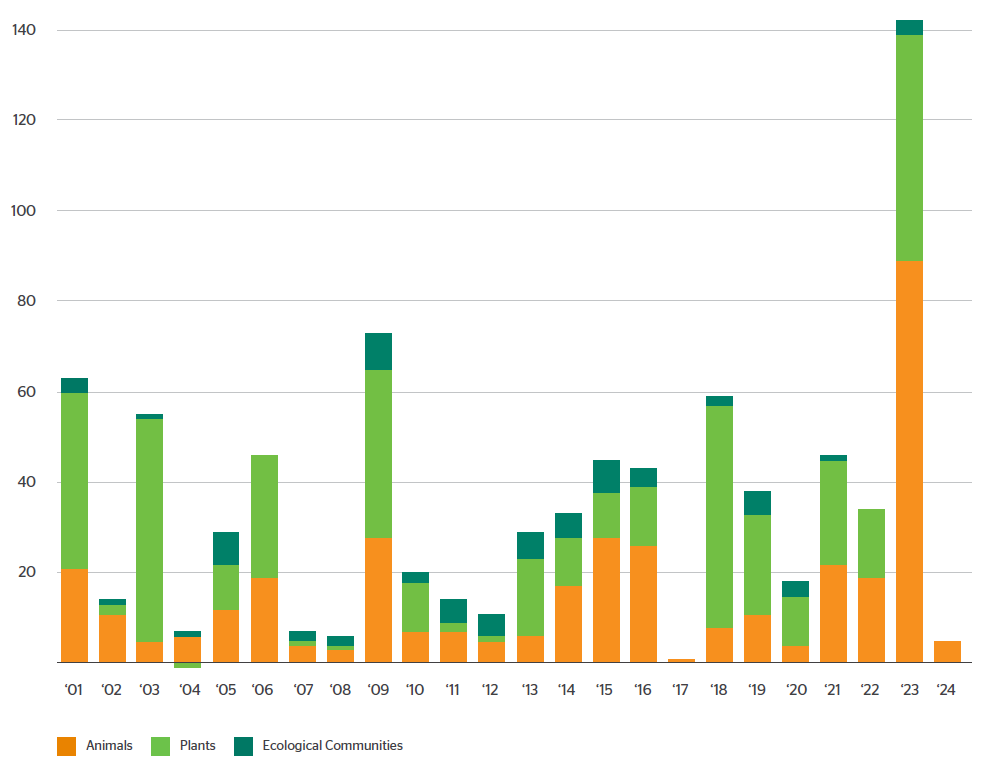
Graph showing additions and uplistings to the national Threatened Species and Ecological Communities lists, minus deletions and downlistings, for each year after the list was established. Image credit: ACF
Read the ACF's Extinction wrapped 2023 report
Total numbers on the EPBC threatened species list - As of 17 January 2024 there are:
- Fauna 654
- Flora 1452
- Ecological Communities 106
Total 2212
Key Facts:
- 144 species and ecological communities were added to Australia’s threatened species list, with a total of 2212 Australian plants, animals and ecosystems now threatened with extinction.
- 11 species were ‘uplisted’ - in other words, assigned to a category closer to extinction.
- 2 species were downlisted, but even then the news was not good, as they were both downlisted on technicalities, not because of genuine recovery of the species.
- 10,426 hectares of habitat destruction was approved under our national nature laws across 44 projects. That is equivalent to clearing the size of the Melbourne Cricket Ground 5000 times over.
- 4 new gas projects were approved and 4 new coal projects were approved under our national nature laws, along with dozens of variations to existing fossil fuel projects.
- Our national nature laws only stopped one project from being approved - a Central Queensland thermal and coking coal project.
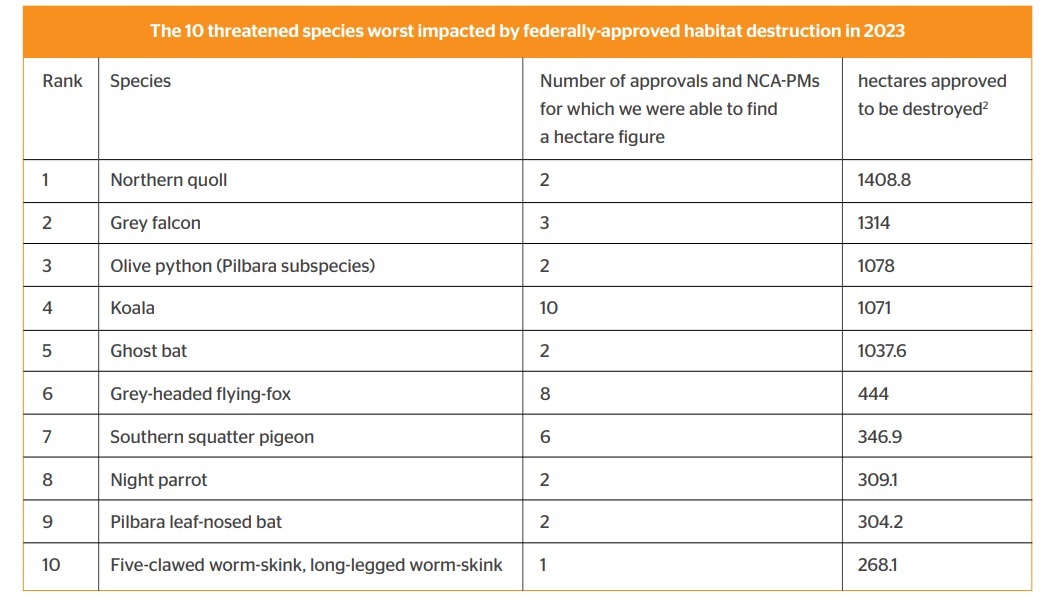
The 10 threatened species worst impacted by federally-approved habitat destruction in 2023. Graphic: ACF
Supporting The Bushfire Recovery Of The South-Eastern Glossy Black-Cockatoo
January 23, 2024: BirdLife Australia
In September 2023, volunteer citizen scientists took part in the Great Glossy Count – collecting important data on the South-eastern Glossy Black-Cockatoo population and their feeding habitat.
This data provides an invaluable insight into how this threatened subspecies is faring, and helps support their bushfire recovery and conservation across QLD, NSW, the ACT and Victoria.
And now, the results are in, summarised in the infographic below.
Thank you to our volunteer citizen scientists and our partners, the Glossy Black Conservancy, for helping make the second Great Glossy Count a success!
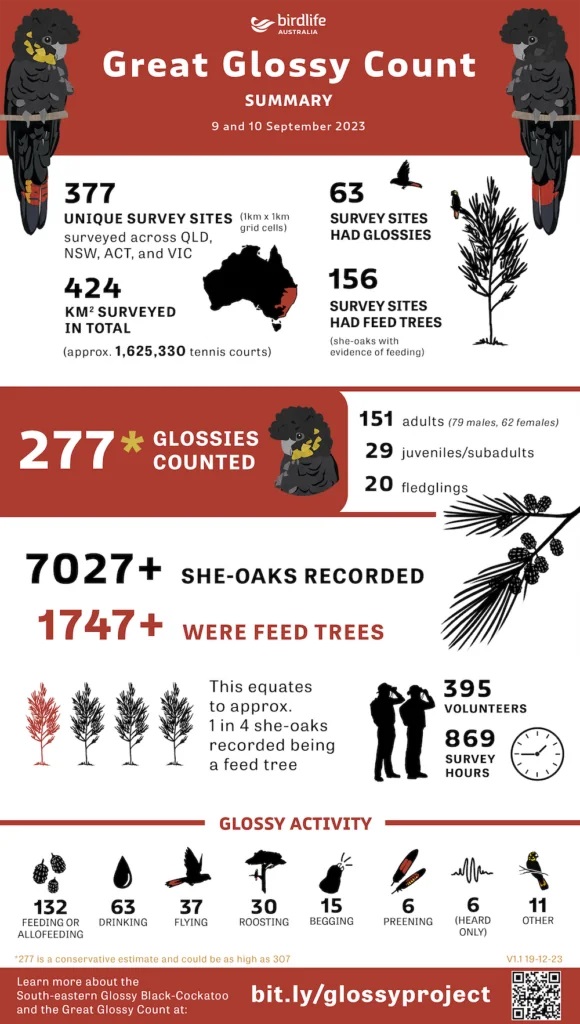
Key findings:
- 395 volunteer citizen scientists took part in the 2023 Great Glossy Count
- They covered 377 unique survey sites across QLD, NSW, ACT and VIC
- Of these, 63 survey sites had Glossies, and
- 156 survey sites had feed trees
- Volunteers counted a total of 277 birds – more than double the number of Glossies counted in 2022.
Count Glossies year round with Birdata
While the Great Glossy Count may be over, you can continue to report any Glossy Black-cockatoo sightings with Birdata. This data informs our ongoing conservation work and helps us understand and protect these remarkable birds.
NOT Supporting Habitat For Critically Endangered Fauna-Flora Species: Approved For Development ''Wallum'', Brunswick Heads Is Another 'Zombie' DA's Still Facilitating Extinctions For Developers Profit, Including The South-Eastern Glossy Black-Cockatoo
A 30-hectare site at 15 Torakina Road, next to the Bayside housing estate, at Brunswick Heads, home to scores of native trees and flowers, which provide food and shelter to koalas, black cockatoos, gliders and the ‘vulnerable’ Wallum froglet, has been approved for broad scale clearing and development.
The local community, which has been fighting for decades to save the site, has recently stepped up its campaign to its local council - Byron Shire Council - whch ultimately has been overruled by one of the NSW State Coalition Government instituted Planning Panels, to which any developer of larger DA's may apply.
Clarence Property Diversified Fund (CPDF), a Developer company, acquired the site in February 2021. A DA was proposed by Clarence Property and was approved by the unelected body, the Northern Regional Planning Panel in May 2023. The panel determines large developments deemed ‘significant’, and as such, bypasses the due processes of locally-elected councils.
‘Wallum Estate’ features 124 residential lots, three medium density lots and a series of roads.
With public consultation for the development taking place during the worst of the Covid pandemic, Save Wallum say the public were denied the right to have their say.
Save Wallum’s spokesperson James Barrie told The Echo in December 2023, ‘There has been a 25-year history of ecologist opposition to this development that has been ignored and even extinguished in the name of developer rights’.
‘It’s only that the community has now coordinated significant vocal opposition to this development, after learning about what they stand to lose at the eleventh hour, that this is getting the attention it deserves’.
Veteran environmentalist, Nan Nicholson, said, ‘This place is extraordinarily valuable as part of the state’s coastal ecosystems’.
‘These systems have dwindled so rapidly in the past 20 years, that any further encroachment has to be seen as “extremism”.
‘As habitats collapse and species extinctions accelerate, it is not unreasonable to say “not one hectare more can be lost”.
‘If any councillors believe that one should pick one’s battles and fight only when assured of winning, then remember that we were told exactly that when we started campaigning to save the Terania Creek rainforest 50 years ago.
‘Not only was Terania Creek rescued but 120,000 ha of rainforest in NSW were saved as well’.
The Byron Shire Council decided to defer agenda item (13.12 from the Dec 14th Ordinary Council Meeting), until early in the new year - the next Ordinary BSC meeting, which will be in February, due to the summer break.
''The 563 pages report presented to Council by Clarence Property, included the (once again) revised Vegetation MP, Wallum Froglet MP, Storm and Groundwater MP and the new Hollows Nesting Boxes MP. How on earth Councillors were supposed to have read that amount of information, let alone have any understanding of the changes and amendments from previous versions, is incomprehensible. '' stated the Save Wallum Group
Luckily, this was the view of the Councillors and they have asked for more time to consider the reports, deferring the decision. It was pointed out by Save Wallum during the Council meeting on the 14th December, that there were many concerning issues and contradictions with the information in the various documents.
Some of the multitude of issues Save Wallum found in the report, included:
- Stormwater management access to the new drainage system encroaching on the required Buffer Zone for the pre-exisiting natural water course running through the centre of the property - where the Wallum Froglet and various threatened aquatic species live
- "Offset" plantings being proposed ON the Crown Road, which is not allowed, as they can be cut down at any point the Crown Road access may be reinstated
- The issue of shading over the proposed artificial Wallum Froglet ponds, whereby the Wallum Froglet MP requires any tree making shade over the ponds be removed
- This will also mean any 'retained' high conservation value trees in the Wallum Froglet pond areas that are supposed to be kept, will also be removed
- Additionally, any new 'offset' seedlings that grow to make shade over the ponds, will also be required to be cut down.
''Mayor Lyons argued in the Council meeting its was not Council's jurisdiction to have an opinion on these reports as Council is not the Consent Authority - ie not the ones making the DA decision, as this was done by the Northern Region Planning Panel (NRPP) in May this year, however this flawed and controversial Zombie DA process still requires Byron Council to accept these reports - as if somehow they are not involved? ''
''The Byron Shire Council was also the 'authority' whose staff made the damning and inaccurate report to the NRPP (April 2023), advising them that there were no issues with this DA - that BSC report is on the NSW Planning Portal (search DA 10.2021.575.1).'' Save Wallum stated
''It is a legacy of poor NSW planning policy that any Zombie DA be allowed to proceed. NSW is the only state in Australia that has such an archaic and ecologically devastating process in place. Zombe DAs allow developers to side step current environmental standards of impact assessment which would render these proposed developments unacceptable.''
Byron Shire Council's December 2023 Meeting Minutes notes Save Wallum also presnted their own document to the December 2023 council meeting:
...the document "Wallum Development Site" [#E2023/131707] presented by Save Wallum Inc and authored by several respected and qualified ecologists with working knowledge of the site, and that it states at its Point 3:
the proposed development will have significant impacts on no less than nine (9) species listed under the EPBC Act, or their habitat, and one (1) Endangered Ecological community. These species are the koala (Endangered), the south-eastern glossy-black cockatoo ( Vulnerable), Wallum sedge frog (Vulnerable), Mitchell’s Rainforest snail (Critically endangered), Long-nosed potoroo (Vulnerable), Regent Honeyeater (Critically endangered), Swift parrot (Critically endangered), Grey-headed flying fox (Vulnerable), Australasian bittern (Endangered) and Coastal Swamp Sclerophyll forest of NSW and SE Queensland (Endangered). Several of these species and ecosystems are also listed under NSW threatened species legislation..'
Save Wallum states there are, all up, 24 threatened species calling the Wallum home.
Success For Regent Honeyeater Breeding Program
January 22, 2024
The successful hatching of a trio of chicks is great news for a program releasing zoo-bred regent honeyeaters to integrate and breed with wild populations of the rare songbird.
The chicks are the first confirmed zoo-wild offspring from the NSW regent honeyeater recovery program, which released 14 zoo-bred birds in November during the spring breeding season in the Greater Blue Mountains region.
The hatching comes 2 years after the mother, a zoo-bred bird tagged ‘RMPP’, was released into the Tomalpin Woodlands in the Lower Hunter Valley.
Since that time, RMPP has flown more than 134 km west to Capertee National Park, where she and a wild male saw 2 of their chicks fledge last spring. The fledglings were last sighted at the end of November and it is hoped they have joined the wild flock of birds. RMBO, another zoo-bred female released along with RMPP in October 2021, was spotted in November with a wild-born partner at a second NSW breeding site in the Upper Hunter.
RMBO hatched and raised a chick with a zoo-bred male in the Tomalpin Woodlands after their release in 2021 – the first zoo-bred regent honeyeaters to successfully breed in the wild in New South Wales.
A third zoo-bred female, ORKM, also paired with a wild male at another location in the Capertee Valley. She was seen twice before moving on, away from the monitoring team’s survey sites.
This year’s spring breeding event of the critically endangered regent honeyeater is the largest in Capertee National Park and surrounds since 2017, with more than a dozen nests and at least 16 fledglings accounted for.
With as few as 250 to 300 regent honeyeaters estimated to remain in the wild, every successful breeding event is critical.
The regent honeyeater breeding program is a conservation partnership between the NSW’s Government’s Saving our Species program, Taronga Conservation Society Australia and BirdLife Australia.
The program has seen the release of 140 zoo-bred birds in New South Wales.
All sightings of regent honeyeaters should be reported to BirdLife Australia on 1800 621 056 or woodlandbirds@birdlife.org.au.
Parliamentary Secretary for Climate Change and the Environment Trish Doyle said:
'It is exciting news that we have the first confirmed fledglings from a pairing of zoo-bred and wild regent honeyeaters.
'With such low numbers of these magnificent birds remaining in the wild, every successful breeding event and each fledgling gives us hope we have taken another step toward saving this critically endangered species.
'It’s wonderful to know the Greater Blue Mountains region is home to this critically endangered bird and we are committed to conserving its habitat.'
BirdLife Australia’s Regent Honeyeater Recovery Coordinator Mick Roderick said
'To see 3 zoo-bred females paired with wild males this Spring, from 2 separate releases in the Tomalpin Woodlands is just so incredibly pleasing, especially when one of them successfully fledged two chicks.
'It is entirely possible that the male birds would have gone unpaired, given the male bias in the wild population; these are the exact results we are after in the zoo-bred release program.'
Taronga Regent Honeyeater keeper Kara Stevens said
'Here at Taronga we put so much work into ensuring we are breeding robust and healthy regent honeyeaters and that they are fit for release into the wild. This includes selecting the right birds to release.
'It is therefore so rewarding to hear of successful pairings of zoo-bred birds with wild birds. Knowing that these birds are adding new offspring to an incredibly endangered wild population is so special and the reason why we do what we do.'
Dr Kim Maute, NSW Government’s Saving Our Species principal ecologist stated;
'The regent honeyeater is one of Australia’s rarest birds and has few breeding areas left.
'That is why intact forest and grassy woodlands that can support a successful breeding event need to be protected and restored.'
Failing To Check Boundaries Costs Koonyum Range Local Approx. $22,000 For Clearing Vegetation In National Park
January 11, 2024
A local Koonyum Range resident has been convicted and fined by Mullumbimby Local Court for numerous offences against the National Parks and Wildlife Act 1974 and National Parks and Wildlife Regulation 2019.
The resident failed to check property boundaries before clearing 0.35 ha of native vegetation and constructing an unauthorised building in Mount Jerusalem National Park. With fines and a costs order amounting to nearly $22,000 (including a remediation order of $8,000), the court found the local resident had direct responsibility for the offences.
Mount Jerusalem National Park is home to several endangered and vulnerable plants and animals and this sentence is a reminder that native vegetation laws must be taken seriously. The seriousness of the offences is reflected in the penalty imposed by the court which, in addition to the fines and costs, included two community correction orders of 12 months.
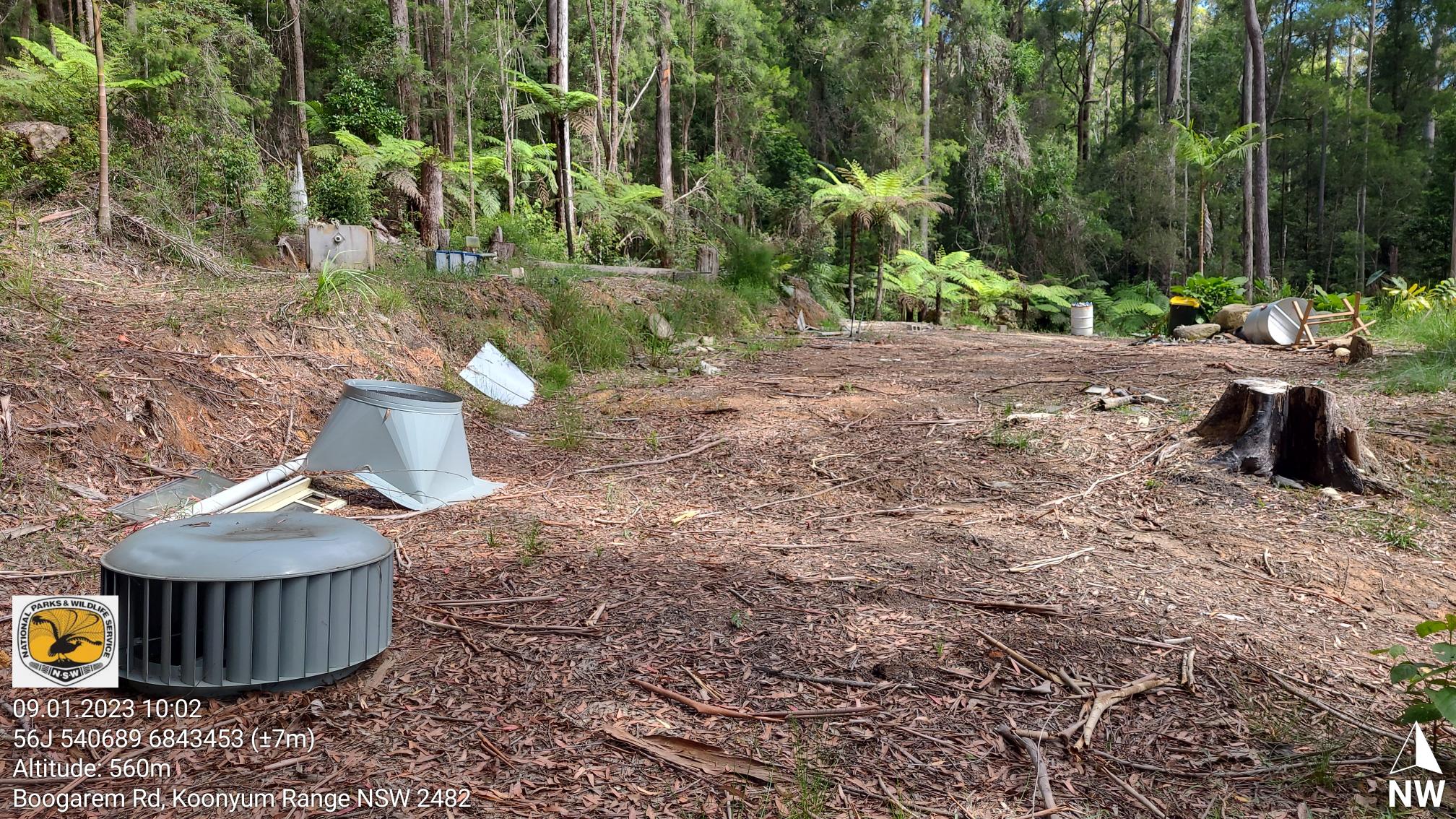
Cleared area of Mt Jerusalem National Park following removal of illegal dwelling. Photo NPWS.
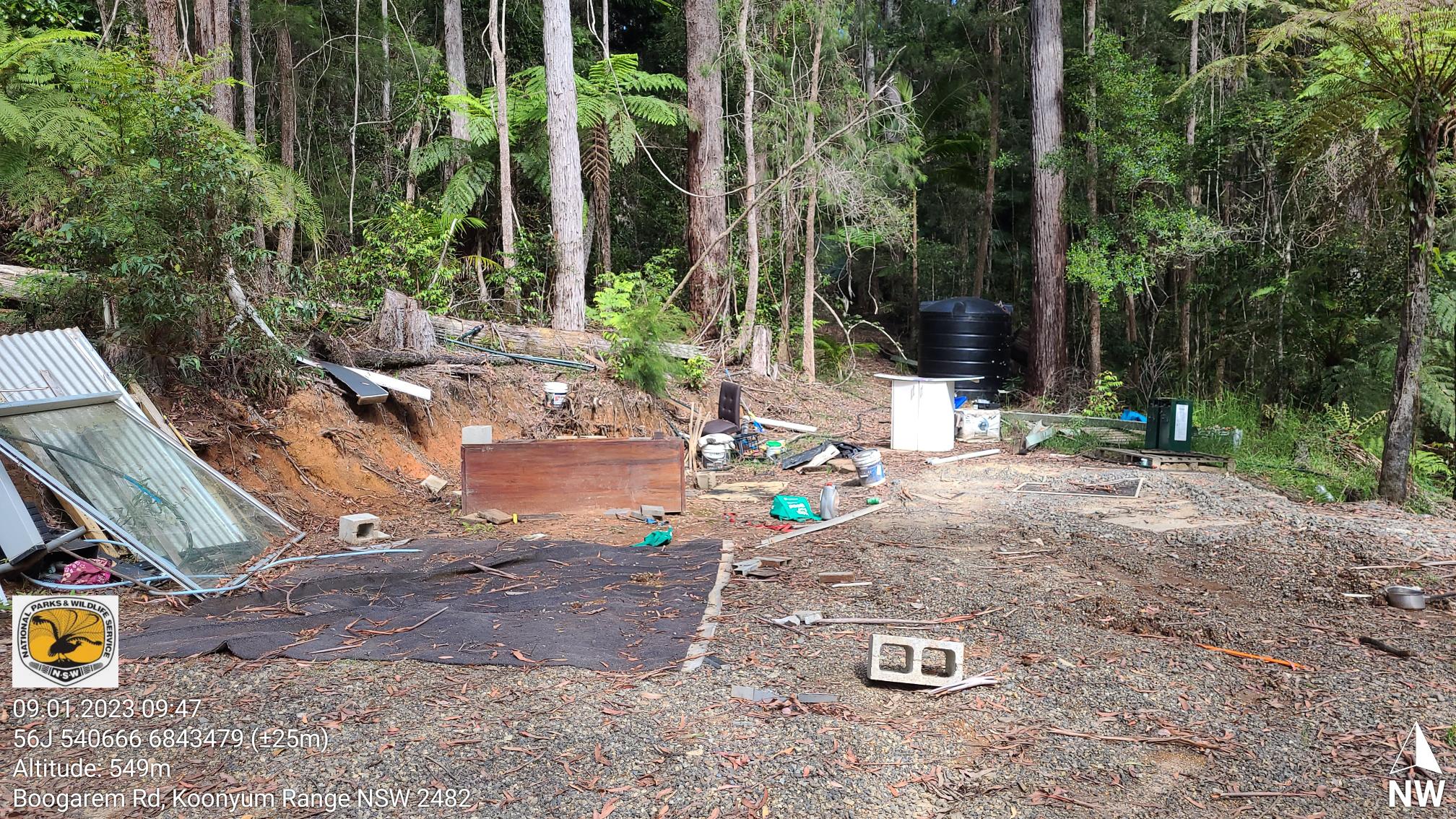
Cleared area of Mt Jerusalem National Park following removal of illegal dwelling. Photo NPWS.
NSW National Parks and Wildlife Service (NPWS) Area Manager Jenny Atkins said:
'The felling of forest oaks impacts directly on the habitat and food resources of the glossy black cockatoo, a listed vulnerable species known to occur in the area.
'Trees are highly valued in the Byron Shire and their removal, without permission, is not tolerated by NPWS, or the broader community. The fines and the community correction orders imposed by the magistrate in the Mullumbimby Local Court support this.
'This sends a strong and very clear message to people that before you clear land or cut down any trees or do any building work, even on your property, you should know where the property boundaries are.
'You should always check with the local council to see what is allowed and what is not.'
Temporary Fishing Closure To Protect Endangered Fish: Central Tablelands Region
From January 16 a three-month Section 8 fishing closure under the Fisheries Management Act 1994 (FMA) is in place in the Central Tablelands Region, in sections of the Winburndale Rivulet and its upstream tributaries, including Winburndale Dam.
During the closure, fishing by any method is prohibited, in the following waters located to the northeast of Bathurst, specifically:
Winburndale Dam, sections of Winburndale Rivulet and its tributaries (the Gulf Stream, Mitchells Creek, Lagoon Creek, McCanns Gully, Kirkconnell Creek, Bull Gully, Scotts Creek, Bobs Creek, Tindales Flat Creek, Roundbody Gully and Black Spring Gully), and the section of the Winburndale Rivulet from the Winburndale Dam wall at 33.38972222°S 149.77694444°E to 800 metres downstream from that dam wall at 33.38916667°S 149.76833333°E.
NSW Department of Primary Industries (NSW DPI) Program Leader, Habitat & Threatened Species Sam Davis said the closure was put in place as a precaution to reduce the risk of potential spread of epizootic haematopoietic necrosis virus (EHNV) and to help preserve an important Macquarie Perch population.
An important population of Macquarie Perch, part of a joint recovery program with NSW DPI and stakeholder groups, are located in a sub catchment near the outbreaks.
“We know that EHNV has caused Redfin Perch deaths in Lake Wallace, Oberon Dam, Lake Burrendong and Waratah Dam in Orange,” Ms Davis said.
“Macquarie Perch are extremely susceptible to the EHNV, so it’s important we take all the necessary precautions in order to protect this endangered native species.
“While Macquarie Perch are vulnerable to this virus, importantly the virus is no threat to human health.
“The temporary three-month Section 8 closure to the Winburndale catchment will limit the potential of human vectors being involved in the spread of EHNV.”
Recreational Fishing NSW Advisory Council representative for North West Inland Matt Hansen said the temporary closure was to seek further protection for the endangered Macquarie Perch population in the Central Tablelands region.
“An incredible amount of work has been undertaken by NSW DPI and numerous volunteer stakeholder groups in the region to support the recovery of this important population of endangered Macquarie Perch,” Mr Hansen said.
“Any protective measure that can be put in place should be done so, as the population heads towards breeding size, maturity and natural recruitment.”
For areas not subject to fishing closures, fishers can help reduce the spread of EHNV by making cleaning part of their routine by washing and completely drying vessels and niche areas, including live wells, water inlets and outlets and anchor wells, trailers and fishing gear after use, particularly before moving to new waterways.
Fishers are reminded that possession of live Redfin Perch is illegal in NSW, and that use of Redfin as bait in any NSW inland waterway is illegal.
EHNV is listed as a notifiable matter under Schedule 1 of the Biosecurity Regulation 2017. This means it is illegal to buy, sell or move the disease or infected fish. It is required by law to report any sign of EHNV to NSW DPI via the 24 hour Emergency Animal Disease Hotline 1800 675 888 or email on aquatic.biosecurity@dpi.nsw.gov.au.
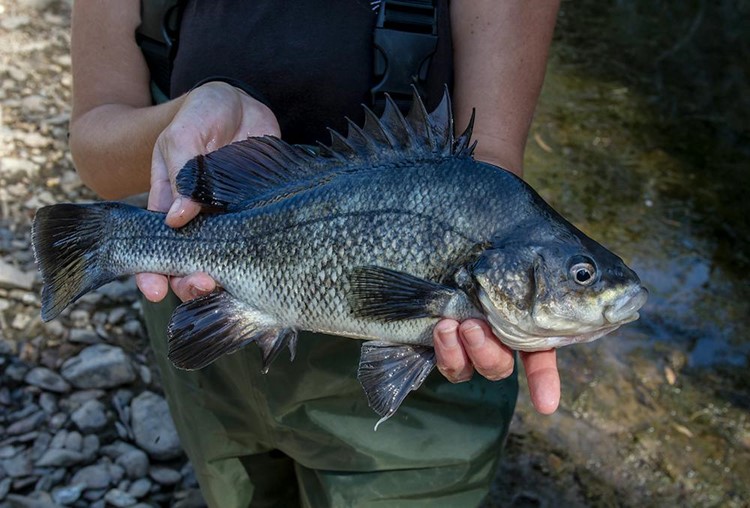
Macquarie Perch. Photo: NSW DPI
The Murray-Darling population of Macquarie Perch were once distributed throughout the upland reaches of rivers west of the Great Dividing Range. They have become locally extinct from the Macquarie catchment and have now been reintroduced into an isolated sub-catchment near Bathurst as part of a joint recovery effort between NSW DPI, Central Acclimatisation Society and recreational fishers.
Wind Farm Approved For Jerilderie
December 22, 2023
The NSW Government has approved the Yanco Delta wind farm in the state’s South West Renewable Energy Zone (REZ). This will provide clean, renewable energy to power up to 700,000 homes a year, the government has stated.
The 1500-megawatt wind farm will be developed by Virya Energy, a Belgian company, around 10 kilometres north-west of Jerilderie on a 33,000-hectare site in the Murrumbidgee and Edward River Local Government Areas.
The project will involve the construction of 208 wind turbines with a maximum tip height of 270 metres, an 800 megawatt battery energy storage facility and grid connection infrastructure.
Public exhibition of the project’s Environmental Impact Statement saw overall support, and the Department of Planning and Environment has been engaging closely with local councils, residents and government agencies.
The project is estimated to save between 2.8 million and 5 million tonnes of greenhouse gas emissions every year, making a significant contribution to the state’s Net Zero targets and Electricity Infrastructure Roadmap.
Potential impacts would be managed through strict conditions including road upgrades and maintenance, implementation of management plans and a range of mitigation and adaptive management measures.
The company has published a website about the project at: https://yancodelta.com.au/
Minister for Climate Change and Energy Penny Sharpe said:
“This is fantastic news for New South Wales and for the South West of the state. It means more clean energy, more jobs and local investment and we’re another step closer to achieving our Net Zero targets.
“Over the next decade, three of the 4 remaining coal fired generators in New South Wales are scheduled to retire, removing around 7,400 megawatts of dispatchable electricity generation from the system.
“Renewable energy developments like this one in the South West Renewable Energy Zone are critical to our energy future, so we can ensure there is enough renewable energy to replace aging coal-fired power stations.”
Update On Platypuses Reintroduced To Royal National Park
December 22, 2023
Six months after the historic reintroduction of platypuses to Royal National Park south of Sydney, the iconic Australian animals are thriving in their new habitat, the government has stated.
Ten platypuses were released in May, after being locally extinct for 50 years. Each of them carries an acoustic tag which pings listening receivers up and down the rivers of the Royal.
The latest data show nine of the ten animals are adapting well to their environment. The tenth platypus has ventured beyond the team’s tracking capabilities, which she has done before, and the team is confident she is exploring creeks she has previously visited.
Visitors to the Royal National Park are now regularly reporting platypus sightings. This underscores the value of conservation efforts in connecting people with nature and raising awareness about the importance of preserving Australia's unique wildlife.
This project is a collaboration between the Platypus Conservation Initiative (UNSW Sydney), WWF-Australia, NSW National Parks Wildlife Service and Taronga Conservation Society. The project is guided by a commitment to preserving the Royal National Park’s unique biodiversity and supporting the long-term success of the platypus population.
Plans are underway to conduct comprehensive surveys in the park next year to assess the breeding success and overall health of the platypus population. The goal is to confirm whether the reintroduced platypuses have successfully reared young, which would mark another milestone in this ambitious conservation project.
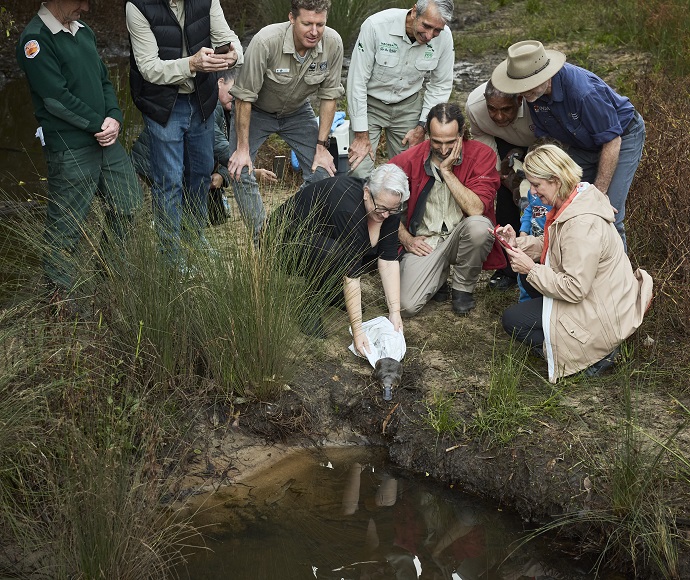
Platypus (Ornithorhynchus anatinus) release at Royal National Park Credit: UNSW
Minister for Climate Change and the Environment Penny Sharpe said;
'These wonderful native animals are facing multiple threats in the wild, and there is an increasing need to actively manage their conservation for the ongoing survival of their populations.
'After taking part in the reintroduction program in the Royal National Park six months ago, I am thrilled to hear they are thriving in their new habitat and venturing deep into the park.'
Lead Researcher Dr Gilad Bino, UNSW’s Centre for Ecosystem Science said;
'The reintroduction has exceeded our expectations. The platypuses have adapted exceptionally well to the Royal National Park, a testament to the robustness of both the species and the habitat.
'We are closely monitoring the one platypus which has ventured beyond our monitoring capacity, but she will no doubt reconnect soon.'
Platypus researcher Dr Tahneal Hawke, Centre of Ecosystem Science stated;
'Recent water quality and macro-invertebrate surveys show the system is in generally good condition, offering suitable resources for the platypuses. As they enter their breeding season, we are optimistic they will breed.'
WWF-Australia conservation ecologist Patrick Giumelli said;
'Our tracking data is providing fascinating insights into how the platypuses are interacting with their new habitat. We’re learning so much from these ten animals that will help inform future reintroductions of the species.
'We need to take these bold actions to reverse the decline of this Australian icon and secure its future.'
‘It’s not game over – it’s game on’: why 2024 is an inflection point for the climate crisis
Wesley Morgan, Griffith UniversityIn 2024, global climate trends are cause for both deep alarm and cautious optimism. Last year was the hottest on record by a huge margin and this year will likely be hotter still. The annual global average temperature may, for the first time, exceed 1.5°C above pre-industrial levels – a threshold crucial for stabilising the Earth’s climate.
Without immediate action, we are at grave risk of crossing irreversible tipping points in the Earth’s climate system. Yet there are reasons for hope.
Global greenhouse gas emissions may peak this year and start falling. This would be an historic turning point, heralding the end of the fossil fuel era as coal, oil and gas are increasingly displaced by clean energy technologies.
But we must do more than take our foot off the warming accelerator – we must slam on the brakes. To avoid the worst of the climate crisis, global emissions must roughly halve by 2030. The task is monumental but possible, and could not be more urgent. It’s not game over – it’s game on.
Our Planet In Peril
Last year, Earth was the hottest it’s been since records began. The onset of El Niño conditions in the Pacific Ocean helped drive global temperatures to new heights. The European Union’s Copernicus Climate Change Service found 2023 was 1.48°C warmer than the pre-industrial average.
Warmer global temperatures in 2023 brought extreme events and disasters worldwide. They included deadly heatwaves in the northern hemisphere summer, devastating wildfires in Canada and Hawaii, and record-breaking rains in many places including Korea, South Africa and China.
Last year was also the warmest on record for the world’s oceans. More than 90% of heat from global warming is stored in the world’s oceans. Ocean temperatures are a clear indicator of our warming planet, revealing a year-on-year increase and an acceleration in the rate of warming.
The warming oceans meant for parts of 2023, the extent of sea ice in the Earth’s polar regions was the lowest on record. During the southern hemisphere winter, sea ice in Antarctica was more than one million square kilometres below the previous record low – an area of ice more than 15 times the size of Tasmania.
This year may be hotter still. There is a reasonable chance 2024 will end with an average global temperature more than 1.5°C above pre-industrial levels. Governments have agreed, through the Paris Agreement, to work together to limit global warming to 1.5°C, because warming beyond this threshold poses enormous dangers for humanity.
The agreement refers to long-term trends in temperature, not a single year. So breaching 1.5°C in 2024 would not mean the world has failed to meet the Paris target. However, on long-term trends we are on track to cross the 1.5°C limit in the early 2030s.
As the planet warms, we are now at grave risk of crossing irreversible “tipping points” in Earth’s climate system – including the loss of polar ice sheets and associated sea-level rise, and the collapse of major ocean currents. These tipping points represent thresholds which, when crossed, will trigger abrupt and self-perpetuating changes to the world’s climate and oceans. They are threats of a magnitude never before faced by humanity – one-way doors we do not want to go through.
The Age Of Fossil Fuels Will End
In 2024 there are also many reasons for hope.
At the COP28 United Nations climate talks in December 2023, governments from nearly 200 countries agreed to accelerate the transition away from fossil fuels in this crucial decade. The burning of fossil fuels is the primary cause of the climate crisis.
We have the technology needed to replace fossil fuels across our economy: in electricity generation, transport, heating, cooking and industrial processes. In fact, surging market demand for clean energy technologies – wind, solar, batteries and electric cars – is now displacing polluting technologies, such as coal-fired power and combustion engine vehicles, on a global scale.
The world added 510 billion watts of renewable energy capacity in 2023, 50% more than in 2022 and equivalent to the entire power capacity of Germany, France and Spain combined. The next five years are expected to see even faster growth in renewables.
Sales of electric vehicles are also booming – growing by 31% in 2023 and representing around 18% of all new vehicles sold worldwide. In Australia, sales of electric vehicles doubled last year and are expected to continue to grow strongly.
Toward A Peak In Global Emissions
The accelerating shift toward clean energy technologies means global greenhouse gas emissions may fall in 2024. Recent analysis from the International Energy Agency (IEA), based on the stated policies of governments, suggests emissions may in fact have peaked last year. The finding is supported by analysis from Climate Analytics, which found a 70% chance of emissions falling from 2024 if current growth in clean technologies continues.
A growing number of major economies have passed their emissions peaks, including the United States, the European Union, the United Kingdom and Japan.
China is currently the world’s biggest emitter, contributing 31% of the global total last year. But explosive growth in clean energy investments mean China’s emissions are set not only to fall in 2024, but to go into structural decline.
What’s more, China is currently undergoing a boom in clean energy manufacturing and a historic expansion of renewables – especially solar. Similarly explosive growth is expected for batteries and electric vehicles.
A peak in global emissions is cause for optimism – but it won’t be nearly enough. Greenhouse gas emissions will still accumulate in the atmosphere and drive catastrophic warming, until we bring them as close to zero as possible.
The Intergovernmental Panel on Climate Change warns global emissions must roughly halve by 2030 to keep the 1.5°C goal within reach. The task is monumental, but possible.
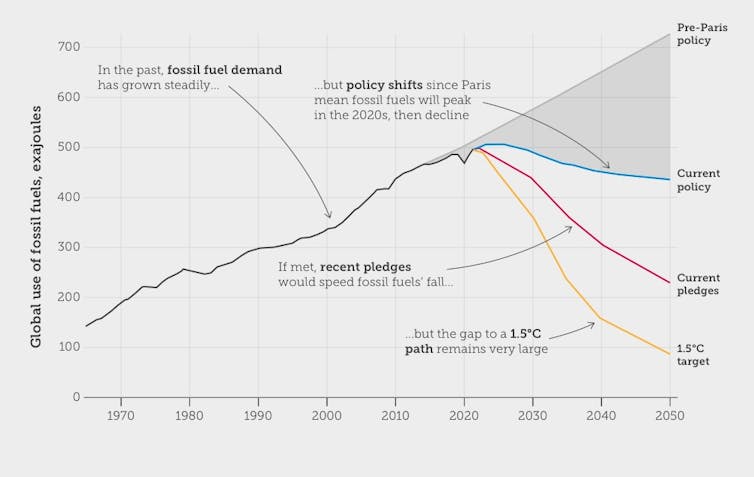
Next Steps For Australia
Australia is making great strides in rolling out renewable energy. But state and federal governments are undermining this progress by approving new fossil fuel projects.
Every new coal, oil or gas development endangers us all. Australia must urgently reform its national environmental law – the Environmental Protection and Biodiversity Conservation Act – to end new fossil fuel developments.
Similarly, Australia’s gains in renewable energy have been offset by rising emissions in other sectors, notably transport. It’s time to implement long-promised fuel efficiency standards and get these emissions down.
Beyond these immediate next practical steps, Australia has much work ahead to shift from fossil fuel exports to clean alternatives.
The opportunity for Australia to play a major positive role in the world’s decarbonisation journey is undeniable, but that window of opportunity is narrowing fast.![]()
Wesley Morgan, Research Fellow, Griffith Asia Institute, Griffith University
This article is republished from The Conversation under a Creative Commons license. Read the original article.
When floodwater reaches the sea, it can leave a 50 metre thick layer of brown water – and cause real problems

Over this wet summer, Melburnians and Sydneysiders have had to think twice about cooling off at their local beach. Heavy rainfall has swollen rivers and pumped pollutants, nutrients and murky fresh water far out to sea. Swimmers at Port Phillip Bay beaches are emerging coated in brown goo, while Sydney’s seas were contaminated last week.
During 2022, floods repeatedly hit Australia’s eastern seaboard, causing an estimated A$3.5 billion in damage and tragic loss of life. In Sydney, it was the wettest year on record, with 2.2 metres of rain falling in the year, twice as much as usual. The heavy rainfall event in March–April dropped more than 600 millimetres of rain alone.
We don’t normally think about what happens to floodwater once it pulses out to sea. But we should. Floodwater is fresh. When it hits the sea in large volumes, it lowers the coastal ocean’s salinity. In our new research, we found floodwaters in 2022 led to 116 extreme low salinity days off Sydney – ten times more than the annual average. Extreme low salinity days are those that fall into the bottom 5% of salinity values ever measured at this location.
Normally, this effect clears within six days. But in 2022, extreme low salinity persisted for months in the coastal ocean. These plumes of freshwater extended as far as 70 kilometres offshore – five times further than original estimates. You could see them from space. For fish, this is confusing and dangerous. For kelp forests or sponge gardens, it can be lethal.
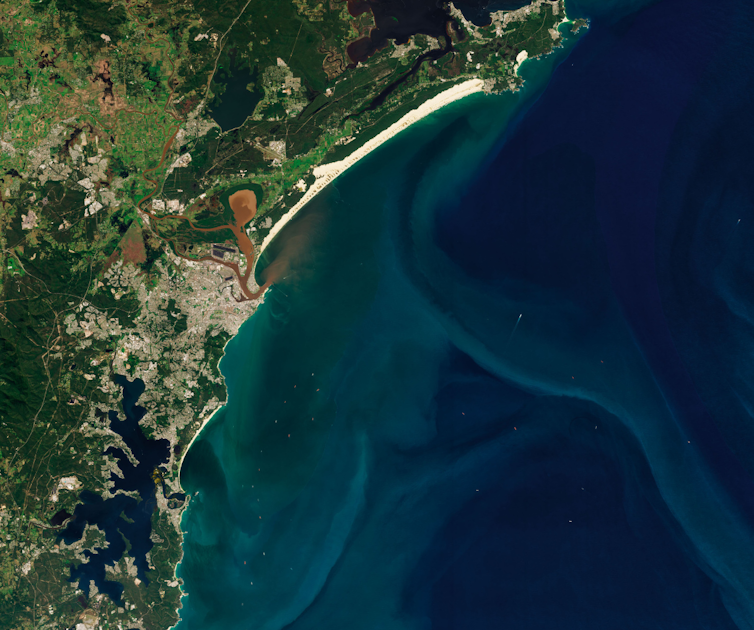
Unprecedented Floodwaters, Unprecedented Impact
Why do we care about very low salt levels in our coastal seas?
First, changing salinity levels let us track where floodwaters are headed. This is important, as floodwater often carries pollutants, sediment and other contaminants from the land into the ocean.
Second, when large volumes of freshwater arrive, it can actually change the density of the ocean. Saltwater is heavier (more dense) than freshwater, which is why some seabirds can find a layer of drinking water far out at sea when it rains heavily.
The ocean’s density depends on a combination of water temperature and salinity. Off Australia’s east coast, this density is usually influenced more by temperature. But during 2022, we saw something change. For the first time, we saw the density of seawater was becoming controlled by salinity.
Rather than the hottest temperatures always being seen at the surface, the heat could be anywhere in the water column, as the weight (or density) of the water was mostly being controlled by how much salt it contains, not how warm it was.
You might look at the sea and imagine it’s the same all the way down. But in fact, there are very real changes as you go down the water column, and there are distinct layers of water.
What this pulse of floodwater did was change the structure and layering of the water column in unusual ways. In this coastal ocean, there’s usually a light layer of warm water at the top and colder water below it. During 2022, the normal ocean water was replaced by two additional layers of fresher water from successive floods.
The 50-metre deep layer of fresh water didn’t simply mix with salt. Instead, the floodwaters remained off our coastline for months, trapped between the land and the warm, swiftly flowing waters of the East Australian Current.
What Does Freshwater Do To Ocean Ecosystems?
Some coastal species such as bream tolerate freshwater well. But others don’t like it at all. We expect the sudden appearance of a very large freshwater layer would have forced fish to move. The sediment and pollutants in the floodwaters can disrupt normal food supplies for the ocean’s inhabitants.
We already know floodwater can destroy kelp forests or cover verdant seagrass meadows with sediment, affecting turtles and dugong. This, in turn, can temporarily slash the catch from some fisheries.
How Did We Track These Changes?
Off the eastern coast lies an advanced network of ocean sensors, deployed as part of Australia’s Integrated Marine Observing System. For our work, we used data from oceanographic moorings – sensors anchored to the floor and extending through the water column – as well as underwater gliders, an underwater drone packed with instruments.
Moorings give us detailed, consistent information but only at a few locations. Gliders travel hundreds of kilometres up and down the length of the coastline in a zigzag pattern, from the coast offshore and back, and diving from the surface to the bottom around every 200 metres.
We used data from moorings, gliders, satellite data and estuary monitoring sensors run by the New South Wales Department of Planning and Environment to build up a picture of where floodwaters had moved.
Even though we have a good system of sensors, our observing systems are geared towards monitoring temperature rather than salinity, meaning that this type of analysis can only be performed in certain parts of the coast that have the right instruments.
Climate Change Is Worsening Floods. Could It Weaken Coastal Ocean Salinity?
Globally, there’s little data on how salty our coastal seas are – and what floodwaters are doing, especially in areas where large rainfall is intermittent, such as eastern Australia. In 2022, severe floods also hit Pakistan and South Africa.
These regions don’t yet have ocean observing systems capable of detecting and tracking the impact of floodwaters on the ocean. We don’t know what these unprecedented floods are doing to ocean ecosystems – but it’s important we find out.
Extreme rainfall events are expected to increase globally due to climate change. We will need to determine what’s happening down there to plan our response and adapt as best we can. ![]()
Neil Malan, Research associate, Climate Change Research Centre, UNSW Sydney and Moninya Roughan, Professor in Oceanography, UNSW Sydney
This article is republished from The Conversation under a Creative Commons license. Read the original article.
It is time to draw down carbon dioxide but shut down moves to play God with the climate
Tim Flannery, The University of MelbourneThe global effort to keep climate change to safe levels – ideally within 1.5°C above pre-industrial temperatures – is moving far too slowly. And even if we stopped emitting CO² today, the long-term impacts of the gas already in the air would continue for decades. For these reasons, we will soon have to focus not only on halting but on reversing global warming.
We can do that in two ways. The first is by “drawdown” – strengthening natural processes on Earth that withdraw CO² from the atmosphere. The second is through vast experiments with the climate known as geo-engineering, some of which sound like science fiction, and could be extremely dangerous if ever tried.
The Dangers Of Some Forms Of Geo-Engineering
Geo-engineering proposals to arrest climate change range from the seemingly sensible – painting our roofs and roads white – to the highly speculative: solar radiation modification, or putting mirrors in space to reflect some of the Sun’s heat away from Earth. Probably the most commonly proposed form of geo-engineering involves putting sulfur into the stratosphere to dim the power of the sun.
The natural 1991 eruption of the Pinatubo volcano in the Philippines showed the effects of sulfur in action. The eruption measurably cooled the Earth’s surface for almost two years.
But we don’t have to wait for an erupting volcano: all we need do is add some sulphur to the emissions of the world’s airline fleet, and release it once planes are in the stratosphere. The sulphur layer, which would also reflect some of the Sun’s heat back to space, would be a relatively inexpensive global cooling mechanism, instantaneous in its effect and implementable right now.
Yet this approach does nothing to remove CO² from the atmosphere, or to reduce the rising acidity of the oceans. It’s like a Band-Aid over a festering sore. And, beyond its cooling effect, its impact on the climate system as a whole is unknown: no one to my knowledge has modelled the effects of using the jet fleet in this way.
No international treaty exists to regulate such experiments. In April 2022, the US start-up company, Make Sunsets, released weather balloons designed to reach the stratosphere, carrying a few grams of sulphur particles. There was no public scrutiny or scientific monitoring of the work. The company is already trying to sell “cooling credits” for future flights that could carry larger volumes of sulphur.
And what if climate change brings mass famine and civil disobedience to China? It is already seeding clouds to make rain on a massive scale. China might think it is doing the right thing by putting sulfur into the stratosphere. But that decision might lead to war with other countries. What if this form of geoengineering affected the monsoon in India and caused famine? We just don’t know what the climatic and political impacts would be.
Drawdown’s Potential To Store Carbon
Drawdown, by contrast, involves withdrawing CO² from the atmosphere and storing it in other planetary organs, such as rocks, oceans or plants. Drawdown is much longer term than geoengineering, and most initiatives are only in the research and development stage. The most advanced and practical, by far, is forest protection and reafforestation.
Today humans emit about 51 billion tonnes of CO² a year. Protecting and regenerating forests draws down 2 billion tonnes a year. Other approaches, such as direct air capture of CO², draw down much smaller volumes.
So forest protection and reafforestation is our best bet for getting us closer to limiting warming to 1.5°C. A recent paper in the Nature journal argues we could draw down as much as 226 gigatonnes by allowing existing forests in areas where few humans live to recover to maturity, and by regrowing forests in areas where they have been removed or fragmented.
We should not ignore other drawdown pathways, however. Seaweed is a promising option for drawing down a billion tonnes or so of CO² by 2050. But we need a lot more scientific research to understand how to do that, and what its wider impacts might be. Today only one commercial kelp farm exists – Kelp Blue, off the coast of Namibia, where four hectares of kelp are not only storing carbon but are used to make biodegradable food packaging and crop stimulants.
Silicate rocks, which are common in many places, including Victoria’s Western District, also offer great hope. Once the rocks are crushed, a kilogram of a mineral they contain, olivine, will sequester 1.5 kilograms of CO² from the atmosphere within a few weeks of being spread on a farm field or put onto a beach.
The crushing speeds up a natural sequestering process of thousands of years. Field trials conducted in Brazil and other countries show using crushed rocks on crops can bring another benefit – significant increases in the yields of corn, cocoa and many other crops.
The problem is that the way we quarry and transport rocks today creates a lot of fossil fuel emissions. Once a farm is more than a few hundred kilometres from the quarry most of the benefit is gone. So until we can decarbonise transport and industrial energy, the benefit of silicate rocks will be minimal.
A process known as “direct air capture” sucks CO² out of the air and either puts it deep into rock strata or uses it for greenhouses or as the basis of concrete, plastic and other products that can sequester carbon long term. Nineteen plants using this technology are already operating around the world, including in Switzerland, the US and Iceland. But again, a lot of industrial capacity and a clean energy to run the plants are needed to get the value.
What The Albanese Government Should Do
For these reasons, the Albanese government should focus its drawdown efforts on forest protection and regrowth. This could be a theme of the UN climate conference Australia is bidding to co-host with Pacific nations in 2026. Our temperate forests contain more carbon per hectare than almost anywhere on Earth. Stopping old-growth logging would be a magnificent contribution to arresting climate change.
The government should also back research and development on seaweed and silicate rocks so that the country’s huge resources can be responsibly deployed in future. Finally, Australia must push urgently for a global treaty to restrain sulphur geoengineering.
Today governments are busy just trying to reduce emissions and haven’t looked closely at drawdown and geoengineering. But things are moving fast, and it’s time to start.![]()
Tim Flannery, Honorary fellow, The University of Melbourne
This article is republished from The Conversation under a Creative Commons license. Read the original article.
How Australia’s huge superannuation funds can do much more to fight climate change, with a little help
Arjuna Dibley, The University of MelbourneFew of us pay much attention to our superannuation. Under the Superannuation Guarantee, employers pay at least 11% of salaries into their employees’ super funds without workers having to do anything.
These accumulating automatic payments have turned the Australian super fund industry into one of the world’s largest, and the fastest-growing. Worth $A3.5 trillion, our superfunds sit alongside funds from Canada, Japan, Netherlands, Switzerland, the United Kingdom and United States to make up 92% of total global pension assets.
But none of these funds are investing enough in the net zero transition. Institutional investors, of which super funds are a vital part, provided less than 1% of all direct private climate change finance globally in 2021/2022- a contribution of around $US6 billion. This is far from the trillions needed every year to finance renewable energy projects, cleaner industrial processes, and replacing fossil fuels in transport, among other initiatives.
At the same time, many Australian funds continue to invest in carbon-producing companies, such as oil and gas, even when they claim to be making “green” investments.
This article outlines reforms the federal government could undertake to encourage super funds to tackle the climate crisis. This would help align the super system with its original purpose: to provide a better standard of living for the millions of us who will retire on a climate-damaged planet.
The Albanese Government’s Sustainable Finance Plan
Treasurer Jim Chalmers is aware of the unmet potential of super funds. Treasury’s Sustainable Finance Strategy, released in November, outlines measures underway or in development to enable more sustainable investment. The Australian Sustainable Finance Taxonomy, for example, helps investors and regulators to identify whether an investment is “green”.
Last month Chalmers held an “Investor Roundtable” that brought together heads of superannuation funds and others to discuss how to scale up investment in climate change.
Funds expressed their intent to make more investments aligned with net zero. Studies consistently show most large Australian funds have pledged to support net zero and established investment targets. Yet they say several regulatory roadblocks hinder them from turning their commitments into action.
The government has said it will make reforms on one roadblock – the funds’ performance-testing framework.
Why Super Funds Rarely Invest In Clean Energy
Because superannuation funds are required by law to invest retirement savings for the best return for their members, they give preference to investments that offer the best financial returns with the lowest level of risk.
Funds see companies that are developing and deploying new technologies or operating in areas of significant public policy change as higher risk. That’s a big reason why new green technologies struggle to attract institutional capital compared to those based on fossil fuels.
Super funds consistently note in annual surveys that the lack of green investment opportunities with the right risk-adjusted return profile is a huge barrier to exapanding climate-aligned investment. And recent legislative changes have made the situation worse.
Under the Your Super Your Future scheme, announced in the 2020-21 Budget, the financial regulator for super funds evaluates funds each year by comparing their performance over an eight-year time period against one of 11 “benchmark” investment portfolios.
This process aims to weed out underachieving funds and to protect members from losing money. Funds that are found to underperform must disclose the fact to their members, and persistent failures cannot accept new member funds. This tough sanction has led funds to “hug the benchmark”, meaning they pursue investment strategies to beat the performance test and their peers.
The result, as studies show, is that funds are discouraged from pursuing climate-related investments. The test encourages funds to invest in companies or projects that deliver returns over time frames that are too short for most climate-related investments to achieve returns.
Treasury has announced it will extend the performance test period to ten years, and adjust it “to ensure that funds are not unintentionally discouraged from investing in certain assets”. These are encouraging first steps but they are not enough.
Letting Ordinary Fund Members Invest In A Greener Planet
Melbourne Climate Futures’ research has uncovered further regulatory barriers that are stalling investment. One relates to the way individual members choose investments.
Since its establishment by the Keating government in 1992, the Superannuation Guarantee has given individuals some choice over how they handle their superannuation. While many are placed into a fund with a default investment option when they begin work, they are able to choose different investment approaches.
Some of these focus on a theme, such as sustainability, and some offer different levels of risk exposure. Encouraging individuals to direct more of their super to green companies and projects could be a powerful tool to enable more climate investment.
Surveys show more than half of Australians support greater climate action. While many people would not support their super fund making climate investments that hurt their returns, at least some members would. Yet the rigid nature of the best-financial-interest duty, combined with the performance test, prevents funds from offering members the option to put the climate first.
This needs to change. The government could amend the best-financial-interest duty so individuals can instruct their funds to invest their money in projects that reduce long-term and systemic financial risks such as climate change. A tax break or a matching contribution from government could also encourage individuals to choose sustainable investment options.
Climate change poses a grave risk to the health, wellbeing and finances of all Australians, including retirees. Federal policy reform is urgently needed to unlock more superannuation for green investment, harness the power and preferences of individual members and help reduce future climate impacts. ![]()
Arjuna Dibley, Head of Sustainable Finance Hub, The University of Melbourne
This article is republished from The Conversation under a Creative Commons license. Read the original article.
1 billion people left dangerously exposed to heat stress by gaps in climate monitoring

2023 was the hottest year on record. Humidity is rising too. Heat and humidity are a dangerous combination, threatening all aspects of our lives and livelihoods.
Climate change is pushing humid heat dangerously close to the upper limits of what people can survive. Parts of the world are on track for conditions beyond the limits of human tolerance.
Yet our new research shows poor weather station coverage across the tropics leads to underestimates of heat stress in cities. This means global climate change assessments probably overlook the local impacts on people.
Concentrated across tropical Asia and Africa, informal settlements, commonly known as “slums”, are on the front line of climate exposure. The shortfalls in climate monitoring leave these communities dangerously vulnerable to rising humid heat. With few options to adapt, millions could be forced to seek refuge away from the hottest parts of the tropics.
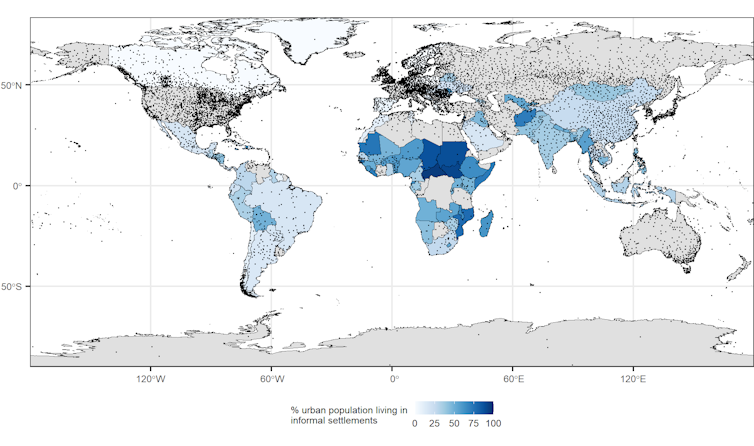
Why Is Heat Such A Threat In These Places?
Rapid urbanisation that outpaces planned, formal development is driving the growth of informal settlements. Their residents usually lack infrastructure and services, such as electricity and water supply, that many city dwellers take for granted.
More than 1 billion people live in informal settlements. The United Nations expects this number to grow to 3 billion over the next 30 years. In countries such as Kenya or Bangladesh, nearly half the urban populations lives in informal settlements.
Most informal settlements are located in the tropics. Here it is hot and humid year-round, but their residents have few options to adapt to heat stress.
Most households in these settlements are on low incomes. Many residents must work outdoors for their livelihoods, which exposes them to heat and humidity.
On top of this, because informal settlements fall outside official systems and regulations, we often lack data about the threats they face.

What’s Missing From Climate Data?
Most of the world’s population lives more than 25km from a weather station. This means weather stations rarely capture the full range of temperature and humidity in cities, which are usually hotter than non-urban surrounds – the urban heat island effect. These gaps in monitoring are largest across the tropics where most informal settlements are located.
As individuals we experience heat on a local scale, which isn’t captured by sparse weather station networks or meteorological models. If your home is too hot, a weather report telling you otherwise offers little respite.
Our research compiled local climate monitoring data from informal settlements in seven tropical countries. We compared these data to temperature and humidity measurements at the nearest weather station.
We found weather stations severely underestimate the heat stress that people experience in their homes and local communities. This means global climate assessments and projections also likely underestimate local-scale impacts.
Although these data come from a relatively small number of studies, they highlight a major hurdle for climate adaptation. Without accurate heat stress data, how can we ensure the most vulnerable communities are not left behind?

Even If They Get A Heat Warning, Options Are Limited
During a heatwave in Australia we are usually told to stay inside and drink lots of water. For residents of an informal settlement, this advice might actually increase their risk of health impacts.
Heat can be even worse indoors in informal housing with poor ventilation and insulation. Very few households have air conditioning (or could afford to run it if they did). Residents might not have access to safe drinking water, adding to the health risks of heat stress.
What’s more, advice and alerts are unlikely even to reach informal settlements. A 2023 World Meteorological Organisation report found only half of the world’s countries have early-warning systems.
These systems are activated if forecast heat is above certain trigger levels. Health advice and alerts to the public can be backed by extra public health measures. Regional climate centres currently issue broad-scale alerts, but forecasts and responses need to operate at smaller scales to be effective.
And, as we have shown, forecasts are based on weather station data that underestimate heat in informal settlements. This means early-warning systems could fail to activate even though residents of these settlements will experience dangerous heat stress.
What Can Be Done To Protect People?
Current climate monitoring efforts have left millions of vulnerable people at risk of heat stress. This has direct impacts on individual health and wellbeing, with broader knock-on effects for societies and national economies.
Meteorological institutes in developing countries need urgent support to strengthen climate monitoring and improve early-warning systems. The new head of the World Meteorological Organisation has promised to do just that. We need to ensure governments and agencies, such as development banks and NGOs, capitalise on this opportunity and include informal settlements in new monitoring networks.
Inequalities in resources and adaptive capacities must also be overcome. Community-based initiatives such as urban greening and improved housing show promise to reduce urban heat. Investing in these solutions must be a priority of adaptation efforts.
The alternative to adapting is to move. Climate-related migration is already happening due to sea-level rise and heat, including here in Australia.
People don’t leave their homes and uproot their lives without good reason. Finding solutions that help them adapt to climate change should be the priority. ![]()
Emma Ramsay, Postdoctoral Research Fellow, Nanyang Technological University, and Research Affiliate, School of Biological Sciences, Monash University
This article is republished from The Conversation under a Creative Commons license. Read the original article.
Did the BOM get it wrong on the hot, dry summer? No – predicting chaotic systems is probability, not certainty

What happened to the scorching El Niño summer we were bracing for? Why has the east coast of Australia been drenched while the north and west gets the heat?
For beachgoers, a wrong weather forecast is annoying. For farmers, it can be very expensive. And for northern Queensland residents surprised by flooding after Cyclone Jasper, it can be devastating. Small wonder there’s been plenty of criticism levelled at the Bureau of Meteorology and other forecasting agencies this summer.
The criticism is understandable. But is it fair? No. The reason is that weather forecasting is inherently not about certainty but probability. Our atmosphere and oceans do not behave in simple, easily predictable ways. They are non-linear, chaotic systems. That means we can only predict large weather features such as highs and lows or bands of storms with relative certainty and even then only for a few days in advance.
We Want Certainty – But We Have To Settle For Probability
Let’s say you check your weather app and see your location has a 60% chance of rain at midday. What does this actually mean?
It means if this forecast was issued 100 times, you should get wet 60 times and stay dry 40 times.
To forecast rainfall for a whole season ahead, meteorologists generally calculate the chance of exceeding average conditions, rather than stating that we will have a dry or wet summer with certainty.
So if we predict a 25% chance of above-average rain during an El Niño summer, we would expect that one out of every four times we make this prediction, we would observe higher rainfall than the average.
So how then do we know if we are making good forecasts? Given that a 60% chance of rain can mean wet or dry, albeit with different odds, we certainly won’t be able to judge the forecast quality based on a single event. Instead, we assess many forecasts of 60% rain made in the past to see if the 60 to 40 split of wet and dry eventuated. If it did for this and all other possible probabilities, the forecasts work well.
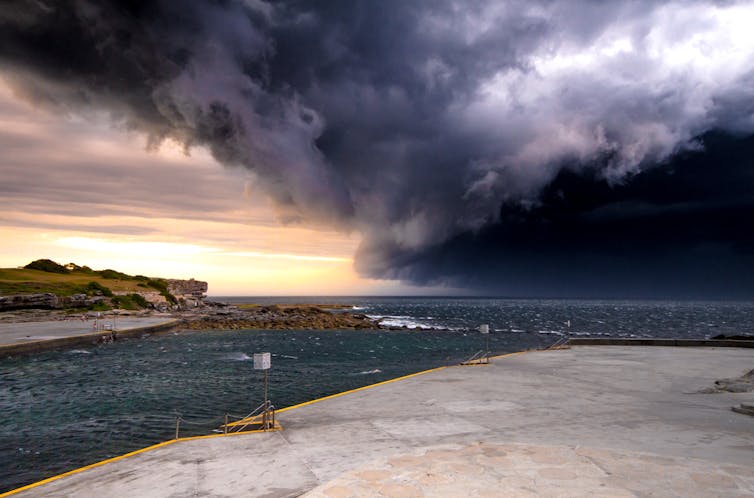
This isn’t what we’d like. Many of us find probabilistic forecasts confusing. Intuitively, we would prefer to simplify them into absolute statements.
Take a picnic you have planned for tomorrow. If you read the statement “there will be thunderstorms at noon tomorrow at Picnic Spot,” you will feel confident it’s best to cancel the event. But the statement “there’s a 60% chance of thunderstorms at noon tomorrow at Picnic Spot” is far more accurate. The first gives false certainty, by vastly oversimplifying what we really know.
Let’s not forget, there is a 40% chance it will stay dry, which the first statement completely ignores. And if it does stay dry, how will your friends react to the cancelled picnic? How much risk are you willing to take?
When we criticise weather forecasts for their inaccuracy, we are usually being unfair. You can’t actually say a weather forecast was wrong if you experienced rain when the forecast was for a high chance of being dry. It’s simply not possible to tell from a single day or even a season how well our forecasts are working because of the nature of how our atmosphere and oceans behave. We’ve known about this for 60 years.
That is why the Bureau of Meteorology’s seasonal forecasts come in likelihoods, such as the rainfall outlook for October to December issued on September 28th. It predicted that “October to December rainfall was likely (60 to 80% chance) to be below median for much of Australia excluding most of central and northwestern WA and south-west Tasmania.” Note that the forecast had a 20-40% chance for the wetter than usual conditions which some parts of Australia ended up experiencing.
But beware: We can’t declare the success or failure of a likelihood forecast from a single season. What the likelihood gives us is the ability to make better decisions based on the best information we have.
Less Than Certain But Far Better Than Nothing
Given these constraints, how can we best use probabilistic forecasts in making decisions?
Here, weather and climate forecasting alone cannot provide the answers. The use and value of a particular forecast strongly depend on what decisions need to be made, our values, and what economic circumstances decisions are made in.
A very simple example is to assess how much it would cost to protect ourselves against, say, a flood, and the loss we would incur if we did not protect ourselves and then the event happened.
If the cost of protection is very low and the loss very large, the answer is simple: protect yourself all the time. High protection costs and low losses imply we should never protect ourselves. Both statements can be made without bringing in the forecast probability. But in the middle, it gets tricky. How much should you spend on a highly damaging event with a low probability of occurring?
Deterministic weather forecasts giving certainty are only possible for a week or two, and only for the large features of the weather. This means longer term forecasts and those for intense weather systems such as thunderstorms or tropical cyclones will only ever be possible by assessing how likely different outcomes are, and giving us a probability.
It’s fine to complain about the weather. But we can’t complain about the forecasting based on a single event. We want to know what’s coming our way, but the weather doesn’t work like that. We owe it to society to provide and use the best information we have to protect and save property and lives. There is too much at stake to keep it simple. ![]()
Christian Jakob, Director, ARC Centre of Excellence for the Weather of the 21st Century, Monash University
This article is republished from The Conversation under a Creative Commons license. Read the original article.
Prince Albert had nothing to do with the lyrebird bearing his name. Should our birds be named after people?
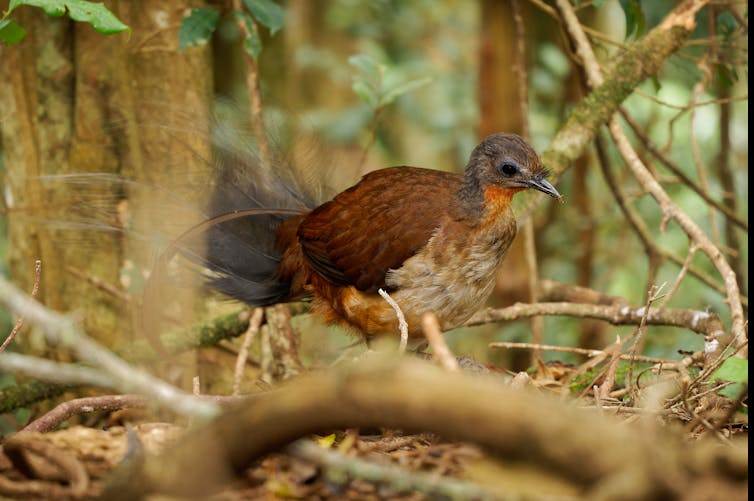
Influential ornithologist John James Audubon’s historical ownership of slaves has spurred a debate about bird names in the United States. As a result, the American Ornithological Society will change not only birds’ common names referring to him, but all 152 eponymous bird names in North America, regardless of good or bad perceptions of their namesakes.
The cultural conversation has arrived in Australia where dozens of species are named after people. Some Australian scientists and birdwatchers (including one from the peak ornithological body Birdlife Australia) have proposed a review, particularly of names with colonial associations.
One Australian species has already been renamed. Birdlife Australia now prefers Pink Cockatoo to Major Mitchell’s Cockatoo as the common name.
Thomas Mitchell led a massacre of Aboriginal people in western New South Wales in 1836, condemned for its senselessness even at the time. Birdlife Australia provides a clear argument why the bird should not bear his name. The change has sparked a conversation in online birding communities.
The Albert’s Lyrebird, the topic of my PhD research, also bears a name with colonial overtones, though without the direct violent connotations of Mitchell. Should it, and other Australian species named after people, be renamed? I’m not sure, but I do know this reclusive rainforest bird has a fascinating and surprisingly complex etymology.
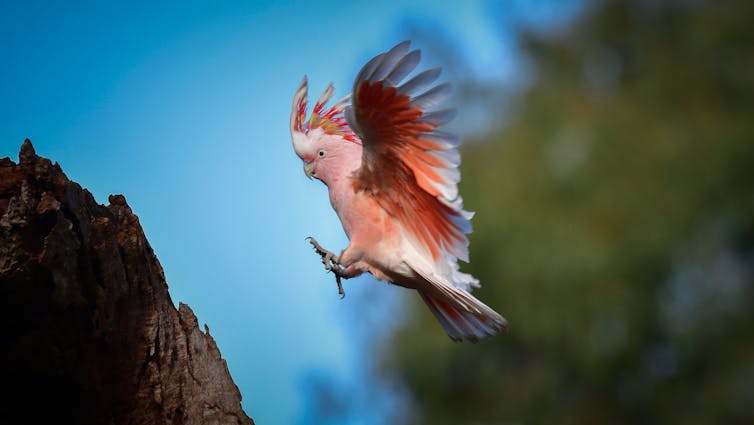
Why Is A Lyrebird Named After Prince Albert?
When English ornithologist John Gould suggested the lyrebird as Australia’s bird emblem, he was recommending the Superb Lyrebird (Menura novaehollandiae) found throughout south-east Australia. Fewer people know of the Albert’s Lyrebird (Menura alberti), restricted to a tiny area on the Queensland-New South Wales border.

Fewer still know the story behind its naming. The Albert’s Lyrebird bears the moniker of Prince Albert, both in its scientific (Latin) name and current common (English) name, bestowed by Gould himself.
This species was still unknown to colonial scientists when Gould’s landmark Birds of Australia was first published in 1848. This was in part due to its remote, humid forest habitat.
Under taxonomic convention – the rules for classifying species – the credit for describing the species and assigning its scientific name would normally have gone to Gould when his 1850 supplement introduced the new species. Every listing of a species provides a scientific name, the name of the person who first described it and the date they did so. So we might have expected to see the Albert’s Lyrebird listed as Menura alberti, Gould, 1850.
Instead, next to Menura alberti we see a different surname – Bonaparte. Not Napoleon, but his nephew Charles, a naturalist who referred to Gould’s description of the new species. However, Bonaparte’s reference predated Gould’s actual publication, a technicality that means Bonaparte is listed as the scientific describer.
This quirk of taxonomy has tied this bird to two names deeply associated with empires.
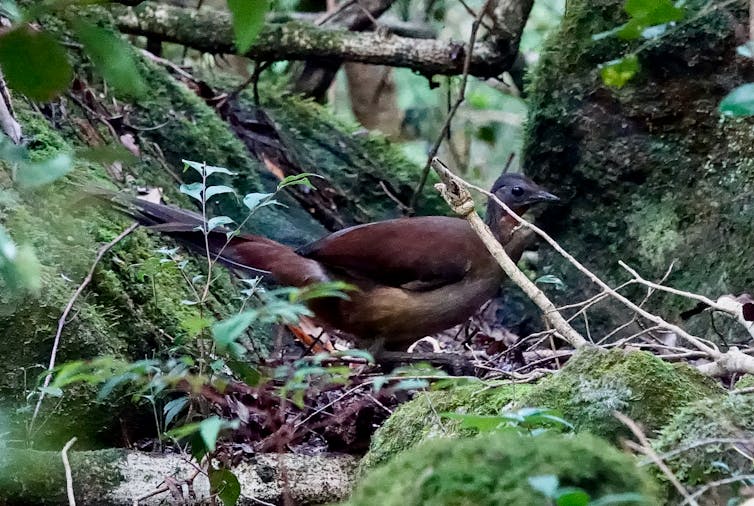
How Do Birds Get Their Names?
Scientific names change only when species are reclassified. The naming is more akin to record keeping – though honouring people can be a secondary purpose. In the lyrebird’s case, Gould cited the prince’s “liberal support” and “personal virtues”.
Birdlife Australia has an English Names Committee, which deals with such changes. Prince Albert is not directly linked to historical violence in Australia, but he was Queen Victoria’s spouse during its colonisation.
If Menura alberti requires the Pink Cockatoo treatment, some other common names have been used in the past.
“Northern Lyrebird” is used in G. Matthews’ Birds of Australia. The volume is of the same name as Gould’s, by a self-funded author, who was controversial for his own taxonomic renaming.
More informally, “Small Lyrebird” has been used in relation to A.A. Leycester, the naturalist who shot the first specimen in 1844.
These are both obscure, albeit more descriptive, alternatives. “Albert’s” is much more common. Leycester himself added an even more royal connotation with “Prince Albert’s Lyrebird”, but sometimes also “Richmond River Lyrebird”.
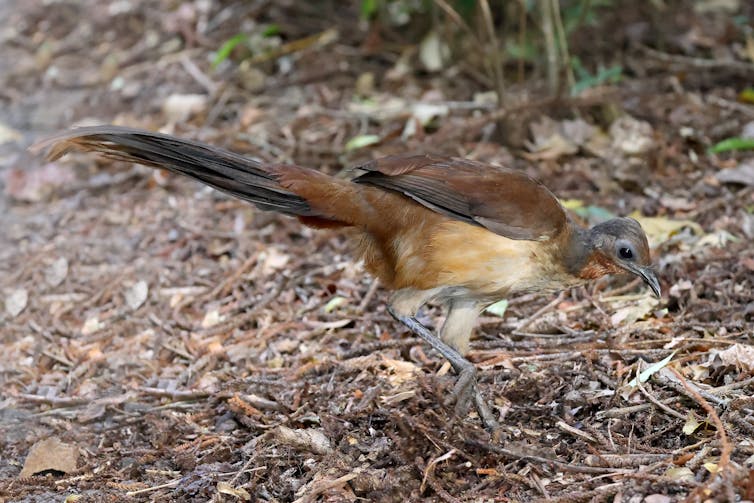
The Bird Had Earlier Names
As for the bird being “discovered”, naturally earlier Indigenous names survive.
The bird has recently been described as a bird of the Bunjalung language area. This is true but it is also a Yugambeh and Githabul bird. Its habitat on the Great Dividing Range might include Jagera Country too.
Archibald Meston inexplicably recorded a Kabi Kabi language name from the “head of the Mary River” – no lyrebird is known to occur this far north.
The Yugambeh Museum has provided “kalbun” for national park signage in my home town, Tamborine Mountain. One Bundjalung dictionary provides “galbuny” or “galwuny” with an outlying possibility of “wonglepong”, “kalwun” or “kulwin” in the Tweed as meanings for “lyrebird” (with no clarification between the two species). Indigenous health service Kalwun uses the name in reference to the “rainforest lyrebird” but uses an image of a Superb Lyrebird as its logo.
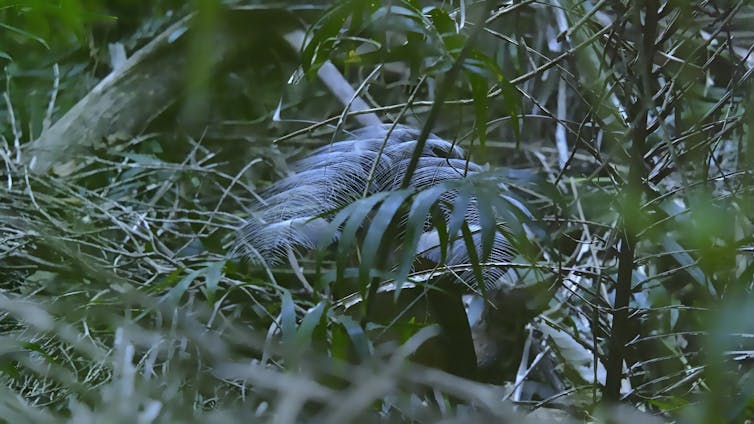

The Superb Lyrebird is also found within Bundjalung Country, such as in Washpool National Park. This variance and confusion between lyrebird species and language groups is before we even consider the Githabul area to the west, a sometimes contested distinction.
The Yugambeh Museum allows for the variance by providing a different language resource for each location. You will find, for example, a different Indigenous name on the national park sign at Tamborine to the one at Lamington.
As many language groups give the bird many names (only some of which are listed here), there isn’t one obvious Indigenous option if the bird were to be renamed. Beyond these names, the cultural significance of the bird, which lives in rarely visited wet and leech-infested places, seems to have been lost.
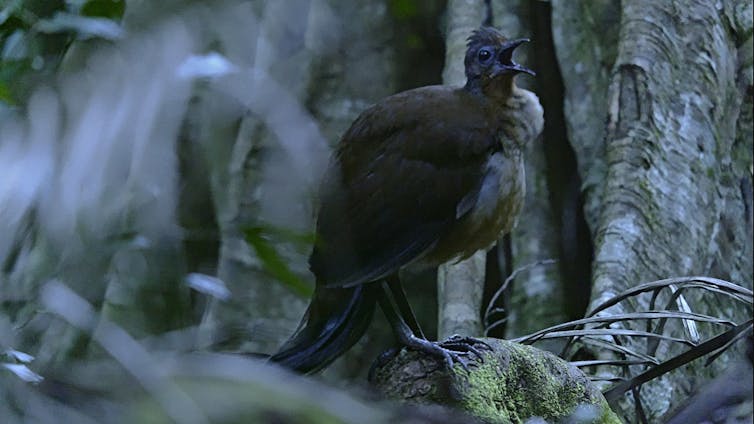
If A New Name Is Needed, Who Decides It?
Over many hours of conversation about this species, I have found the link to Prince Albert is always known. I have rarely heard anything more about why the lyrebird bears his name. Besides his irrelevance to Australian ornithology, I cannot gauge a specific reason the Prince Albert moniker is inappropriate, unlike Thomas Mitchell.
If a change is required to a bird’s name, the decision must be made with the relevant communities. If they wish to counter a history of imperial naming by renaming, the new name should not spring from a similar desire for ownership.
It would also be wise to maintain broadness in this conversation. In the Albert’s Lyrebird case, that includes the birdwatchers, ecologists and conservationists who have contributed to our understanding of this little-known species.
We are about to see what happens in the United States. It would be wise to watch carefully what happens next.![]()
Felix Cehak, PhD Candidate, UNSW Sydney
This article is republished from The Conversation under a Creative Commons license. Read the original article.
As another cyclone heads for Queensland, we must be ready for the new threat: torrential rain and floods
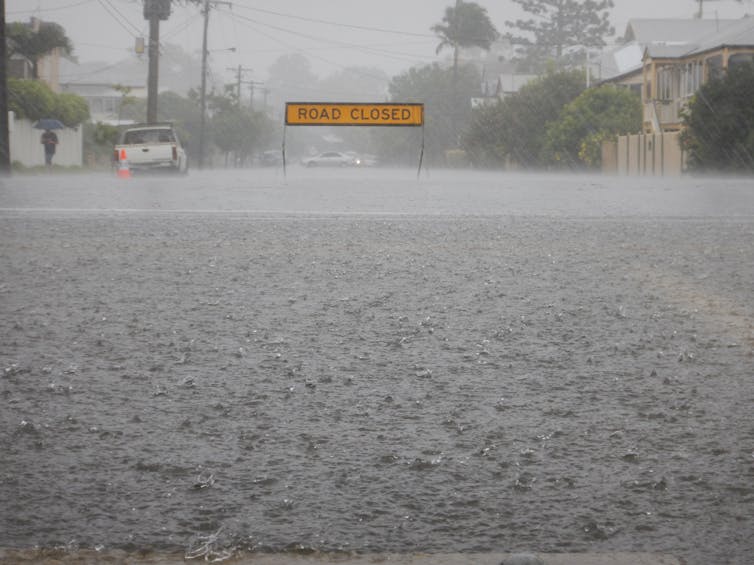
We’ve long known cyclones are heat engines, fuelled by hot water. They also pump heat from the hot tropics into cooler areas. But they’re starting to behave differently. As the world heats up, the atmosphere can hold more moisture. When cyclones form, they can transfer significantly more water from oceans to land.
We saw this in December. Most of the damage done by Cyclone Jasper when it hit far north Queensland wasn’t from the intense winds. It was when the Category 2 storm stalled over Cape York, dumping huge amounts of rain – over 2 metres in some areas – and triggering devastating floods.
It’s likely to happen again this week, as a slow-moving tropical low heads for northern Queensland, carrying huge volumes of water and threatening new floods. Authorities are warning people to prepare – not just on the coast but well inland.
The storm – likely to be named Cyclone Kirrily – will be the second to make landfall this season.
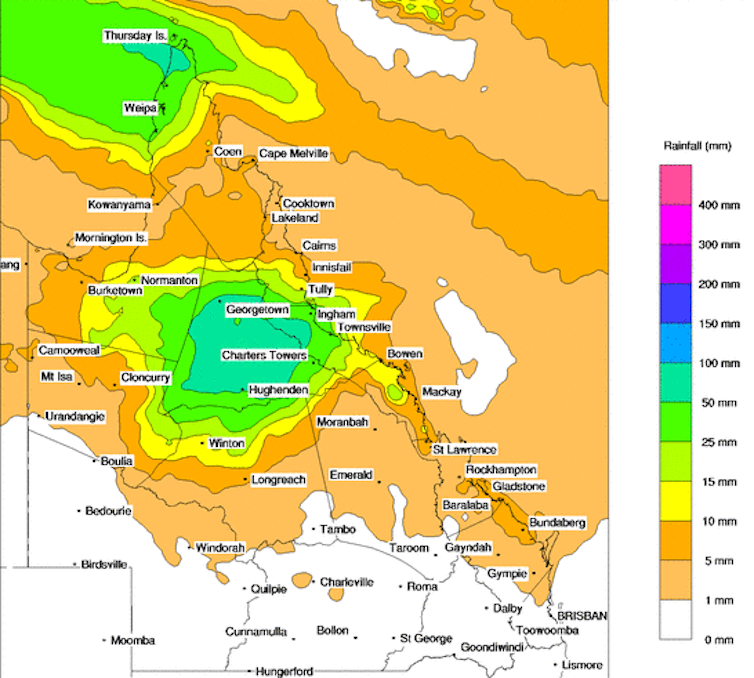
Cyclone Kirrily: Prepare For Floods As Well As Winds
The tropical storm has taken a long time to intensify and is moving very slowly. While it hasn’t yet reached cyclone status, it is expected to make landfall as a Category 2 storm.
What it is carrying, though, is water – enough to dump up to a metre of rain in some places, and a long way into central and western Queensland.
If you live in northern Australia, you’ll know about being prepared for cyclones. When a warning arrives, people pack away or tie down loose objects, trim tree branches and fill up the bathtub in case water supplies are disrupted.
But often, we’re focused just on the damaging winds – when water can often do more damage.
If you live close to the sea, the storm surge – flooding from the sea – is often underestimated as a threat.
But the new major threat is terrestrial flooding. We are already starting to see significantly more rainfall linked to cyclones. Warmer air holds more moisture, and the world is steadily heating up.
This summer, sea surface temperatures have been unusually high off the east coast, all the way from Cape York down to Tasmania. Normally, in El Niño, we would expect lower sea surface temperatures and higher air temperatures. But this El Niño isn’t behaving as we’d normally expect. That’s one reason the east coast has had so much summer rain.
Normally, 75% of Australia’s cyclones hit the northwest of Western Australia, due to the high sea surface temperatures and the way the coast is oriented. But this year, the northwest region is sweltering in heatwaves – but no cyclones have yet made landfall.
The Future Has Fewer Cyclones, But More Intense
Climate change is expected to change tropical cyclone patterns. The overall number is expected to decrease, but their intensity will likely increase, bringing stronger wind and heavier rain.
My colleagues and I have found the change is already happening. The low levels of storm activity on the mid west and northeast coasts of Australia are unprecedented over the past 550 to 1,500 years.
More intense tropical cyclones are expected because higher sea-surface temperatures will make the atmosphere more warm and moist. Cyclones thrive in such conditions.
But the general frequency of tropical cyclones is expected to reduce under climate change in most ocean basins, including the Indian Ocean.
Tropical cyclones usually form when there’s a large difference between temperatures at Earth’s surface and the upper atmosphere. As the climate warms, this temperature difference is likely to narrow.
As the heat in the oceans intensifies, cyclones will be able to form further down the east coast. Cyclones have hit Brisbane and even northern New South Wales in the past. These tropical storms form over warm water – between 26.5 and 30°C. The water along Kirrily’s track is at the higher end – around 30°C. Warm water produces warm, moist air, which is the energy-dense feedstock of cyclones.
What Should We Do To Prepare?
In states such as Queensland, emergency response is a finely honed art. We’re excellent at dealing with the emergency when it’s happening and the immediate aftermath.
But we’ve still got a long way to go in mitigation. Houses are still being built in the path of flooding rivers or where they can be hit by storm surge. ![]()
Jonathan Nott, Professor of Physical Geography, James Cook University
This article is republished from The Conversation under a Creative Commons license. Read the original article.
Using photos to create 3D models is helping us understand – and protect – complex marine environments
Professor James J Bell, Te Herenga Waka — Victoria University of Wellington; Alberto Rovellini, University of Washington; Matteo Collina, Te Herenga Waka — Victoria University of Wellington, and Miriam Pierotti, Te Herenga Waka — Victoria University of WellingtonMeasuring the impact of different events, such as marine heatwaves, on the abundance of marine organisms is not easy. Biological communities naturally change over time and between different locations.
Scientists need to untangle these natural changes from those caused by humans and come up with a new approach to do this.
Marine biologists have traditionally monitored underwater cliffs or coral reefs by estimating population sizes in just a small area of those environments.
One traditional method involves laying a tape measure on the reef and determining what was under the tape at regular intervals. Another is to take pictures of “quadrats” – squares of a known area – and working out the area covered by different organisms later.
However, these methods only provide an estimate for a very small area of the total reef, covering a limited proportion of the animals and plants present.
They also provide limited information on the three-dimensional (3D) reef complexity and structure created by reef organisms, such as corals and sponges, which are key to supporting high biodiversity.
Our new research shows how modern photographic methods can be used to measure coral reef habitat complexity, and the 3D nature of reefs.
This information was then used to assess the impacts of changes from coral-dominated reefs to sponge-dominated reefs on the spaces available for fish and other organisms to live.
Here’s how it works.
An Art And A Science
Photogrammetry – a technique where 3D information is extracted from photographs – is both an art and science. The process involves taking a large number of images of an object or area from different angles. Using specialised algorithms we can then analyse and convert these pictures into 3D digital models.
These models can be appropriately scaled to real-world dimensions, allowing accurate measurements of organisms.
While photogrammetry is not new, its application to marine science has increased in recent years. It is completely changing the way we can monitor marine environments and measure human impacts.
However, there are many other ways broader photogrammetric tools can be used, from estimating the size of whales to developing realistic simulations or virtual reality experiences for education.
Our recently published study from Indonesia used photogrammetry to estimate the potential impacts of changes from coral-dominated to sponge-dominated tropical reefs on reef structural complexity.
The study compared the structural complexity of coral and sponge-dominated areas of a coral reef. By using photogrammetry, we were able to better understand the different factors that contributed to the coral’s structural complexity in a way that would not be possible from traditional 2D photographs.
This study found sponge-dominated reefs had fewer of the smallest spaces for fish and other organisms to live, whereas coral-dominated reefs had fewer larger spaces.
This information is important. The smallest spaces on coral reefs are occupied by small fish and other species that feed animals higher up the food chain. As coral reefs lose these small refuge spaces, they also lose the ability to support biodiversity.
Going Bigger
While the Indonesian study examined only small sections of the reef, the use of photogrammetry for monitoring and mapping marine ecosystems is expanding rapidly.
Thanks to modern hardware and software solutions, it is now possible to rapidly create models for much larger areas. And thanks to high-resolution photography, even the smallest animals can be identified in the models.
These models are complementing the use of traditional sampling methods that only estimate the abundances of organisms in a small area of a reef. But we also have the potential to now sample entire reefs.
As models of reefs derived from photogrammetry are 3D, there are many different new sources of information that can be collected, such as accurate surface areas and volumes of organisms.
For many organisms, like sponges and corals, surface areas and volumes are more important in measuring their ecological importance than just the amount of reef they cover.
Moreover, 3D models of large areas can be oriented and scaled or geo-referenced, essentially creating all the characteristics of a typical map. This makes finding previously surveyed areas much easier.
The overall result is better characterisation of marine communities. This makes it easier to monitor and visualise changes, and the effects of different factors, such as marine heatwaves.
Finally, scaled 3D representations can be created for complex organisms, meaning growth and shape changes can be more accurately measured. This provides a greater understanding of how environmental change affects organisms.
Visualising Changes In Biodiversity
Virtual reality has long been used to provide access to marine environments without getting wet. This has been done largely for education, outreach and training opportunities.
But 3D models created from photogrammetry provide new and exciting opportunities to engage the public. People can now interact with the environment, experiencing new worlds and points of view, while learning and increasing their environmental consciousness.
The application of 3D models derived from underwater photogrammetry has great potential for the monitoring of marine environments and detecting the impact of humans.
These models represent a transformative shift in the way information is gathered in marine ecosystems. As technology develops further they will support more extensive marine monitoring and more effective management.![]()
Professor James J Bell, Professor of Marine Biology, Te Herenga Waka — Victoria University of Wellington; Alberto Rovellini, Postdoctoral fellow, University of Washington; Matteo Collina, PhD candidate, Te Herenga Waka — Victoria University of Wellington, and Miriam Pierotti, PhD candidate, Te Herenga Waka — Victoria University of Wellington
This article is republished from The Conversation under a Creative Commons license. Read the original article.
The palm tree that lives beneath the rainforest floor
Chungui Lu, Nottingham Trent UniversityIn the heart of western Borneo’s vibrant jungles, the edible fruits of the underground palm are well-known to the local people who snack on them. But this botanical marvel has remained unnoticed by the scientific community for so long because it flowers and bears fruit underground.
At first glance, Pinanga subterranea, a rare palm tree, it looks like a small plant or seedling. Compared to a typical palm tree, Pinanga subterranea looks more modest and dainty, making it well-suited for smaller spaces or dense forests.
Its bright red fruits stay almost completely hidden by the soil. So how does this underground superstar survive beneath the forest floor?
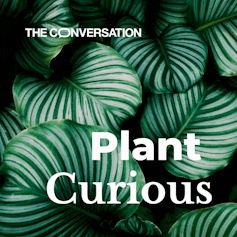
Many people think of plants as nice-looking greens. Essential for clean air, yes, but simple organisms. A step change in research is shaking up the way scientists think about plants: they are far more complex and more like us than you might imagine. This blossoming field of science is too delightful to do it justice in one or two stories.
This article is part of a series, Plant Curious, exploring scientific studies that challenge the way you view plantlife.
Plants grow by using their roots to absorb water and nutrients from the soil. They also need sunlight to make their own food through a process called photosynthesis.
Typically, the stems and leaves are above ground, reaching up towards the light. Palm trees usually develop their flowers and fruits above ground for pollination and seed dispersal.
However, Pinanga subterranea challenges this norm by flowering and fruiting underground, showcasing an extraordinary survival strategy that challenges what we already know about how plants usually make and distribute their seeds.
Secrets Of Survival
There are three possible reasons this palm grows flowers underground, as highlighted in 2023 by the research team Royal Botanic Gardens, Kew, with partners from Indonesia and Malaysia who outlined this discovery. First, its stem demonstrates saxophone growth, bending down and then back up.
Second, the leaves form a funnel, and when organic litter piles up, roots sneak in. They suggest that the litter collects faster than the stem grows, so it stays underground.
Third, its flower clusters are short and below the leaves, usually developing completely underground.
Little is known about how exactly pollination happens in this underground palm. Pollination by flying insects such as bees is difficult, yet this palm still has a fruit and seed set that’s close to the soil surface, suggesting efficient pollination. Insects, especially beetles that move deep down through the undergrowth, might carry pollen for Pinanga subterranea.
Another potential pathway is the process of self-pollination of a flower by pollen from the same flower. Alternatively, wild boars living in the Borneo forest have been seen to unearth the red berries so they might play a crucial role too.
A Master Of Mutation
One thing is certain though. Plants adapt by making changes in their genes, through what’s known as epigenetics. These changes help plants survive stress and adapt. While some changes are temporary, others can last longer and affect how plants grow and develop. Some might even be passed on to future plant generations, helping them to adapt and evolve.
Over time, climate change has seriously affected both the environment and the plants and crops we grow. Different environmental stresses caused by climate change, like extreme temperatures, drought and heavy rain, can make it harder for plants to grow well, affecting their quality. Pressures like these can lead to epigenetic changes.
For example, peanut flowers produce above-ground blossoms, but the fruits mature underground. This adaptation likely offers greater protection, as the underground environment provides a safer and more stable space for seed development, contributing to the plant’s overall survival and reproductive success.
A small Australian underground orchid has also adapted to develop both fruit and flowers underground. With the help of fungi, this orchid survives and reproduces in a safer and more stable underground environment.
Through epigenetic adaptations, some plants, including Pinanga subterranea, can adjust to changes without altering the core instructions or DNA. It’s like a tree’s survival manual.
Epimutations are changes that happen more often than regular changes in instructions (genetic mutations). Pinanga subterranea‘s underground flowering showcases nature’s adaptability.
By using its epigenetic toolbox to master survival in a changing climate, this palm has evolved smart ways to adapt to tough conditions in Borneo’s tropical landscape.

Don’t have time to read about climate change as much as you’d like?
Get a weekly roundup in your inbox instead. Every Wednesday, The Conversation’s environment editor writes Imagine, a short email that goes a little deeper into just one climate issue. Join the 30,000+ readers who’ve subscribed so far.![]()
Chungui Lu, Professor of Sustainable Agriculture, Nottingham Trent University
This article is republished from The Conversation under a Creative Commons license. Read the original article.
Why billionaires should take the lead and declare their own emissions cutting targets

The annual glitzy gathering of world leaders and billionaire CEOs in Davos, Switzerland, allows us to marvel once again at the environment-wrecking effects of private jets and lavish lifestyles.
Many believe it’s incongruous that company bosses and world leaders speak passionately about climate change while travelling in the most carbon intensive way possible.
The high-flyers hit back with various counter-arguments. Tight schedules, security considerations and essential international networking all justify private jet use and the most opulent hotels, while “offsets” in theory undo the damage.
More broadly, they say, the behaviour of individuals is a distraction and an irrelevance. Instead we need political, systemic and technological progress – things they are working hard towards.
Many in the climate movement actually agree that it’s wrong to focus on the behaviour of individuals. They suggest the topic is divisive, causes paralysing guilt, and plays into the delay tactics of big oil companies.
We all cause some emissions, and focusing on individuals can quickly descend into an energy-sapping pursuit of unachievable personal purity. This undermines the coalitions necessary to transform our economies.
Prestigious People Shape Society
But there is a big problem with giving individuals a free pass. That’s because, as humans, we pay a huge amount of attention to how other people behave, particularly those with prestige.
In my PhD research I found leaders who maintain high-carbon lifestyles undermine trust and reduce everyone’s willingness to change their own behaviour.
Unnecessary high-carbon behaviour from leaders therefore actually slows down the fight against climate change. These people make the rules and shape what we aspire to, so the public expects and wants them to lead by example – because it is a fundamental part of leadership.
In a survey I conducted, 90% of the public agreed that “people with the biggest carbon footprints should make the biggest lifestyle changes to tackle climate change”, and only 3% disagreed. Some 86% agreed that “politicians, business leaders and celebrities should set an example by making lifestyle changes first”.
And I found that leading by example works in practice. Among people who stopped flying for a year because of climate change, 74% said they had been influenced by someone else who had done the same, and this rose to 85% if it was a high-profile person setting the example.
Avoiding a focus on individual behaviour might sound nice in theory, but it is simply unrealistic. The media will continue to highlight apparent contradictions between elite behaviour and climate concern, and the public will recoil from anything they see as hypocritical.
It’s a question of fairness – and repeated research shows that fairness is essential to achieving emissions reductions and maintaining support for climate policies.
Therefore avoiding the topic of individual behaviour change serves mainly to protect the lifestyles of the wealthy, who have the most choice to act in lower-carbon ways.
But How Should Leaders Do It?
Leading by example sounds great in theory, but what about the realities of everyday life? Surely we can’t expect leaders to switch to ultra-low-carbon lifestyles overnight, and some of their activities will naturally incur more emissions than the average person.
The answer again comes down to a fundamental element of leadership: direction of travel. Leaders (and the rest of us) don’t have to make an instant switch, but they have to move clearly in the right direction, and be seen to do so.
This is why an idea such as personal emissions targets could work. As part of the Paris agreement, countries sign up voluntarily to nationally determined contributions (NDCs), where each nation sets ambitious public targets to reduce their own emissions. The veracity of these targets can then be discussed and negotiated.
The same could be done by climate leaders – we could call them “personally determined contributions”, or PDCs. They could clearly set out how leaders are going to reduce their personal emissions over time – not by using offsets, which are well understood to be highly problematic, but by publishing how they will continually decarbonise their lifestyles.
PDCs could include: getting rid of the private jet, optimising travel, changing diet, reducing household size and energy use. High-carbon investments could be addressed too.
This would send a signal to the world that leaders really are serious and counteract the widely held perception that others aren’t willing to change. Crucially, PDCs have the benefit of maintaining freedom of choice – a high political priority.
They would likely supercharge leaders’ drive towards low-carbon solutions, and might even change their mindsets about climate change as a problem. After all, we are what we do, not what we say.

Don’t have time to read about climate change as much as you’d like?
Get a weekly roundup in your inbox instead. Every Wednesday, The Conversation’s environment editor writes Imagine, a short email that goes a little deeper into just one climate issue. Join the 30,000+ readers who’ve subscribed so far.![]()
Steve Westlake, Research Fellow, Climate Leadership, Cardiff University
This article is republished from The Conversation under a Creative Commons license. Read the original article.
Military interests are pushing new nuclear power – and the UK government has finally admitted it
Andy Stirling, University of Sussex and Philip Johnstone, University of SussexThe UK government has announced the “biggest expansion of the [nuclear] sector in 70 years”. This follows years of extraordinarily expensive support.
Why is this? Official assessments acknowledge nuclear performs poorly compared to alternatives. With renewables and storage significantly cheaper, climate goals are achieved faster, more affordably and reliably by diverse other means. The only new power station under construction is still not finished, running ten years late and many times over budget.
So again: why does this ailing technology enjoy such intense and persistent generosity?
The UK government has for a long time failed even to try to justify support for nuclear power in the kinds of detailed substantive energy terms that were once routine. The last properly rigorous energy white paper was in 2003.
Even before wind and solar costs plummeted, this recognised nuclear as “unattractive”. The delayed 2020 white paper didn’t detail any comparative nuclear and renewable costs, let alone justify why this more expensive option receives such disproportionate funding.
A document published with the latest announcement, Civil Nuclear: Roadmap to 2050, is also more about affirming official support than substantively justifying it. More significant – in this supposedly “civil” strategy – are multiple statements about addressing “civil and military nuclear ambitions” together to “identify opportunities to align the two across government”.
These pressures are acknowledged by other states with nuclear weapons, but were until now treated like a secret in the UK: civil nuclear energy maintains the skills and supply chains needed for military nuclear programmes.
The Military Has Consistently Called For Civil Nuclear
Official UK energy policy documents fail substantively to justify nuclear power, but on the military side the picture is clear.
For instance, in 2006 then prime minister Tony Blair performed a U-turn to ignore his own white paper and pledge nuclear power would be “back with a vengeance”. Widely criticised for resting on a “secret” process, this followed a major three volume study by the military-linked RAND Corporation for the Ministry of Defence (MoD) effectively warning that the UK “industrial base” for design, manufacture and maintenance of nuclear submarines would become unaffordable if the country phased out civil nuclear power.

A 2007 report by an executive from submarine-makers BAE Systems called for these military costs to be “masked” behind civil programmes. A secret MoD report in 2014 (later released by freedom of information) showed starkly how declining nuclear power erodes military nuclear skills.
In repeated parliamentary hearings, academics, engineering organisations, research centres, industry bodies and trade unions urged continuing civil nuclear as a means to support military capabilities.
In 2017, submarine reactor manufacturer Rolls Royce even issued a dedicated report, marshalling the case for expensive “small modular reactors” to “relieve the Ministry of Defence of the burden of developing and retaining skills and capability”.
The government itself has remained coy about acknowledging this pressure to “mask” military costs behind civilian programmes. Yet the logic is clear in repeated emphasis on the supposedly self-evident imperative to “keep the nuclear option open” – as if this were an end in itself, no matter what the cost. Energy ministers are occasionally more candid, with one calling civil-military distinctions “artifical” and quietly saying: “I want to include the MoD more in everything we do”.
In 2017, we submitted evidence to a parliamentary public accounts committee investigation of the deal to build Hinkley Point C power plant. On the basis of our evidence, the committee asked the then MoD head (who – notably – previously oversaw civil nuclear contract negotiations) about the military nuclear links. His response:
We are completing the build of the nuclear submarines which carry conventional weaponry. We have at some point to renew the warheads, so there is very definitely an opportunity here for the nation to grasp in terms of building up its nuclear skills. I do not think that that is going to happen by accident; it is going to require concerted government action to make it happen.
This is even more evident in actions than words. For instance hundreds of millions of pounds have been prioritised for a nuclear innovation programme and a nuclear sector deal which is “committed to increasing the opportunities for transferability between civil and defense industries”.
An Open Secret
Despite all this, military pressures for nuclear power are not widely recognised in the UK. On the few occasions when it receives media attention, the link has been officially denied.
Other nuclear-armed states are also striving to maintain expensive military infrastructures (especially around submarine reactors) just when the civilian industry is obsolescing. This is true in the US, France, Russia and China.
Other countries tend to be more open about it, with the interdependence acknowledged at presidential level in the US for instance. French president Emmanuel Macron summarises: “without civil nuclear power, no military nuclear power, without military nuclear, no civil nuclear”.
This is largely why nuclear-armed France is pressing the European Union to support nuclear power. This is why non-nuclear-armed Germany has phased out the nuclear technologies it once lead the world in. This is why other nuclear-armed states are so disproportionately fixated by nuclear power.
These military pressures help explain why the UK is in denial about poor nuclear performance, yet so supportive of general nuclear skills. Powerful military interests – with characteristic secrecy and active PR – are driving this persistence.
Neglect of this picture makes it all the more disturbing. Outside defence budgets, off the public books and away from due scrutiny, expensive support is being lavished on a joint civil-military nuclear industrial base largely to help fund military needs. These concealed subsidies make nuclear submarines look affordable, but electricity and climate action more costly.
The conclusions are not self-evident. Some might argue military rationales justify excessive nuclear costs. But history teaches that policies are more likely to go awry if reasons are concealed. In the UK – where nuclear realities have been strongly officially denied – the issues are not just about energy, or climate, but democracy.
The Conversation asked the UK Department for Energy Security and Net Zero to comment but did not receive a reply before the publication deadline.

Don’t have time to read about climate change as much as you’d like?
Get a weekly roundup in your inbox instead. Every Wednesday, The Conversation’s environment editor writes Imagine, a short email that goes a little deeper into just one climate issue. Join the 30,000+ readers who’ve subscribed so far.![]()
Andy Stirling, Professor of Science & Technology Policy in the Science Policy Research Unit, University of Sussex and Philip Johnstone, Research Fellow, SPRU, University of Sussex
This article is republished from The Conversation under a Creative Commons license. Read the original article.
Meat and dairy industry giants hold the plant power behind many vegan brands
Benjamin Selwyn, University of Sussex“Cast a vote for a greener planet, lower food bills, better health and kindness to animals. And you don’t even have to wait for a general election,” states the global Veganuary campaign that encourages people to eat plant-based throughout January.
Transforming the world’s food system through large-scale reduction in meat production is essential if we are to preserve the planet’s natural ecosystems. But I don’t believe Veganuary’s solution is the way to do that.
While the switch to eating vegan food may seem empowering, it places an unrealistic pressure upon consumers to drive the shift to plant-based foods. By failing to highlight the state-backed corporate power at the heart of the food system, Veganuary arguably disempowers its followers.
In collaboration with Charis Davis, MA student in development studies at SOAS University of London, I researched the ownership structure and marketing strategies of several plant-based food companies. We found that many brands that are celebrated for sustainable plant-based food production are owned by giant meat and dairy companies implicated in allegations of large-scale environmental destruction.
Take Vivera, a pioneer in plant-based food. The Dutch company produces a wide range of vegetarian and vegan food, such as vegan hot dogs, plant salmon fillets, Tex Mex strips and vegan steak. The Vivera website suggests that consumers should buy vegan products to “make a huge difference for human health and the wellbeing of the planet” and states that “you can improve the world with every bite you take by eating plant-based foods”.
However, Vivera’s online marketing and product packaging do not highlight to consumers that it is owned by JBS, the world’s largest meat producer. Every day JBS’s global operations slaughter 8.7 million birds, 92,600 hogs and 42,700 head of cattle, according to the Institute for Agriculture and Trade Policy, a US-based thinktank.
JBS’s purchase of Vivera in 2021 does not signify a move away from meat. Shortly after acquiring the plant-based food company, it announced plans to invest US$130 million in two of its US beef processing plants, to increase cattle slaughtering capacity by around 300,000 a year. JBS is the biggest purchaser of cattle from the Amazon, and therefore a major contributor to deforestation.
Another case in point is Alpro. The well-known manufacturer of vegan dairy products was bought by Danone in 2017 in response to the growing popularity of milk alternatives. But the language on Alpro’s website, for example “doing your bit with every bite or sip”, seems at odds with Danone’s claims to be the number one leading brand worldwide for fresh dairy products.
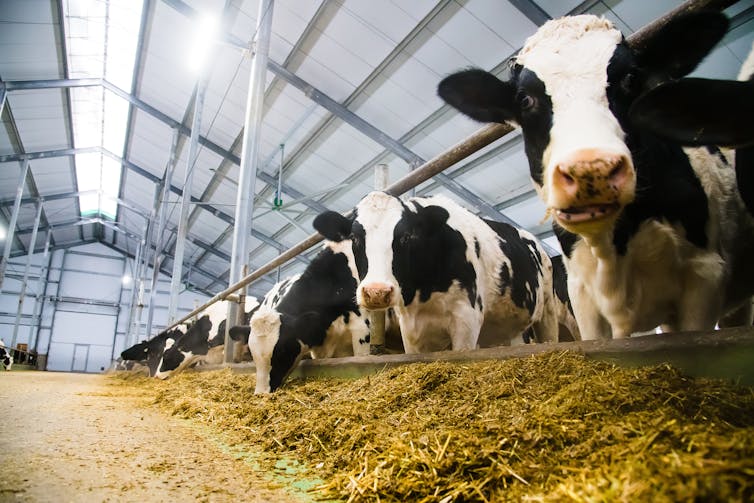
Cow’s milk creates three times more greenhouse gas emissions, uses ten times as much land and twice as much freshwater than plant-based alternatives, according to calculations by the website Our World in Data.
While Danone is expanding into the plant-based market, this does not imply a retreat from its core dairy product lines. As one food industry newsletter put it: “The company … is looking to cross-promote its plant-based and traditional dairy beverages to households where individuals dabble in both categories.”
Both cases exemplify a broader trend where giant meat and dairy-based conglomerates, including JBS and Danone, are buying up smaller plant-based food companies as part of their corporate expansion strategies, according to a 2022 report by IPES-Food, a coalition of food system experts.
At present, meat and dairy producers are supported by mega state subsidies. In the EU and US, livestock farmers receive about 1,000 times more subsidies than plant-based and cultivated meat producers.
Yet Veganuary’s apolitical stance ignores the support the meat and dairy industries receive from rich-country governments. While the planet desperately needs a major shift away from meat production and consumption, mega food corporations probably won’t be the ones to lead the transition to a greener planet.
How To Support Plant-Based Food Production
A significant step change would require governments to do at least three things. First, they should impose hefty fines upon and potentially confiscate the land of corporations that damage the environment through meat and dairy production.
Second, governments should reorient subsidies into plant-based food production instead of supporting agro-industrial meat production. Third, they should expand public welfare to help cash-strapped consumers to buy plant-based products.
Such moves may seem farfetched, but in the context of the existential threat of climate breakdown, they are arguably quite moderate. However, success requires strong political leadership, something that has been sidelined by Veganuary’s celebration of consumer power.
We urgently need to channel the growing public awareness of the environmental damage wrought by the current food system, through voting and large-scale social movements, into a political force that paves a way forward for genuinely climate-friendly diets.
In response to the issues raised by this article, a spokesperson for Danone said: “At Danone, we stand by the fact that both dairy and plant-based foods can contribute to a healthy sustainable diet. With many more people choosing to diversify their food choices, our portfolio allows us to provide a wide range of dairy and plant-based options to best meet their different needs and inspire healthy and sustainable choices in both categories.”
Veganuary and JBS were both approached for comment but no response has been received.

Don’t have time to read about climate change as much as you’d like?
Get a weekly roundup in your inbox instead. Every Wednesday, The Conversation’s environment editor writes Imagine, a short email that goes a little deeper into just one climate issue. Join the 30,000+ readers who’ve subscribed so far.![]()
Benjamin Selwyn, Professor of International Relations and International Development, Department of International Relations, University of Sussex
This article is republished from The Conversation under a Creative Commons license. Read the original article.
Veganuary’s impact has been huge – here are the stats to prove it
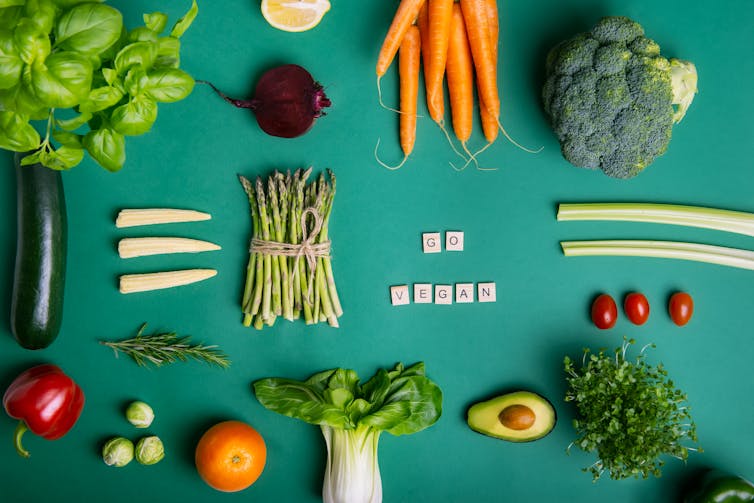
Since launching in 2014, Veganuary has boasted increasing sign-ups year on year. But what’s the evidence that the campaign that encourages people to adopt a vegan diet during January is really taking a bite out of the meat market?
More than 700,000 people signed up in 2023, and it’s likely that these figures – which only account for people who officially signed up on the Veganuary website – represent just a fraction of all those who took part without signing up.
Veganuary is a campaign which encourages people to try veganism in January. The Veganuary charity, a UK-based non-profit behind the campaign, counts Deborah Meaden, Joaquin Phoenix and Chris Packham among its ambassadors.
In a paper we published last year, we highlighted Veganuary as the most well-known and participated-in meat-free challenge. More than three quarters of British people have heard of Veganuary.
One in ten have considered taking part, and 6% claim to have taken part. That equates to around four million people – significantly more than the official participation numbers.
So why has Veganuary succeeded where so many other efforts to curb our problematic meat consumption have failed? There are two reasons, as outlined in our recent study.
First, Veganuary invites people to try a vegan diet at a time of year when people are often open to trying healthy new habits. Capitalising on an annual time of change can help to overcome any inertia that normally prevents people trying vegan diets.
Second, Veganuary is a social experience. People can connect with others attempting the same challenge. The sense of camaraderie and community is something that Veganuary participants frequently comment on having enjoyed.
Encouragingly, Veganuary’s survey of participants indicates that 98% would recommend the experience to a friend. Moreover, 78% of participants intended to cut their previous animal product consumption at least in half beyond the end of January, and 25% said they intend to stay vegan.
So, Veganuary makes sense in terms of social psychology. Lots of people have taken part, and plenty say they’ll cut down on meat in the longer term. But what evidence is there that Veganuary has made a real impact on dietary habits?
Veganuary’s rapid rise has been concurrent with a broader trend towards veganism and meat reduction in the UK. Total per capita meat consumption fell 17% from 2008 to 2019, at the same time as sales of vegetarian food increased significantly.
The recent increase in the number of people embracing meat-free diets in the UK is shown in the graph below – in particular, the number of vegans has increased 370% in the past five years.
So Veganuary came to exist and grew rapidly during a time of increasing UK interest in veganism. Could that have been a simple coincidence?
Researchers at the London School of Economics looked at more than 2 million meals sold in workplace cafeterias between 2016 and 2022. Crucially, the workplaces began their Veganuary campaigns halfway through this period, in 2019. The researchers estimated that Veganuary increased sales of vegan products by 86–113% in the the 2019-2022 campaigns, and had a lasting impact on sales of vegan products
Sales data from 200 UK supermarkets indicate that, during Veganuary 2023, sales increased for plant-based foods which were on promotion, but not for those which were not on promotion, according to a University of Oxford study.
Veganuary has also increased sales of plant-based products at UK grocery stores. A team at the University of Surrey studied sales of plant-based and animal products at 154 UK grocery stores from November 2020 until March 2021 and found that Veganuary increased sales of plant-based products by a huge 57% during January.
Sales also remained 15% higher after Veganuary compared to before the month-long campaign. That said, there was no significant change in meat consumption observed during the same period.
Curious about Veganuary’s far-reaching impact, I searched Google News to estimate the number of published news stories about veganism during January compared to the rest of the year. In January, there was an average 66% increase in the number of media articles about veganism compared to other months between 2015 and 2020 – evidence that Veganuary increases public attention on veganism-related issues.
Next, I used Google Trends to investigate seasonal trends in the number of people actively seeking out information on veganism. The data in the graph shows some of the clearest evidence yet for the Veganuary effect, with clear spikes in search activity every January. Moreover, interest appears to begin rising right around the time that Veganuary began in 2014.
Finally, I tracked down the dataset from an unpublished survey of vegans conducted in 2019, because I knew it contained data on a very specific question. The survey, which the researcher kindly shared with me, asked more than 2,000 vegans when they changed their diet, to the nearest three-month period.
Using this data, I created this graph, which shows clear spikes, with more people turning vegan in the first quarter of the year, and an increase starting around (or slightly before) Veganuary began in 2014.
One piece of data stands out most of all. When Veganuary asked participants about their number one motivation for taking part, 18% said the environment, and 21% said their health – but 40% said animal welfare.
Indeed, the data indicates that the messages inspiring the most dietary change are not about carbon emissions, but about animal cruelty. Almost nobody in the UK views common animal farming practices as acceptable, yet while cow burps are within the range of acceptable dinner party conversation, knives in throats typically are not.
Meat consumption largely remains a social norm but that may well be about to shift. The social tipping point whereby enough people adopt a new norm for it to catch on is estimated to be around 25%. In the UK, the number of people consuming meat-free diets is now up to 14%. Veganuary could soon nudge us towards a vital cultural tipping point.

Don’t have time to read about climate change as much as you’d like?
Get a weekly roundup in your inbox instead. Every Wednesday, The Conversation’s environment editor writes Imagine, a short email that goes a little deeper into just one climate issue. Join the 30,000+ readers who’ve subscribed so far.![]()
Chris Bryant, Honorary Research Associate, Department of Psychology, University of Bath
This article is republished from The Conversation under a Creative Commons license. Read the original article.
Urban agriculture isn’t as climate-friendly as it seems – but these best practices can transform gardens and city farms
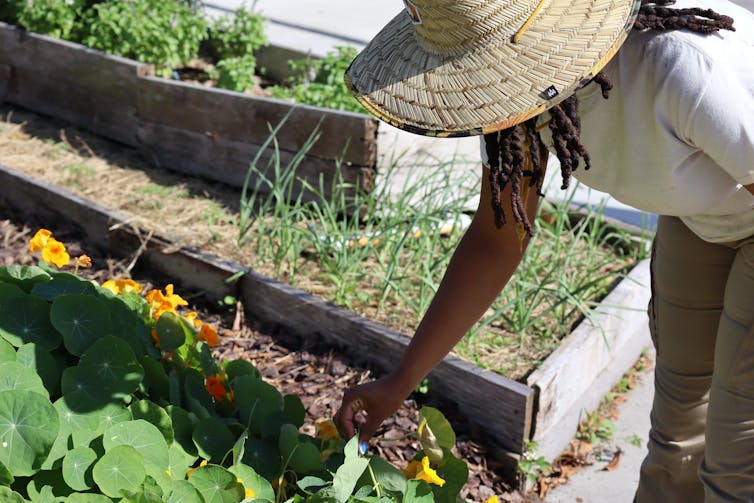
Urban agriculture is expected to be an important feature of 21st century sustainability and can have many benefits for communities and cities, including providing fresh produce in neighborhoods with few other options.
Among those benefits, growing food in backyards, community gardens or urban farms can shrink the distance fruits and vegetables have to travel between producers and consumers – what’s known as the “food mile” problem. With transportation’s greenhouse gas emissions eliminated, it’s a small leap to assume that urban agriculture is a simple climate solution.
But is urban agriculture really as climate-friendly as many people think?
Our team of researchers partnered with individual gardeners, community garden volunteers and urban farm managers at 73 sites across five countries in North America and Europe to test this assumption.
We found that urban agriculture, while it has many community benefits, isn’t always better for the climate than conventional agriculture over the life cycle, even with transportation factored in. In fact, on average, the urban agriculture sites we studied were six times more carbon intensive per serving of fruit or vegetables than conventional farming.
However, we also found several practices that stood out for how effectively they can make fruits and vegetables grown in cities more climate-friendly.
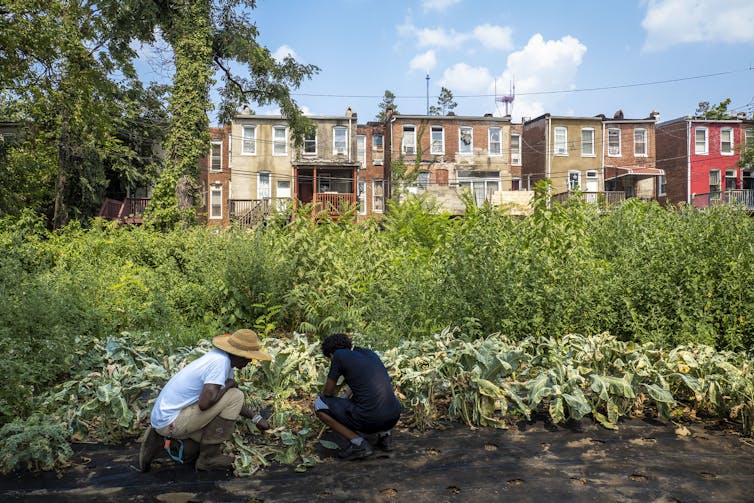
What Makes Urban Ag More Carbon-Intensive?
Most research on urban agriculture has focused on a single type of urban farming, often high-tech projects, such as aquaponic tanks, rooftop greenhouses or vertical farms. Electricity consumption often means the food grown in these high-tech environments has a big carbon footprint.
We looked instead at the life cycle emissions of more common low-tech urban agriculture – the kind found in urban backyards, vacant lots and urban farms.
Our study, published Jan. 22, 2024, modeled carbon emissions from farming activities like watering and fertilizing crops and from building and maintaining the farms. Surprisingly, from a life cycle emissions perspective, the most common source at these sites turned out to be infrastructure. From raised beds to sheds and concrete pathways, this gardening infrastructure means more carbon emissions per serving of produce than the average wide-open fields on conventional farms.

However, among the 73 sites in cities including New York, London and Paris, 17 had lower emissions than conventional farms. By exploring what set these sites apart, we identified some best practices for shrinking the carbon footprint of urban food production.
1) Make Use Of Recycled Materials, Including Food Waste And Water
Using old building materials for constructing farm infrastructure, such as raised beds, can cut out the climate impacts of new lumber, cement and glass, among other materials. We found that upcycling building materials could cut a site’s emissions 50% or more.
On average, our sites used compost to replace 95% of synthetic nutrients. Using food waste as compost can avoid both the methane emissions from food scraps buried in landfills and the need for synthetic fertilizers made from fossil fuels. We found that careful compost management could cut greenhouse gas emissions by nearly 40%.
Capturing rainwater or using greywater from shower drains or sinks can reduce the need for pumping water, water treatment and water distribution. Yet we found that few sites used those techniques for most of their water.
2) Grow Crops That Are Carbon-Intensive When Grown By Conventional Methods
Tomatoes are a great example of crops that can cut emissions when grown with low-tech urban agriculture. Commercially, they are often grown in large-scale greenhouses that can be particularly energy-intensive. Asparagus and other produce that must be transported by airplane because they spoil quickly are another example with a large carbon footprint.
By growing these crops instead of buying them in stores, low-tech urban growers can reduce their net carbon impact.
3) Keep Urban Gardens Going Long Term
Cities are constantly changing, and community gardens can be vulnerable to development pressures. But if urban agriculture sites can remain in place for many years, they can avoid the need for new infrastructure and keep providing other benefits to their communities.
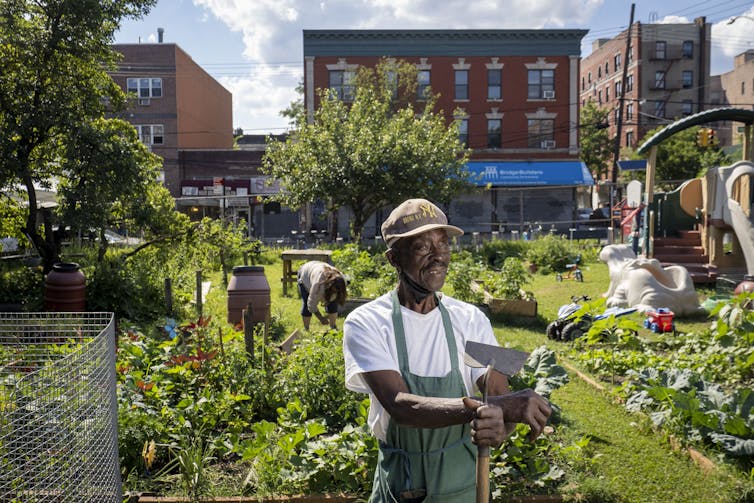
Urban agriculture sites provide ecosystem services and social benefits, such as fresh produce, community building and education. Urban farms also create homes for bees and urban wildlife, while offering some protection from the urban heat island effect.
The practice of growing food in cities is expected to continue expanding in the coming years, and many cities are looking to it as a key tool for climate adaptation and environmental justice.
We believe that with careful site design and improved land use policy, urban farmers and gardeners can boost their benefit both to people nearby and the planet as a whole.![]()
Jason Hawes, Ph.D. Candidate in Resource Policy and Behavior, University of Michigan; Benjamin Goldstein, Assistant Professor of Sustainable Systems, University of Michigan, and Joshua Newell, Professor of Environment and Sustainability, University of Michigan
This article is republished from The Conversation under a Creative Commons license. Read the original article.
Old forests are critically important for slowing climate change and merit immediate protection from logging
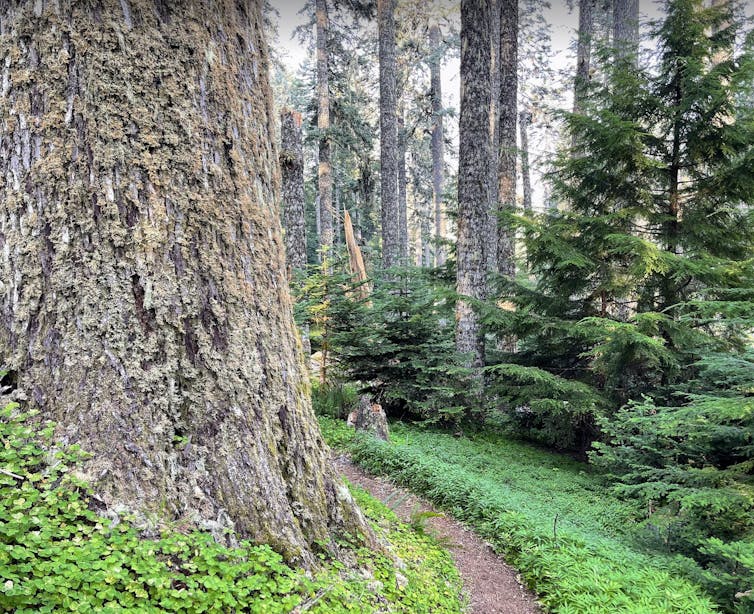
Forests are an essential part of Earth’s operating system. They reduce the buildup of heat-trapping carbon dioxide in the atmosphere from fossil fuel combustion, deforestation and land degradation by 30% each year. This slows global temperature increases and the resulting changes to the climate. In the U.S., forests take up 12% of the nation’s greenhouse gas emissions annually and store the carbon long term in trees and soils.
Mature and old-growth forests, with larger trees than younger forests, play an outsized role in accumulating carbon and keeping it out of the atmosphere. These forests are especially resistant to wildfires and other natural disturbances as the climate warms.
Most forests in the continental U.S. have been harvested multiple times. Today, just 3.9% of timberlands across the U.S., in public and private hands, are over 100 years old, and most of these areas hold relatively little carbon compared with their potential.
The Biden administration is moving to improve protection for old-growth and mature forests on federal land, which we see as a welcome step. But this involves regulatory changes that will likely take several years to complete. Meanwhile, existing forest management plans that allow logging of these important old, large trees remain in place.
As scientists who have spent decades studying forest ecosystems and the effects of climate change, we believe that it is essential to start protecting carbon storage in these forests. In our view, there is ample scientific evidence to justify an immediate moratorium on logging mature and old-growth forests on federal lands.
Federal Action To Protect Mature And Old-Growth Forests
A week after his inauguration in 2021, President Joe Biden issued an executive order that set a goal of conserving at least 30% of U.S. lands and waters by 2030 to address what the order called “a profound climate crisis.” In 2022, Biden recognized the climate importance of mature and old-growth forests for a healthy climate and called for conserving them on federal lands.
Most recently, in December 2023, the U.S. Forest Service announced that it was evaluating the effects of amending management plans for 128 U.S. national forests to better protect mature and old-growth stands – the first time any administration has taken this kind of action.
These actions seek to make existing old-growth forests more resilient; preserve ecological benefits that they provide, such as habitat for threatened and endangered species; establish new areas where old-growth conditions can develop; and monitor the forests’ condition over time. The amended national forest management plans also would prohibit logging old-growth trees for mainly economic purposes – that is, producing timber. Harvesting trees would be permitted for other reasons, such as thinning to reduce fire severity in hot, dry regions where fires occur more frequently.
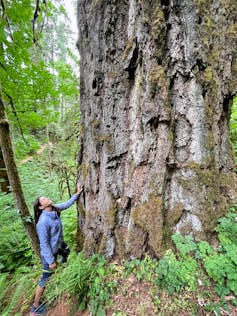
Remarkably, however, logging is hardly considered in the Forest Service’s initial analysis, although studies show that it causes greater carbon losses than wildfires and pest infestations.
In one analysis across 11 western U.S. states, researchers calculated total aboveground tree carbon loss from logging, beetle infestations and fire between 2003 and 2012 and found that logging accounted for half of it. Across the states of California, Oregon and Washington, harvest-related carbon emissions between 2001 and 2016 averaged five times the emissions from wildfires.
A 2016 study found that nationwide, between 2006 and 2010, total carbon emissions from logging were comparable to emissions from all U.S. coal plants, or to direct emissions from the entire building sector.

Logging Pressure
Federal lands are used for multiple purposes, including biodiversity and water quality protection, recreation, mining, grazing and timber production. Sometimes, these uses can conflict with one another – for example, conservation and logging..
Legal mandates to manage land for multiple uses do not explicitly consider climate change, and federal agencies have not consistently factored climate change science into their plans. Early in 2023, however, the White House Council on Environmental Quality directed federal agencies to consider the effects of climate change when they propose major federal actions that significantly affect the environment.
Multiple large logging projects on public land clearly qualify as major federal actions, but many thousands of acres have been legally exempted from such analysis.
Across the western U.S., just 20% of relatively high-carbon forests, mostly on federal lands, are protected from logging and mining. A study in the lower 48 states found that 76% of mature and old-growth forests on federal lands are vulnerable to logging. Harvesting these forests would release about half of their aboveground tree carbon into the atmosphere within one or two decades.
An analysis of 152 national forests across North America found that five forests in the Pacific Northwest had the highest carbon densities, but just 10% to 20% of these lands were protected at the highest levels. The majority of national forest area that is mature and old growth is not protected from logging, and current management plans include logging of some of the largest trees still standing.
Letting Old Trees Grow
Conserving forests is one of the most effective and lowest-cost options for managing atmospheric carbon dioxide, and mature and old-growth forests do this job most effectively. Protecting and expanding them does not require expensive or complex energy-consuming technologies, unlike some other proposed climate solutions.
Allowing mature and old-growth forests to continue growing will remove from the air and store the largest amount of atmospheric carbon in the critical decades ahead. The sooner logging of these forests ceases, the more climate protection they can provide.
Richard Birdsey, a former U.S. Forest Service carbon and climate scientist and current senior scientist at the Woodwell Climate Research Center, contributed to this article.
This is an update of an article originally published on March 2, 2023.![]()
Beverly Law, Professor Emeritus of Global Change Biology and Terrestrial Systems Science, Oregon State University and William Moomaw, Professor Emeritus of International Environmental Policy, Tufts University
This article is republished from The Conversation under a Creative Commons license. Read the original article.
Pittwater Reserves: Histories + Notes + Pictorial Walks
A History Of The Campaign For Preservation Of The Warriewood Escarpment by David Palmer OAM and Angus Gordon OAM
A Stroll Around Manly Dam: Spring 2023 by Kevin Murray and Joe Mills
A Stroll Through Warriewood Wetlands by Joe Mills February 2023
A Walk Around The Cromer Side Of Narrabeen Lake by Joe Mills
America Bay Track Walk - photos by Joe Mills
An Aquatic June: North Narrabeen - Turimetta - Collaroy photos by Joe Mills
Angophora Reserve Angophora Reserve Flowers Grand Old Tree Of Angophora Reserve Falls Back To The Earth - History page
Annie Wyatt Reserve - A Pictorial
Aquatic Reflections seen this week (May 2023): Narrabeen + Turimetta by Joe Mills
Avalon's Village Green: Avalon Park Becomes Dunbar Park - Some History + Toongari Reserve and Catalpa Reserve
Bairne Walking Track Ku-Ring-Gai Chase NP by Kevin Murray
Bangalley Headland Bangalley Mid Winter
Bangalley Headland Walk: Spring 2023 by Kevin Murray and Joe Mills
Banksias of Pittwater
Barrenjoey Boathouse In Governor Phillip Park Part Of Our Community For 75 Years: Photos From The Collection Of Russell Walton, Son Of Victor Walton
Barrenjoey Headland: Spring flowers
Barrenjoey Headland after fire
Bayview Baths
Bayview Wetlands
Beeby Park
Bilgola Beach
Botham Beach by Barbara Davies
Bungan Beach Bush Care
Careel Bay Saltmarsh plants
Careel Bay Birds
Careel Bay Clean Up day
Careel Bay Playing Fields History and Current
Careel Creek
Careel Creek - If you rebuild it they will come
Centre trail in Ku-ring-gai Chase National Park
Chiltern Track- Ingleside by Marita Macrae
Clareville Beach
Clareville/Long Beach Reserve + some History
Coastal Stability Series: Cabbage Tree Bay To Barrenjoey To Observation Point by John Illingsworth, Pittwater Pathways, and Dr. Peter Mitchell OAM
Cowan Track by Kevin Murray
Curl Curl To Freshwater Walk: October 2021 by Kevin Murray and Joe Mills
Currawong and Palm Beach Views - Winter 2018
Currawong-Mackerel-The Basin A Stroll In Early November 2021 - photos by Selena Griffith
Currawong State Park Currawong Beach + Currawong Creek
Deep Creek To Warriewood Walk photos by Joe Mills
Drone Gives A New View On Coastal Stability; Bungan: Bungan Headland To Newport Beach + Bilgola: North Newport Beach To Avalon + Bangalley: Avalon Headland To Palm Beach
Duck Holes: McCarrs Creek by Joe Mills
Dunbar Park - Some History + Toongari Reserve and Catalpa Reserve
Dundundra Falls Reserve: August 2020 photos by Selena Griffith - Listed in 1935
Elsie Track, Scotland Island
Elvina Track in Late Winter 2019 by Penny Gleen
Elvina Bay Walking Track: Spring 2020 photos by Joe Mills
Elvina Bay-Lovett Bay Loop Spring 2020 by Kevin Murray and Joe Mills
Fern Creek - Ingleside Escarpment To Warriewood Walk + Some History photos by Joe Mills
Iluka Park, Woorak Park, Pittwater Park, Sand Point Reserve, Snapperman Beach Reserve - Palm Beach: Some History
Ingleside
Ingleside Wildflowers August 2013
Irrawong - Ingleside Escarpment Trail Walk Spring 2020 photos by Joe Mills
Irrawong - Mullet Creek Restoration
Katandra Bushland Sanctuary - Ingleside
Lucinda Park, Palm Beach: Some History + 2022 Pictures
McCarrs Creek
McCarr's Creek to Church Point to Bayview Waterfront Path
McKay Reserve
Mona Vale Beach - A Stroll Along, Spring 2021 by Kevin Murray
Mona Vale Headland, Basin and Beach Restoration
Mona Vale Woolworths Front Entrance Gets Garden Upgrade: A Few Notes On The Site's History
Mother Brushtail Killed On Barrenjoey Road: Baby Cried All Night - Powerful Owl Struck At Same Time At Careel Bay During Owlet Fledgling Season: calls for mitigation measures - The List of what you can do for those who ask 'What You I Do' as requested
Mount Murray Anderson Walking Track by Kevin Murray and Joe Mills
Mullet Creek
Narrabeen Creek
Narrabeen Lagoon Catchment: Past Notes Present Photos by Margaret Woods
Narrabeen Lagoon Entrance Clearing Works: September To October 2023 pictures by Joe Mills
Narrabeen Lagoon State Park
Narrabeen Lagoon State Park Expansion
Narrabeen Rockshelf Aquatic Reserve
Nerang Track, Terrey Hills by Bea Pierce
Newport Bushlink - the Crown of the Hill Linked Reserves
Newport Community Garden - Woolcott Reserve
Newport to Bilgola Bushlink 'From The Crown To The Sea' Paths: Founded In 1956 - A Tip and Quarry Becomes Green Space For People and Wildlife
Pittwater Reserves: The Green Ways; Bungan Beach and Bungan Head Reserves: A Headland Garden
Pittwater Reserves, The Green Ways: Clareville Wharf and Taylor's Point Jetty
Pittwater Reserves: The Green Ways; Hordern, Wilshire Parks, McKay Reserve: From Beach to Estuary
Pittwater Reserves - The Green Ways: Mona Vale's Village Greens a Map of the Historic Crown Lands Ethos Realised in The Village, Kitchener and Beeby Parks
Pittwater Reserves: The Green Ways Bilgola Beach - The Cabbage Tree Gardens and Camping Grounds - Includes Bilgola - The Story Of A Politician, A Pilot and An Epicure by Tony Dawson and Anne Spencer
Pittwater spring: waterbirds return to Wetlands
Pittwater's Lone Rangers - 120 Years of Ku-Ring-Gai Chase and the Men of Flowers Inspired by Eccleston Du Faur
Pittwater's Great Outdoors: Spotted To The North, South, East + West- June 2023: Palm Beach Boat House rebuild going well - First day of Winter Rainbow over Turimetta - what's Blooming in the bush? + more by Joe Mills, Selena Griffith and Pittwater Online
Pittwater's Parallel Estuary - The Cowan 'Creek
Resolute Track at West Head by Kevin Murray
Resolute Track Stroll by Joe Mills
Riddle Reserve, Bayview
Salvation Loop Trail, Ku-Ring-Gai Chase National Park- Spring 2020 - by Selena Griffith
Seagull Pair At Turimetta Beach: Spring Is In The Air!
Some late November Insects (2023)
Stapleton Reserve
Stapleton Park Reserve In Spring 2020: An Urban Ark Of Plants Found Nowhere Else
Stony Range Regional Botanical Garden: Some History On How A Reserve Became An Australian Plant Park
The Chiltern Track
The Chiltern Trail On The Verge Of Spring 2023 by Kevin Murray and Joe Mills
The Resolute Beach Loop Track At West Head In Ku-Ring-Gai Chase National Park by Kevin Murray
Topham Track Ku-Ring-Gai Chase NP, August 2022 by Joe Mills and Kevin Murray
Towlers Bay Walking Track by Joe Mills
Trafalgar Square, Newport: A 'Commons' Park Dedicated By Private Landholders - The Green Heart Of This Community
Tranquil Turimetta Beach, April 2022 by Joe Mills
Turimetta Beach Reserve by Joe Mills, Bea Pierce and Lesley
Turimetta Beach Reserve: Old & New Images (by Kevin Murray) + Some History
Turimetta Headland
Turimetta Moods by Joe Mills: June 2023
Turimetta Moods (Week Ending June 23 2023) by Joe Mills
Turimetta Moods: June To July 2023 Pictures by Joe Mills
Turimetta Moods: July Becomes August 2023 by Joe Mills
Turimetta Moods: August Becomes September 2023 ; North Narrabeen - Turimetta - Warriewood - Mona Vale photographs by Joe Mills
Turimetta Moods: Mid-September To Mid-October 2023 by Joe Mills
Warriewood Wetlands - Creeks Deteriorating: How To Report Construction Site Breaches, Weed Infestations + The Long Campaign To Save The Warriewood Wetlands & Ingleside Escarpment March 2023
Warriewood Wetlands and Irrawong Reserve
Whale Beach Ocean Reserve: 'The Strand' - Some History On Another Great Protected Pittwater Reserve
Wilshire Park Palm Beach: Some History + Photos From May 2022
Winji Jimmi - Water Maze

Back To School: Have A Great First Day Back And Term 1 For 2024
First Woman To Fly Around The World Solo


Help TAFE NSW Make A Difference In Your Community
New Service For Students Joins MyGov
TAFE NSW Ultimo Delivers Next Generation Of Creative Talent


SUSTAINABILITY MATTERS: How TAFE NSW Helped Leah On Her Mission For Change
2024 Winter Sports Registrations Open: Rugby League, Rugby Union, Soccer, Netball - Details + Links
Rugby League Registration For 2024 Season
Avalon JRLFC 2024 Registration
- Mixed boys and girls tackle teams for U6 – U12.
- Boys tackle teams for U13 – A-Grade.
- Girls blues tag teams for U12’s – U16’s.

Mona Vale Raiders Rugby League Club
Narrabeen Sharks Rugby League


Soccer Registration For 2024 Season Now Open
Avalon Soccer Club

Pittwater RSL FC 2024 Registration Now Open

Narrabeen Football Club
Netball Registration For 2024 Season Now Open
Newport Breakers Netball Club 2024 Season Registration
- NetSetGo Competitions register here: https://www.playhq.com/netball-australia/register/c92c1e
- Junior Players aged 10-17 register here: https://www.playhq.com/netball-australia/register/be9c8a
- Senior Players aged 18+ register here: https://www.playhq.com/netball-australia/register/be9c8a
Narrabeen Youth Club Netball
Mona Vale Commodores Netball
- Sun 4 Feb 2024 11am to 1pm, Come and Try Netball at Pittwater New Life Gym
- Sun 4 Feb 2024 2pm to 4pm, In Person Uniform and Registration day at Mona Vale Community Centre
- TBC between 17 to 21 Feb 2024 Commodores U10 Grading day TBC
- March 9, time tba MWNA U10 Grading Day Curl Curl
Peninsula Netball Club
- NetSetGO https://www.playhq.com/netball-australia/register/3db4d5
- Juniors / Cadets / Seniors https://www.playhq.com/netball-australia/register/fcc8c5
 Registrations are open for juniors, cadets, and seniors until 30 January and for NetSetGO 14 February.
Registrations are open for juniors, cadets, and seniors until 30 January and for NetSetGO 14 February. Rugby Union
Newport Breakers Rugby Club
Newport Junior Rugby Club
Narrabeen Tigers Junior Rugby Club
Warringah Rats Women's Rugby Union 2024
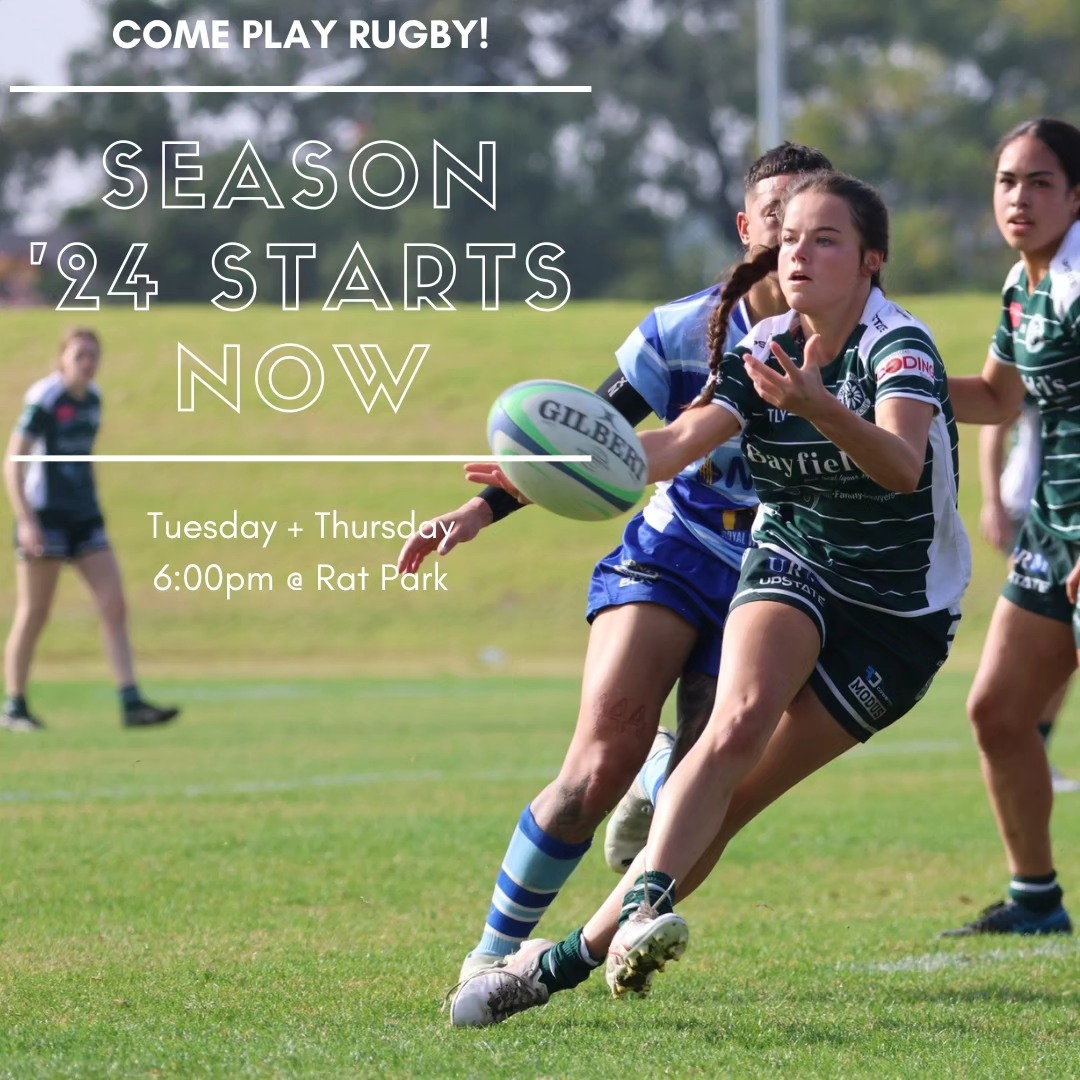
Applications Open For Study Subsidies To Boost NSW Healthcare Workforce
2024 Youth Parliament NSW Applications Now Open
The next generation of youth leaders is invited to apply to participate in the Y NSW's Youth Parliament program in 2024 with submissions now open.
Young people in Years 10, 11 and 12 (or equivalent age) in all 93 NSW state electorates are invited to express interest.
The Y (formerly YMCA) Youth Parliament provides a unique platform for individuals to actively participate in the democratic process and advocate for issues that they are passionate about.
The Y NSW is calling on young people from across the state to get involved. No experience is required, and people from diverse backgrounds are encouraged to apply, with financial sponsorships open to Aboriginal and Torres Strait Islander people, people living with a disability, individuals who identify as LGBTQIA+, those experiencing financial hardship, living in out-of-home care or rural areas, and refugee and asylum-seekers.
"At the Y, we believe in the power of inspired young people and Youth Parliament offers the opportunity for our youth to learn about the parliamentary system, develop critical thinking and public speaking skills, and engage in constructive debates about issues that matter to them and their communities," explained Executive Director/Interim CEO of the Y NSW Prue Warrilow.
"Participants will have the chance to draft, debate, and advocate for mock youth-focused legislation, gaining invaluable insights into the workings of government and policy development.
"Young parliamentarians also participate in a training camp in April and a sitting held in July in NSW Parliament next year. The Y then works actively to coordinate opportunities for the participants to present their Youth Bills to Ministers and other community leaders for consideration," continued Ms Warrilow.
Youth Parliament has supported more than 1,000 participants over the last decade with 97 per cent of participants surveyed saying they felt more empowered to advocate for issues in their local communities. Testament to the value of the program, former Youth Parliamentarians have gone on to become Members of Parliament and community leaders of influence and return to the Youth Parliament program as guests and mentors.
"We are particularly excited to welcome and encourage participation from young leaders of diverse backgrounds and those living in rural and remote communities, whose unique perspectives and experiences play a crucial role in shaping the discussions and policies at the Youth Parliament," added Ms Warrilow.
"Their active engagement and representation are vital in ensuring that the voices of all youth, regardless of location, are heard and considered in the decision-making processes that will affect our collective future," she continued.
17-year-old Cooma local Josh Abrokwah represented the Snowy Manaro region in the 2023 program and worked on a bill that addressed issues faced by migrants relocating to rural areas. Josh said he hopes the experience will enhance his academic career ambitions in international relations and praised the program for providing "activities such as mock debates, the chance to better our public speaking skills, and develop our parliamentary knowledge".
17-year-old Parramatta local, Rachel Lao was a 2023 Youth Parliament participant and is passionate about gender quality. Rachel was part of the NSW 2023 Women's Committee who put forward a bill to support mothers' reintegration into the workforce after maternity leave.
"The Youth Parliament program provides the unique opportunity to not only connect with people who have various perspectives, but who are willing to debate diplomatically about social issues," explained Ms Lao.
"I think that it's really encouraging to see the activism of our generation. Youth Parliament teaches participants how to lead and engage in debate that is productive and has the potential to make change.
"The connections and friendships I have made through Youth Parliament this year are invaluable and I know that my peers will be using their voices and actions to make change beyond their involvement in this program," she continued.
To apply to take part in the 2024 Youth Parliament, young people should visit ymcansw.org.au/community-services/youth/youth-parliament/ and submit their application before 9 February 2024.
School teachers and Members of Parliament can also nominate a young person.
School Leavers Support
- Download or explore the SLIK here to help guide Your Career.
- School Leavers Information Kit (PDF 5.2MB).
- School Leavers Information Kit (DOCX 0.9MB).
- The SLIK has also been translated into additional languages.
- Download our information booklets if you are rural, regional and remote, Aboriginal or Torres Strait Islander, or living with disability.
- Support for Regional, Rural and Remote School Leavers (PDF 2MB).
- Support for Regional, Rural and Remote School Leavers (DOCX 0.9MB).
- Support for Aboriginal and/or Torres Strait Islander School Leavers (PDF 2MB).
- Support for Aboriginal and/or Torres Strait Islander School Leavers (DOCX 1.1MB).
- Support for School Leavers with Disability (PDF 2MB).
- Support for School Leavers with Disability (DOCX 0.9MB).
- Download the Parents and Guardian’s Guide for School Leavers, which summarises the resources and information available to help you explore all the education, training, and work options available to your young person.
School Leavers Information Service
- navigate the School Leavers Information Kit (SLIK),
- access and use the Your Career website and tools; and
- find relevant support services if needed.
Word Of The Week: Peck
Noun
1. a stroke or bite by a bird with its beak. 2. Archaic; food. 3. system of measurement.
A peck is an imperial and United States customary unit of dry volume,[1] equivalent to 2 dry gallons or 8 dry quarts or 16 dry pints. An imperial peck is equivalent to 9.09 litres and a US customary peck is equivalent to 8.81 litres. Two pecks make a kenning (obsolete), and four pecks make a bushel. Although the peck is no longer widely used, some produce, such as apples, are still often sold by the peck in the U.S. (although it is obsolete in the UK, found only in the old nursery rhyme "Peter Piper" and in the Bible – e.g., Matthew 5:15 in some older translations). In Scotland, the peck was used as a dry measure until the introduction of imperial units as a result of the Weights and Measures Act of 1824. The peck was equal to about 9 litres (1.98 Imp gal) (in the case of certain crops, such as wheat, peas, beans and meal) and about 13 litres (2.86 Imp gal) (in the case of barley, oats and malt). A firlot was equal to 4 pecks.
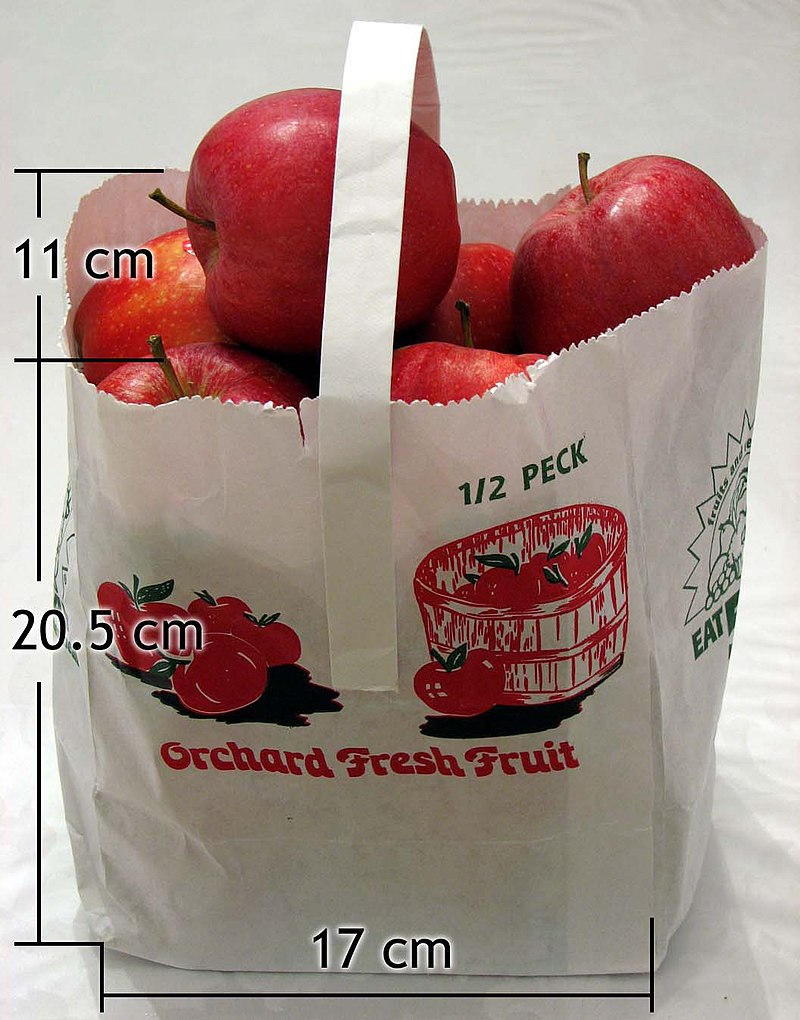
Verb
1. (of a bird) strike or bite something with its beak. 2. a short simple kiss.
From peck (verb) c. 1300, pekken, of a bird, "to strike at (something) with the beak," possibly a variant of picken, or in part from Middle Low German pekken "to peck with the beak."
also from c. 1300 peck (noun) "dry measure of one-quarter bushel," late 13c., pekke, of unknown origin; perhaps connected with Old French pek, picot (13c.), also of unknown origin (some state these were borrowed from English). Chiefly of oats for horses; original sense may be "allowance" rather than a fixed measure, thus perhaps from peck. Originally not a precise measure and later sometimes used colloquially as "a great deal" (a peck of troubles, etc.).
pecking order; noun - a hierarchy of status seen among members of a group of people or animals, originally as observed among hens.
The Solar System used to have nine planets. Maybe it still does? Here’s your catch-up on space today

Some of us remember August 24 2006 like it was yesterday. It was the day Pluto got booted from the exclusive “planets club”.
I (Sara) was 11 years old, and my entire class began lunch break by passionately chanting “Pluto is a planet” in protest of the information we’d just received. It was a touching display. At the time, 11-year-old me was outraged – even somewhat inconsolable. Now, a much older me wholeheartedly accepts: Pluto is not a planet.
Similar to Sara, I (Rebecca) vividly remember Pluto’s re-designation to dwarf status. For me, it wasn’t so much that the celestial body had been reclassified. That is science, after all, and things change with new knowledge. Rather, what got to me was how the astronomy community handled the PR.
Even popular astronomers known for their public persona stumbled through mostly unapologetic explanations. It was a missed opportunity. What was poorly communicated as a demotion was actually the discovery of new exciting members of our Solar System, of which Pluto was the first.
The good news is astronomers have better media support now, and there’s a lot of amazing science to catch up on. Let’s go over what you might have missed.

A Throwback To A Shocking Demotion
Pluto’s fate was almost certainly sealed the day Eris was discovered in 2005. Like Pluto, Eris orbits in the outskirts of our Solar System. Although it has a smaller radius than Pluto, it has more mass.
Astronomers concluded that discovering objects such as Pluto and Eris would only become more common as our telescopes became more powerful. They were right. Today there are five known dwarf planets in the Solar System.
The conditions for what classifies a “planet” as opposed to a “dwarf planet” were set by the International Astronomical Union. To cut a long story short, Pluto wasn’t being targeted back in 2006. It just didn’t meet all three criteria for a fully fledged planet:
- it must orbit a star (in our Solar System this would be the Sun)
- it must be big enough that gravity has forced it into a spherical shape
- it must be big enough that its own gravity has cleared away any other objects of a similar size near its orbit.
The third criterion was Pluto’s downfall. It hasn’t cleared its neighbouring region of other objects.
So is our Solar System fated to have just eight planets? Not necessarily. There may be another one waiting to be found.
Is There A Planet Nine Out There?
With the discovery of new and distant dwarf planets, astronomers eventually realised the dwarf planets’ motions around the Sun didn’t quite add up.
We can use complicated simulations in supercomputers to model how gravitational interactions would play out in a complex environment such as our Solar System.
In 2016, California Institute of Technology astronomers Konstantin Batygin and Mike Brown concluded – after modelling the dwarf planets and their observed paths – that mathematically there ought be a ninth planet out there.
Their modelling determined this planet would have to be about ten times the mass of Earth, and located some 90 billion kilometres away from the Sun (about 15 times farther then Pluto). It’s a pretty bold claim, and some remain sceptical.
One might assume it’s easy to determine whether such a planet exists. Just point a telescope towards where you think it is and look, right? If we can see galaxies billions of light years away, shouldn’t we be able to spot a ninth planet in our own Solar System?
Well, the issue lies in how (not) bright this theoretical planet would be. Best estimates suggest it sits at the depth limit of Earth’s largest telescopes. In other words, it could be 600 times fainter than Pluto.
The other issue is we don’t know exactly where to look. Our Solar System is really big, and it would take a significant amount of time to cover the entire sky region in which Planet Nine might be hiding. To further complicate things, there’s only a small window each year during which conditions are just right for this search.
That isn’t stopping us from looking, though. In 2021, a team using the Atacama Cosmology Telescope (a millimetre-wave radio telescope) published the results from their search for a ninth planet’s movement in the outskirts of the Solar System.
While they weren’t able to confirm its existence, they provided ten candidates for further follow-up. We may only be a few years from knowing what lurks in the outskirts of our planetary neighbourhood.
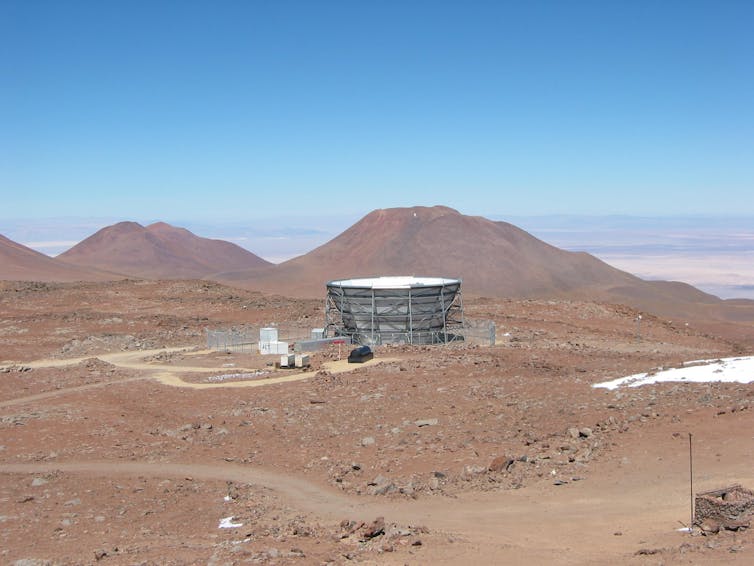
Finding Exoplanets
Even though we have telescopes that can reveal galaxies from the universe’s earliest years, we still can’t easily directly image planets outside of our Solar System, also called exoplanets.
The reason can be found in fundamental physics. Planets emit very dim red wavelengths of light, so we can only see them clearly when they’re reflecting the light of their star. The farther away a planet is from its star, the harder it is to see.
Astronomers knew they’d have to find other ways to look for planets in foreign star systems. Before Pluto was reclassified they had already detected the first exoplanet, 51 Pegasi B, using a radial velocity method.
This gas giant world is large enough, and close enough to its star, that the gravitational tug of war between the two can be detected all the way from Earth. However, this method of discovery is tedious and challenging from Earth’s surface.
So astronomers came up with another way to find exoplanets: the transit method. When Mercury or Venus pass in front of the Sun, they block a small amount of the Sun’s light. With powerful telescopes, we can look for this phenomenon in distant star systems as well.

We do this via the Kepler space telescope and the Transiting Exoplanet Survey Satellite (TESS). Both have observed tens of thousands of stars and discovered thousands of new planets – dozens of which are about the same size as Earth.
But these observatories can only tell us a planet’s size and distance from its star. They can’t tell us if a planet might be hosting life. For that we’d need the James Webb Space Telescope.
Looking For Life
The James Webb Space Telescope (JWST) has just wrapped up its first year and a half of science. Among its many achievements is the detection of molecules in the atmospheres of exoplanets, a feat made possible by the transit method.
One of these exoplanets, WASP-17, is also known as a “hot Jupiter”. It seems to have been plucked from a page in a sci-fi novel, with evidence for quartz nanocrystals in its clouds.
Meanwhile, the super-Earth K2-18b (a Kepler find) shows signs of methane and carbon dioxide. But while such discoveries are amazing, the magic ingredient necessary for life still eludes us: water vapour.
The field of planetary studies is evolving and 2024 looks promising. Maybe JWST will finally produce signs of water vapour in an exoplanet atmosphere. Who knows, we might even have a ninth planet surprise us all, filling the void left by Pluto.
Stay tuned for exciting science to come.![]()

Sara Webb, Lecturer, Centre for Astrophysics and Supercomputing, Swinburne University of Technology and Rebecca Allen, Coordinator Swinburne Astronomy Online | Program Lead of Microgravity Experimentation, Space Technology and Industry Institute, Swinburne University of Technology
This article is republished from The Conversation under a Creative Commons license. Read the original article.
Japan is now the 5th country to land on the Moon – the technology used will lend itself to future lunar missions

Japan landed its Smart Lander for Investigating the Moon, or SLIM, craft on the surface of the Moon on Jan. 20, 2024. Despite a power issue with the lander, the event holds both political and technical importance. It’s Japan’s first lunar landing – making it only the fifth country in the world to successfully land on the Moon. This is a significant achievement and solidifies Japan’s position as a leader in space technology.
While the craft landed successfully on the lunar surface and deployed its rovers, SLIM’s solar cells were not functioning properly – meaning that the craft could likely only operate for a few hours.
I’m a scholar of international affairs who studies space. Like NASA and other space agencies, the Japan Aerospace Exploration Agency, or JAXA, wants to advance research and technology by demonstrating new techniques and collecting scientific data. The landing is also a part of something bigger – a growing global interest in lunar activity.
Precision Technology
Japan’s achievement isn’t only symbolic – Japan is demonstrating a number of new technologies with the lander. The name, Smart Lander for Investigating the Moon, refers to the spacecraft’s new precision-landing technology.
This technology could assist future landings by allowing spacecraft to land in relatively small areas amid rocky or uneven terrain, rather than having to find large clearings. This ability will be particularly important in the future as countries focus on very specific areas of interest at the lunar south pole.
The lander also carried two small rovers, each of which will demonstrate a new technology for moving on the Moon.
Lunar Excursion Vehicle 1 includes a camera, as well as scientific equipment, and uses a hopping mechanism to maneuver on the Moon.
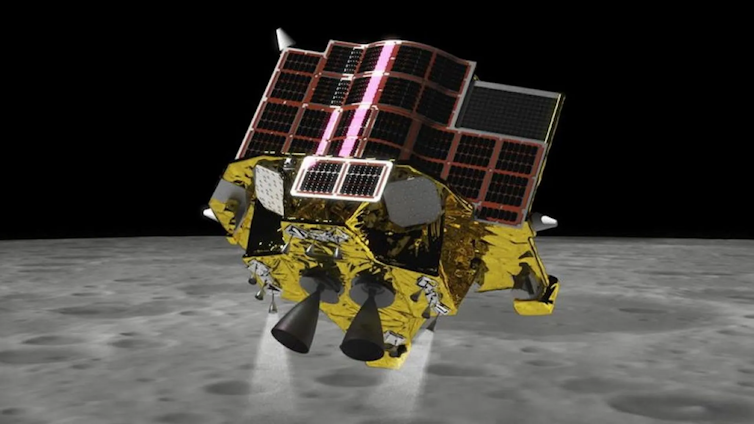
Lunar Excursion Vehicle 2, developed in a partnership among government, industry, and academia, is a sphere small enough to fit in the palm of your hand. Once on the surface, its two halves separate slightly, allowing it to roll around.
SLIM is designed to land within a 328-foot (100-meter) zone, far smaller than previous lunar landers which have had landing zones spanning multiple kilometers.
SLIM used a vision-based navigation system that took images of the lunar surface. Its system rapidly compared these images to crater patterns on lunar maps that JAXA developed with data from previous missions.
As countries identify areas that are most likely to hold useful resources, such as water in the form of ice, precision landing technology will allow agencies to avoid nearby hazards and reach these areas without incident.
International Relations Back On Earth
There is a geopolitical element to these activities. China, India and Japan – the three nations that have successfully landed on the Moon since 2000 – engage in regional competition across a number of areas, including space. In addition to regional considerations, these accomplishments help to establish nations as leaders on a global scale – capable of something that few nations have ever done.
Japan’s launch comes only six months after India’s Moon landing and just weeks after a failed attempt by a U.S. company, Astrobotic.
Both Russia and the private company iSpace made unsuccessful landing attempts in 2023. Japan’s success in landing on the Moon – even with solar panel issues shortening the timeline for the mission – demonstrates that JAXA is a major player in this global endeavor.
Despite recent setbacks, such as NASA announcing delays to its next Artemis mission, the U.S. is still a clear leader in space and lunar exploration. NASA has multiple spacecraft orbiting the Moon right now, and it’s already successfully launched the SLS rocket, which is capable of taking humans back to the Moon.
NASA is developing very large and complex systems internally – like the Gateway space station, planned to orbit near the Moon, and the infrastructure for the Artemis human Moon missions. It’s not uncommon for these large and complex efforts to experience some delays.
NASA has also turned many smaller-scale efforts over to commercial entities lately – like in the Commercial Lunar Payload Services program that supported Astrobotic’s attempt. This is a new approach that involves some risk, but provides the opportunity for commercial innovation and growth of the lunar economy while giving NASA the ability to focus on big, complex aspects of the mission.
With regard to the Moon, JAXA has partnered with the U.S. and taken on a very important component of the Artemis missions – the development of a pressurized lunar rover. This is a new and complex technology that will be critical to human missions on the Moon in coming years.![]()
Mariel Borowitz, Associate Professor of International Affairs, Georgia Institute of Technology
This article is republished from The Conversation under a Creative Commons license. Read the original article.
How Dostoevsky overcame his gambling addiction

Dostoevsky had to write The Gambler in two months. He had no choice. He had accepted 3,000 roubles from a publisher named Stellovsky to keep his creditors at bay. If he failed to deliver a work of not less than ten printer’s sheets (160 pages) by November 1, 1866, Stellovsky would receive the rights and income for all of Dostoevsky’s previous and future work for nine years.
Dostoevsky broke off writing Crime and Punishment to take on the seemingly insurmountable task of completing a novel in such a sort period of time. He drew on his experience of being addicted to gambling.
His gambling mania had first seized him in 1863 on a tour of Europe, where he developed a passion for roulette. Dostoevsky soon fell into a pattern of chasing his losses, telling himself that his fortunes would change and he would redeem himself:
…one turn of the wheel, and all will be changed, and those very moralists will be the first (I am convinced of that) to come up to congratulate me with friendly jests. And they will not all turn away from me as they do now. But, hang them all! What am I now? Zero. What may I be tomorrow? Tomorrow I may rise from the dead and begin to live again! There are still the makings of a man in me.
Boundless Egoism
In Crime and Punishment, an impoverished student named Rodion Raskolnikov murders an elderly pawnbroker with an axe. The reader follows his dialogue with himself until he confesses and seeks atonement for his actions.
In The Gambler, there is only a spiral downward with no landing point. Alexei Ivanovich, a tutor working for the family of a once wealthy general, initially shows no interest or desire to gamble. By the end, he is totally addicted to roulette. His character is transformed. From what Dostoevsky calls an aristocratic disinterest in winning (or losing), Alexi becomes a person with a plebeian willingness to lose his very last coin.
The “aristocratic” type gambles only for pure pleasure. The “plebeian” embraces the risk of gambling in the hope of changing his life – if only he can win big enough.

The novel reminds the reader of what it is like to be drawn into a culture of gambling, where the first win at a roulette table (or in any form of gambling) is burned into one’s memory for ever.
The compulsive gambler holds on to the idea that continued gambling will, through improved skills, lead to proportionally higher rewards. But what takes hold in reality is the erroneous belief that they can develop an infallible gambling system, governed simply by the power of reason, which will allow them to conquer the ever-spinning roulette wheel.
Another trait evident in The Gambler is “boundless egoism” – this was Sigmund Freud’s reading of Dostoevsky. As the gambler becomes addicted, he loses all sense of socially motivated feelings, such as sympathy for family members or friends.
For Alexi, an emotional numbness prevails:
I am living, of course, in continual anxiety. I play for the tiniest stakes, and I keep waiting for something, calculating, standing for whole days at the gambling table and watching the play; I even dream of playing – but I feel that in all this, I have, as it were, grown stiff and wooden, as though I had sunk into a muddy swamp.
This is a heartfelt description of the internal experience of fear, hope, defeat and entrapment. Alexei reflects on where he is in life: his hopes and dreams, the “whole days” spent stuck in one spot “watching the play”. He loses all desire for Polina, his romantic interest at the start of the novel. He has “grown stiff” and “stuck”, despite the love, comfort and connection she might provide.
Addiction And Revelation
The treatment of gambling addiction is not a topic in The Gambler – only Alexi’s tragic fall from grace. But without psychiatric knowledge, or perhaps in spite of his personal awareness of what he was describing at the time, Dostoevsky tapped into the raw experience of gambling and the issue of how to understand gambling addiction.
Our understanding of gambling addiction is still evolving. Treatments are being explored and developed. From 1980, the American Psychiatric Association included compulsive gambling in its Diagnostic and Statistical Manual of Mental Disorders as a form of impulse control disorder, alongside kleptomania and pyromania.
In 2013, gambling was reclassified as gambling disorder, within the substance-related and addictive disorders categorisation. This marked, among other things, a turn towards the investigation and use of pharmaceutical treatments, such as dopamine, to control the gambling impulse. It is noteworthy, that online gambling or gaming is not classified in this space.
So how does one overcome these challenges when knowledge, while no longer in its infancy, is still expanding?
Dostoevsky offers a potentially valuable example of how one moment or a chance happening can change everything. It might sound counterintuitive to wait for such an event in a modern world such as ours, where advice from professionals or the internet is close to hand, but those cured of gambling addictions have often emphasised the role of chance or sudden revelation in their rehabilitation.

Eight days after having completed The Gambler, Dostoevsky proposed marriage to his stenographer, Anna Grigoryevna Snitkin. She accepted and they soon went abroad for a number of years. During this period, Dostoevsky gambled heavily, often pawning their belongings so he could gamble further. He would travel ahead to a town or resort with gaming tables, then write letters back to Anna chastising himself for losing all their money.
Anna believed Dostoevsky needed gambling as a kind of cathartic, physiological release from his daily frustrations. She felt it cleared his mind to concentrate on his writing. By all accounts, she was unsuccessful in reversing the gambling tendency in Dostoevsky. As with most gambling addicts, Dostoevsky oscillated between confessions to his wife, hope for forgiveness, and promises it will not happen again – promises he would then break.
But then, in a letter to Anna in 1871, he shares a life changing epiphany:
By half past nine I had lost everything and I fled like a madman. I felt so miserable that I rushed to see the priest (don’t get upset, I did not see him, no, I did not, nor do I intend to!) […] But I lost my way in this town and when I reached a church, which I took for a Russian church, they told me in a store that it was not Russian but a synagogue. It was as if someone had poured cold water over me. I ran back home. And now it is midnight and I am sitting and writing to you.
A great thing has happened to me: I have rid myself of the abominable delusion that has tormented me for almost 10 years. For 10 years (or, to be more precise, ever since my brother’s death, when I suddenly found myself weighted down by debts) I dreamed about winning money. I dreamt of it seriously, passionately. But now it is all over! This was the very last time.
And so it was. Dostoevsky lost all interest in gambling for good. He no longer dreamed of winning. The delusion that he might win enough to transform his life had left him as easily as it had arrived. The change in his character was permanent.
The key moment, with its many spiritual echoes was: “it was as if someone had poured cold water over me”. Worthy of comment, too, is his inability to access the familiarity and reassurance of the Russian Orthodox church. Disoriented, he arrives instead a Jewish synagogue. Arguably, it was this strangeness that made him uneasy and vulnerable to an experience, spiritual or otherwise, that had a lasting effect on his view of gambling and its personal consequences.
There is, however, another account that does not quite line up with the timeline of his cure – one that is less mysterious, but of interest nonetheless.
Gambling had been for Dostoevsky a “kind of obsession”, an experience defined by the thrill of “half-hanging over an abyss so as to peer into its very depths and – in certain, though not frequent cases – flinging oneself headlong into it”.
In 1871, Dostoevsky went abroad to Ems for a cure. He had a bronchial condition, the first symptoms of which had appeared as early as 1868. Could it be that his abandonment of gambling was related to his not being able to endure the excitement of gambling? His health had deteriorated to such an extent that he lacked the necessary physical strength; it was physiologically too much for him. Perhaps physical incapacity had a hand in his cure?![]()
Stephen Dobson, Professor and Dean of Education and the Arts, CQUniversity Australia
This article is republished from The Conversation under a Creative Commons license. Read the original article.
A Queensland woman allegedly stole 70 wedding dresses. Here’s why the white gown is worth much more than its price tag

For many the wedding gown is the most expensive item of clothing they will ever own, and it has significant emotional and social value.
The recent case of a Queensland woman allegedly scamming brides out of their wedding dresses on the pretext of dry-cleaning no doubt bought distress to their owners and, given the average price of a wedding dress today (A$2,385), 70 cases of wedding dress theft could be lucrative.
The average cost of an Australian wedding is A$36,000. Despite many Australians forgoing a religious ceremony, declaring your love in front of friends and family remains an important social ritual – and the dress is often the most important consideration.
A Brief History
The modern history of the wedding dress in Australia is closely linked to Queen Victoria. Her 1840 dress became the “quintessential wedding dress”.
Victoria’s white dress featured an eight-piece bodice with a wide, open neckline with short and puffed off-the-shoulder sleeves and a pointed waistline. The neckline and sleeves were trimmed with lace and the floor-length skirt was full, with forward-facing pleats.

Prior to Victoria, the wearing of white signalled the bride was poor and without a dowry. In the 16th and 17th centuries brides would often wear pale green, symbolising fertility.
From the 19th century, white wedding dresses had been worn by wealthy and royal brides, but for royal brides the dresses were often completely covered in silver and gold threads. Victoria rejected the embellishment and did not wear the red ermine robe of state, wanting to be seen as a wife rather than queen.
Most 19th century brides wore a dress they could wear again and popular colours were russet, brown, grey or lilac.

As white gowns became increasingly popular they began to be seen as symbols of purity and innocence because of the religious association of these colours.
The association of white with innocence in the popular imagination affected the wedding gown decisions of women who were not marrying for the first time. Widows remarrying in the Victorian era didn’t wear white and didn’t wear a veil. They might wear pearl or lavender dresses trimmed with ostrich feathers.

Over the 20th century, white wedding dresses became increasingly popular. Brides were no longer wearing their “Sunday best”, and the tradition of buying a unique bridal gown became established. By the turn of the 21st century, historian Christyana Bambacas found wedding planning had become the reserve of the bride and the white gown had become the central artefact, positioning “the bride as star of this public ritual”.
Australian brides often have highly emotional connections to their wedding gowns. Research into discussions on online wedding forums found brides-to-be used phrases such as “my love for my dress grew” and being “in love with” their gowns. The gown represents the bride’s idealised self – even if the event is temporary.
The tradition of keeping the dress a well-kept secret stems from 18th century arranged marriages, when it was believed to be “unlucky” for the groom to see the brides, lest he pull out of the wedding. The anticipation of the reveal of Kate Middleton’s wedding dress, where even the name of the designers was kept secret, reflects this ritual.
Something Old
Unlike couture or historical garments, wedding gowns are familiar. They are common to the human experience, and yet unique to each bride.
Wearing your mother’s or grandmother’s wedding gown is becoming increasingly popular. Princess Beatrice was married in a gown designed by Norman Hartnell for her grandmother, Queen Elizabeth II, in the 1960s.
With just a few adjustments, brides are able to update vintage gowns to give them a modern twist.
Two-thirds of Australian brides keep their dress, many in the hope daughters or granddaughters will wear it. This suggests that, despite the increasing number of people choosing to not get married, weddings remain an important cultural ritual.
Some women keep their dress to be buried in. Others donate their wedding dresses to be made into Angel gowns to bury stillborn babies, the dress taking on new meaning for grieving families.
The End Of The Big Wedding
The average age of first marriage in Australia has risen from 23-years-old for men and 20-years-old for women in 1970 to around 30 today.
The current cost-of-living and housing crises has seen couples cut back on their wedding expenditure, with impacts particularly felt by wedding gown businesses at the luxury end of the market.
Regardless of rising divorce rates, and generational shift in attitudes to marriage (43% of 18-39 year olds believe it is an outdated institution), marriage is considered a one-off life event.

The wedding dress is an indulgence driven by social norms and emotions where the bride is often balancing tradition with individuality.
While films, fashion, bridal magazines and celebrity weddings continue to perpetuate the fantasy and emotion embedded in the wedding dress, the dress continues to be a poignant part of our social lives.
Of all the clothes we own, the wedding dress is the one most treasured, as a reminder of what it symbolised, its aspirations or as a family heirloom – making its loss even more distressing. ![]()
Lisa J. Hackett, Lecturer, University of New England and Jo Coghlan, Associate Professor Humanities Arts and Social Sciences, University of New England
This article is republished from The Conversation under a Creative Commons license. Read the original article.
How to watch dance
Yvette Grant, The University of MelbourneWatching dance is watching an extraordinary and fleeting artistic creation that uses an instrument we all have: the human body. The dancing body communicates a unique sense of being human as it speaks to us through its bones, its muscles, its skin, its cells.
But have you ever been to a dance performance and wondered what it was all about? Or wanted to go see some dance, but been unsure of where to start?
For the uninitiated, dance can be difficult because, like music, it uses a non-verbal language. These basics can open the door to enjoying the beauty and complexity of this physical art.
1. Know The Code
There are so many kinds of dance, and all have different ways of communicating – different codes.
For example, in ballet the body is vertical and straight and the legs and arms move around that erect centre. The emphasis is on lightness.
In contrast, in contemporary dance, the body contracts and bends and the movement is grounded and close to the floor.
And these are only two of the Western forms of dance. Every culture has their own dance form, and these all have their own codes.
Some performances are a blend of codes. For example, Bangarra Dance Theatre has created a style which blends traditional Indigenous Australian dance with Western contemporary dance and ballet.
Knowing the code means you know the building blocks, the rules, the frame for the performance. You have a benchmark for what to expect.
2. Do Your Research
If you’re going to see a ballet, there might be a story and you’ll be expected to know the story before you see the ballet – unlike plays where the excitement is the story being revealed on stage. Ballet companies will often publish this story on their website, or you can look up the work on Wikipedia.
But much like conceptual art (imagine a painting with a small red splodge in the corner of a green background – what does it mean?), the ideas behind a lot of dance performances are not immediately obvious. They may be quite abstract.
In this case, reading what the choreographer says about the work before you see it, and knowing a bit about their other works, gives you a context and a way to make meaning of what you see. You can find interviews with choreographers in various online publications, on company websites, or look them up on YouTube.
3. It’s All About The Movement
Story or no story, dance is ultimately about a body moving through space. The pleasure in watching dance comes in engaging with the patterns, the movement vocabulary and phrasing, and the energetic quality of the dancers.
You can appreciate the pattern a body makes moving high or low, traversing the whole stage or staying in one place. With more than one body on stage, you notice the patterns the group make much like noticing the changing configurations of a flock of birds.
Movement vocabulary is the collection of “body words”, or steps, that are repeated and form dance phrases. These can be unique to a performance or a choreographer. The way the vocabulary is arranged in terms of structure, space and timing creates the dance.
The energetic quality of the dancers – think soft, light and flowing versus powerful, attacking and weighty – can change the emotion of the dance and your interpretation.
4. There Are No Right And Wrong Answers
A dance performance is not a murder mystery. In watching dance, you are not trying to unlock a singular meaning.
Instead, you are engaging with and appreciating all the factors listed here as well as the other arts on display including the sound, the designs, the lighting and the costumes. You may find a different meaning or different elements to appreciate to other people.
The performance in this video from Chunky Move clearly has characters suggesting a narrative, but it is left up to the audience to interpret the action for themselves. The main meaning comes through the concept being explored which is depth of field.
5. Know The Etiquette
Like most shows and exhibitions these days, what you wear is up to you. Even in state theatres and opera houses, some will wear ball gowns, others jeans.
In a traditional theatre setting, once seated, you are expected to watch the whole performance. Some dance performances might be in galleries and for these you can wander around and leave when you’re ready.
Applause is a bit tricky. Sometimes you can applaud during the performance, and sometimes not. Even seasoned dance watchers sometimes get it wrong. So, until you get the hang of it, just follow along. At the end of the performance, there may be multiple curtain calls or bows, especially if there is a large cast, and the audience is expected to continue applauding as long as the bowing continues. You can leave once the lights come up.
If you feel very enthusiastic about the performance, you may stand and applaud. If most of the audience does this, it’s called a standing ovation. But it also doesn’t matter if you are the only one standing.![]()
Yvette Grant, PhD (Dance) Candidate and Dance History Tutor, The University of Melbourne
This article is republished from The Conversation under a Creative Commons license. Read the original article.
I felt nothing at Madame Tussauds – until I found my brother’s statue, and felt love

Spitting image, dead ringer, chip off the old block. Doubles, twins and doppelgangers have a funny way of tricking us.
When I encountered Anne Zahalka’s photo portrait of Nicole Kidman at the Art Gallery of New South Wales, I assumed what I was looking at was a straightforward representation of the Hollywood actress.
Then I discovered that the portrait was, in fact, Kidman’s wax double at Madame Tussauds. By photographing a wax double, Zahalka reproduced a copy, intensifying the duplication of an already replicated image.
Beyond Zahalka’s portrait of Kidman, my encounter with Madame Tussauds had been nil. Truthfully, the global tourist attraction had never been on my bucket list, until now.
In October 2021, Madame Tussauds Dubai revealed a life-size wax figure of my brother Kristan Fahd, known for the past 16 years in the United Arab Emirates as radio entertainer Kris Fade.

My Other Brother
My brother hosts the UAE’s number-one morning radio program, The Kris Fade Show, on Virgin Radio. His breakfast show can be heard across Australia on Sunday mornings on KIIS FM. Last year, he also joined the cast of Netflix’s Dubai Bling. And if that’s not enough to keep him busy, he founded a Dubai-based healthy snack company, Fade Fit, in 2018. All this made him endearingly popular enough to attract his own wax figure.
With his family in Sydney, Kris shared photographs of his wax effigy online. We were excited by this public recognition of his contribution to culture in the UAE. In our family group chat we collectively celebrated this illustrious milestone.
But it wasn’t until I visited Madame Tussauds Dubai with him and my family in March 2022 that the strangeness of such an encounter set in.

Encountering Lady Gaga, Posh and Becks, Taylor Swift and Tom Cruise registered the typical expression of “Wow, aren’t they so lifelike!”
But encountering a sibling – a person I love, the brother whose face feels and looks like my face – is an altogether different experience.
At first, I watched as fans came and went, posing with his statue in a replica radio studio and feeling lucky because they happened to come on the day the real Kris Fade was there.
I watched my parents turn the corner and enter the room to encounter their son. It appeared like a slow-motion scene from a romantic movie, deaccelerated for my benefit, the artist daughter with the watchful eye.

My father spontaneously wept. It was as if my brother had been resurrected. My mother, also in tears, could not keep her hands off him. She stroked and touched and blessed him. When she tried to kiss his face with her Chanel red lips, my brother had to stop her: “Mum, you’re not allowed to touch me.”
“I love you,” she whispered to the statue.
Then, our London-based relatives approached and took photos with the two of him. I listened intently as they chatted and laughed, amazed by the realism of the statue and the fame that a Madame Tussauds wax figure gestures toward.
Then, it was my turn to approach. I didn’t touch. I got right up close and looked straight into his shining black eyes. It was these tiny details that moved me most. I took a photo with both my brothers and left.

Feeling Love
I returned a year and a half after my first encounter for a private visit. I wanted to study the statue without my brother and family in tow.
It was quiet, and the statue was in a new setting. From an Arabian desert scene, he appeared to be welcoming visitors to Dubai.
I got to work studying the statue the way an artist does. I saw that every hair on his face and head appeared in the right place. His stubble appeared just like the one that scratches my face when we hug and kiss.
The big gothic punk rings on his fingers, so idiosyncratic, were exact. The open chest stance, the tattoos peering out from under the clothes, the muscle shirt – all his signature style. His long hair and man bun, the curl of his lip, the size of his nose, his diamond piercings and his affectionate posture perfectly resembled my brother.
Then I turned my attention to myself. What was I, his big sister, an artist, bringing to this encounter? I felt nothing in front of the other statues. In front of him, I felt love. I placed my hand on his hand and thanked him for the ease of our affection.
Seeing resemblances is easy. But it was at the level of feeling that I understood the most. This wax figure was displaced by sibling attachment. It was not a Madame Tussauds wax figure of a celebrity. It was my brother. Not a replica, but him. At the level of feeling, they were one and the same.

Kris and I discussed his wax double. I shared my personal experience, and he expressed a fascination with the unavoidable reversal of the Picture of Dorian Gray. In contrast to Dorian’s perpetual youth, my brother contemplates the mortal experience of growing older while witnessing the everlasting shine of his immortal self. ![]()
Cherine Fahd, Associate Professor Visual Communication, University of Technology Sydney
This article is republished from The Conversation under a Creative Commons license. Read the original article.
Transhumanism: billionaires want to use tech to enhance our abilities – the outcomes could change what it means to be human

Many prominent people in the tech industry have talked about the increasing convergence between humans and machines in coming decades. For example, Elon Musk has reportedly said he wants humans to merge with AI “to achieve a symbiosis with artificial intelligence”.
His company Neuralink aims to facilitate this convergence so that humans won’t be “left behind” as technology advances in the future. While people with disabilities would be near-term recipients of these innovations, some believe technologies like this could be used to enhance abilities in everyone.
These aims are inspired by an idea called transhumanism, the belief that we should use science and technology to radically enhance human capabilities and seek to direct our own evolutionary path. Disease, aging and death are all realities transhumanists wish to end, alongside dramatically increasing our cognitive, emotional and physical capacities.
Transhumanists often advocate for the three “supers” of superintelligence, superlongevity and superhappiness, the last referring to ways of achieving lasting happiness. There are many different views among the transhumanist community of what our ongoing evolution should look like.
For example, some advocate uploading the mind into digital form and settling the cosmos. Others think we should remain organic beings but rewire or upgrade our biology through genetic engineering and other methods. A future of designer babies, artificial wombs and anti-aging therapies appeal to these thinkers.
This may all sound futuristic and fantastical, but rapid developments in artificial intelligence (AI) and synthetic biology have led some to argue we are on the cusp of creating such possibilities.
God-Like Role
Tech billionaires are among the biggest promoters of transhumanist thinking. It is not hard to understand why: they could be the central protagonists in the most important moment in history.
Creating so-called artificial general intelligence (AGI) – that is, an AI system that can do all the cognitive tasks a human can do and more – is a current focus within Silicon Valley. AGI is seen as vital to enabling us to take on the God-like role of designing our own evolutionary futures.

That is why companies like OpenAI, DeepMind and Anthropic are racing towards the development of AGI, despite some experts warning that it could lead to human extinction.
In the short term, the promises and the perils are probably overstated. After all, these companies have a lot to gain by making us think they are on the verge of engineering a divine power that can create utopia or destroy the world. Meanwhile, AI has played a role in fuelling our polarised political landscape, with disinformation and more complex forms of manipulation made more effective by generative AI.
Indeed, AI systems are already causing many other forms of social and environmental harm. AI companies rarely wish to address these harms though. If they can make governments focus on long-term potential “safety” issues relating to possible existential risks instead of actual social and environmental injustices, they stand to benefit from the resulting regulatory framework.
But if we lack the capacity and determination to address these real world harms, it’s hard to believe that we will be able to mitigate larger-scale risks that AI may hypothetically enable. If there really is a threat that AGI could pose an existential risk, for example, everyone would shoulder that cost, but the profits would be very much private.
A Familiar Story
This issue within AI development can be seen as a microcosm of why the wider transhumanist imagination may appeal to billionaire elites in an age of multiple crises. It speaks to the refusal to engage in grounded ethics, injustices and challenges and offers a grandiose narrative of a resplendent future to distract from the current moment.
Our misuse of the planet’s resources has set in train a sixth mass extinction of species and a climate crisis. In addition, ongoing wars with increasingly potent weapons remain a part of our technological evolution.
There’s also the pressing question of whose future will be transhuman. We currently live in a very unequal world. Transhumanism, if developed in anything like our existing context, is likely to greatly increase inequality, and may have catastrophic consequences for the majority of humans.
Perhaps transhumanism itself is a symptom of the kind of thinking that has created our parlous social reality. It is a narrative that encourages us to hit the gas, expropriate nature even more, keep growing and not look back at the devastation in the rear-view mirror.
If we’re really on the verge of creating an enhanced version of humanity, we should start to ask some big questions about what being human should mean, and therefore what an enhancement of humanity should entail.
If the human is an aspiring God, then it lays claim to dominion over nature and the body, making all amenable to its desires. But if the human is an animal embedded in complex relations with other species and nature at large, then “enhancement” is contingent on the health and sustainability of its relations.
If the human is conceived of as an environmental threat, then enhancement is surely that which redirects its exploitative lifeways. Perhaps becoming more-than-human should constitute a much more responsible humanity.
One that shows compassion to and awareness of other forms of life in this rich and wondrous planet. That would be preferable to colonising and extending ourselves, with great hubris, at the expense of everything, and everyone, else.![]()
Alexander Thomas, Programme Leader, Media, Fashion & Communications, University of East London
This article is republished from The Conversation under a Creative Commons license. Read the original article.
DNA from stone age chewing gum sheds light on diet and disease in Scandinavia’s ancient hunter-gatherers
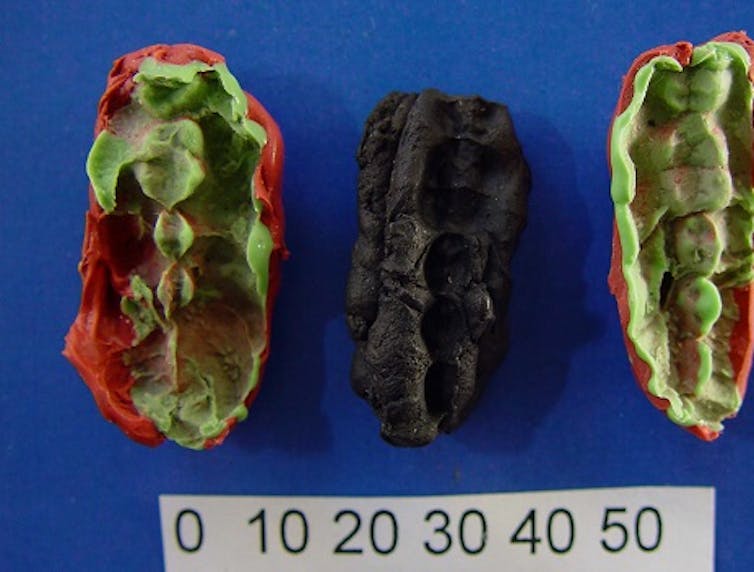
Some 9,700 years ago on an autumn day, a group of people were camping on the west coast of Scandinavia. They were hunter-gatherers that had been fishing, hunting and collecting resources in the area.
Some teenagers, both boys and girls, were chewing resin to produce glue, just after eating trout, deer and hazelnuts. Due to a severe gum infection (periodontitis), one of the teenagers had problems eating the chewy deer-meat, as well as preparing the resin by chewing it.
This snapshot of the Mesolithic period, just before Europeans started farming, comes from analysis of DNA left in the chewed resin that we have conducted, now published in Scientific Reports.
The location is now known as Huseby Klev, situated north of Gothenburg (Göteborg), Sweden. It was excavated by archaeologists in the early 1990s, and yielded some 1,849 flint artefacts and 115 pieces of resin (mastic). The site has been radiocarbon dated to between 10,200 and 9,400 years ago, with one of the pieces of resin dated to 9,700 years ago.
Some of the resin has teeth imprints, indicating that children, actually teenagers, had been chewing them. Masticated lumps, often with imprints of teeth, fingerprints or both, are not uncommon to find in Mesolithic sites.
The pieces of resin we have analysed were made of birch bark pitch, which is known to have been used as an adhesive substance in stone tool technology from the Middle Palaeolithic onward. However, they were also chewed for recreational or medicinal purposes in traditional societies.
A variety of substances with similar properties, such as resins from coniferous trees, natural bitumen, and other plant gums, are known to have been used in analogous ways in many parts of the world.
The Power Of DNA
In some of the resin, half the DNA extracted was of human origin. This is a lot compared to what we often find in ancient bones and teeth.
It represents some of the oldest human genomes from Scandinavia. It has a particular ancestry profile common among Mesolithic hunter gatherers who once lived there.
Some of the resin contains male human DNA while others have female DNA. We think that teenagers of both sexes were preparing glue for use in tool making, such as attaching a stone axe to a wooden handle.
But what of the other half of the DNA that was of non-human origin? Most of this DNA is from organisms such as bacteria and fungi that have lived in the mastic since it was discarded 9,700 years ago. But some of it was from bacteria living in the human that chewed it, along with material the human had been chewing on before they put the birch bark pitch in their mouths.
Analysing all this DNA is a demanding task and treads new ground. We had to both adapt existing computing tools and also develop some new analytical strategies. As such, this work has become the starting point for developing a new workflow for this kind of analysis.
This includes mining the DNA using different strategies to characterise it, trying to piece together short DNA fragments into longer ones and using machine learning techniques to work out which DNA fragments belong to pathogens (harmful microorganisms). It also involves comparing the data to what we see in the mouths of modern people with tooth decay (caries) and periodontitis.
Higher Organisms
Naturally, we found the kind of bacteria that would be expected in an oral microbiome, the range of naturally occurring microorganisms found in the mouth. We also found traces of bacteria implicated in conditions such as tooth decay or caries (Streptococcus mutans), and systemic diseases such as Hib disease and endocarditis. There were also bacteria that can cause abscesses.
Although these pathogenic microorganisms were present at an elevated frequency, they were not clearly above the level expected for a healthy oral microbiome. There is thus no conclusive evidence that members of the group suffered from diseases these microorganisms are associated with.
What we did find, however, was an abundance of bacteria associated with serious gum disease – periodontitis. When we applied a machine learning strategy (in this case, a technique called Random Forest modelling) we reached the conclusion that the girl who chewed one of the pieces of resin had probably suffered from periodontitis – with more than a 75% probability.
We also found DNA from larger organisms than just bacteria. We found DNA for red deer, brown trout and hazelnuts. This DNA probably came from material the teenagers had been chewing before they put the birch pitch in their mouths.
However, we need to be a little bit cautious because exactly what we find is also dependent on the comparison data that we have. As genomes from eukaryotic organisms – the group that includes plants and animals – are larger and more complex than those from microorganisms, it is more complicated to assemble a eukaryotic genome of high quality.
There are fewer eukaryotic genomes in the samples of resin, and they are of lower quality. This means that our brown trout, for example, may not actually be a brown trout, but we at least feel certain it is from the salmon family.
We also found a lot of fox DNA, but this is harder to interpret. Fox meat may have been a part of the diet, but these teenagers could also have chewed on tendons and fur from foxes for use in textiles. Alternatively, the fox DNA could even be from territorial marking and got into the resin after it was spat out.
However, what we have learned for sure represents a big step in understanding these fascinating records of human culture from the Stone Age. As we analyse more of these, even more surprises could emerge.![]()
Anders Götherström, Professor in Molecular Archaeology, Department of Archaeology and Classical Studies, Stockholm University and Emrah Kırdök, Assistant Professor, Department of Biotechnology, Mersin University
This article is republished from The Conversation under a Creative Commons license. Read the original article.
Three trailblazing women in media who’ve been forgotten – until now
Elena D. Hristova, Bangor University and Aimee-Marie DorstenMen have had their empires. Everyone else has had the hushed, forgotten, erased or overlooked stories of the scientists, witches, explorers, artists, writers and scholars who didn’t fit the mould.
In the field of media studies, there are researchers, academics, journalists and public intellectuals who, often due to their gender, race or politics, have been ignored and marginalised in favour of recognising the “founding fathers” of the field.
Finally, these ghosts are making their way back into academic books, articles, teaching materials and popular culture. Our new book, co-edited with Carol Stabile, reclaims the original ideas, essays and scholarship of 19 women and provides an introduction by experts in the field, along with samples of their work. From that 19, here are three we think are particularly worth knowing about.
Film Theory
Mae D. Huettig from Los Angeles was the first economist to explain how the US film industry functioned as a vertically integrated factory that was less about dreams and glamour and more about vulgar capitalism. Her book, Economic Control of the Motion Picture Industry: A Study in Industrial Organization (1944), revealed how Hollywood movie studios produced films cheaply and used their own network of cinemas to screen them.
Huettig argued that Hollywood studios, just like automobile or coal factories, used the same economic model as any industry – dominate the competition and corner the market. Her work ultimately became a part of the 1948 federal case, the Paramount Decree. This landmark case addressed the practice of film studios owning cinemas and controlling their film distribution. The decree ended the vertically integrated Hollywood studio system. Production studios could no longer own the cinemas that screened their films, and cinemas were no longer beholden to one studio only.
After a few semesters teaching at the University of Pennsylvania’s Wharton School and working at a think tank, Huettig became an activist. Following the 1965 Watts rebellion, a civil rights uprising in Los Angeles, she trained minority youths on how to use film to monitor police misconduct. She also campaigned against school racial segregation, police abuse and corruption.
The Importance Of Images
Romana Javitz from New York was the first librarian to develop an organised, browsable collection of pictures that anyone with a library card could check out from the New York Public Library (NYPL).
As the NYPL superintendent of the picture collection between 1928 and 1968, Javitz and her staff collected as many items as they could by cutting out images from old books and magazines. These included photos, paintings, ads, pop art and images of everyday people, places and things.

Essentially, Javitz foresaw the image-based browsing that search engines provide today. She also anticipated their commercial control but believed that images are an important public resource. In speeches, pamphlets and grant applications, Javitz acted by urging libraries to steward image collections.
The Media And Civil Rights
Shirley Graham DuBois from Indiana was an activist, award-winning novelist, editor, and the first black female dramatist. In 1931, she produced the first black opera, Tom-Tom: An Epic of Music and the Negro. Graham was committed to using literacy and popular media as tools to free people from race and sex discrimination, whether Black, white, or Native American.

During the second world war, Graham worked on military bases giving courses on journalism and photography for black soldiers, helping them to produce their own literary magazines. She was founded the journal, Freedomways: A Quarterly Review of the Negro Freedom Movement in 1961. It provided a rare forum for discussing discrimination from the early years of the civil rights movement forward.
In 1961, Graham’s background in theatre and education caught the attention of the Ghanaian president, Kwame Nkrumah. He asked her to develop the nation’s first public noncommercial, indigenous television network to promote literacy countrywide. Graham and Nkrumah were forced to leave Ghana after a military coup in 1966, before the network was completed.
Digging Deeper
The contributions of these women, and the 16 others featured in our book, range broadly from film economics, advertising and library science, to progressive anti-racist journalism, theatre, audience researchers, and more. They show us that there has always been the possibility for progressive, inclusive, intersectional, anti-capitalist, anti-racist and gender-equal thought and action.
Our goal is not to create a “new” canon of media studies. Instead, the goal is for academics and lecturers to use our book in their classes to track their own tradition taking different, more inclusive, and radical routes that could provide fresh insight into the world.
In fact, alongside media and communication scholars such as Carolyn Birdsall and Elinor Carmi, the book questions the need for a canon altogether.
Other researchers and students need to get their hands dirty, too. They need to dig in archives, read original works and examine dismissed ideas that go against the grain. It is likely that researchers in any field will find important women (and their ideas) hidden as typists, transcribers, or editorial, lab, field, or research assistants. Sometimes they may be left out altogether; all that may be left is their name on a grant application. Finding them takes time and effort. But the results are worth it.![]()
Elena D. Hristova, Lecturer in Film and Media, Bangor University and Aimee-Marie Dorsten, Associate Professor of Journalism and Mass Communication
This article is republished from The Conversation under a Creative Commons license. Read the original article.
A newly identified ‘Hell chicken’ species suggests dinosaurs weren’t sliding toward extinction before the fateful asteroid hit
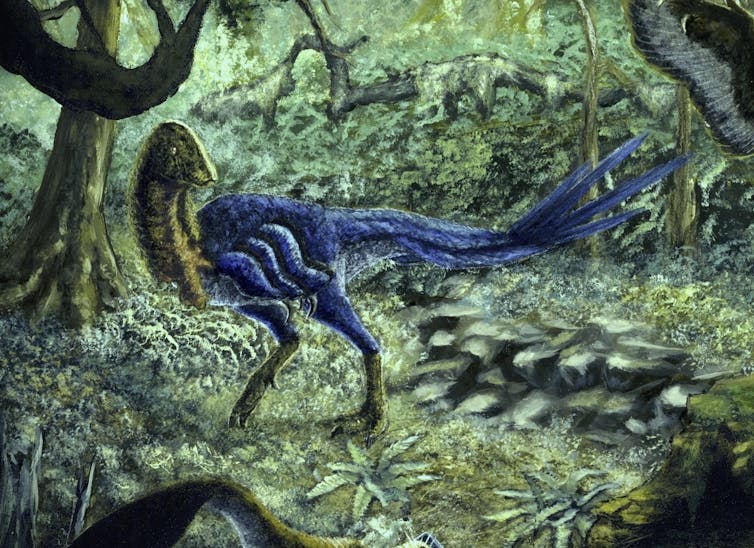
Were dinosaurs already on their way out when an asteroid hit Earth 66 million years ago, ending the Cretaceous, the geologic period that started about 145 million years ago? It’s a question that has vexed paleontologists like us for more than 40 years.
In the late 1970s, debate began about whether dinosaurs were at their peak or in decline before their big extinction. Scientists at that time noted that while dinosaur diversity seemed to have increased in the geologic stage that spanned 83.6 million to 71.2 million years ago, the number of species on the scene seemed to decrease during the last few million years of the Cretaceous. Some researchers have interpreted this pattern to mean that the asteroid that struck the Gulf of Mexico was simply the final blow for an already vulnerable group of animals.
However, others have argued that what looks like a decrease in the diversity of dinosaurs may be an artifact of how hard it is to accurately count them. Fossil formations might preserve different dinosaurs more or less often based on factors like their favored environment and how easily their bodies fossilized there. The accessibility of various outcrops could influence what kinds of fossils researchers have so far found. These biases are a problem because fossils are what paleontologists must rely on to conclusively answer how healthy dinosaur populations were when the asteroid hit.
At that crucial moment, what was really happening to dinosaur diversity? Discovery, identification and description of new dinosaurs provide vital clues. This is where our work comes in. Close examination of what we’d thought was a juvenile specimen of an already known species of dinosaur from this time period revealed that it was actually part of an adult from a completely new species.
Our work focusing on the life stage of our specimen demonstrates that dinosaur diversity may not have been declining before the asteroid hit, but rather that there are more species from this time period yet to be discovered – potentially even through reclassification of fossils already in museum collections.
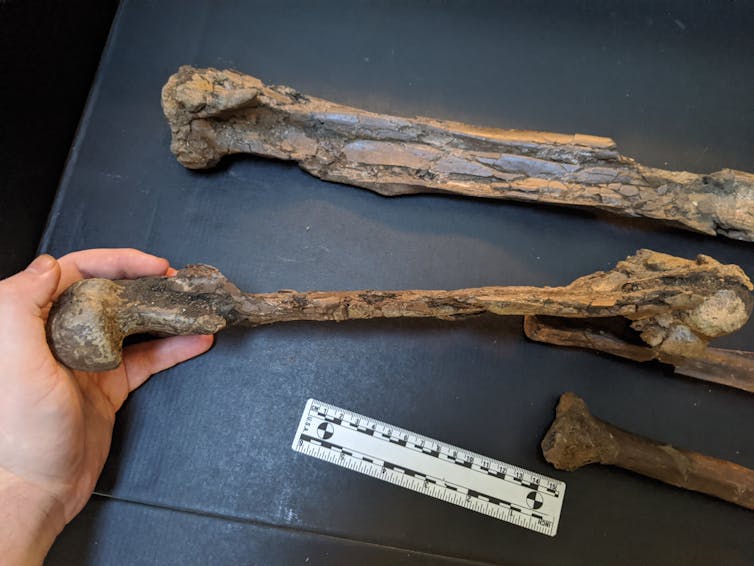
Clues Inside The Bones Of A Birdlike Dinosaur
Our new study focused on four hindlimb bones – a femur, a tibia and two metatarsals. They were unearthed in South Dakota, in rocks of the Hell Creek Formation, and date to the final 2 million years of the Cretaceous.
When we first examined the bones, we identified them as belonging to a family of dinosaurs known as the caenagnathids – a group of birdlike dinosaurs that had toothless beaks, long legs and short tails. Direct fossil and inferred evidence indicates these dinosaurs were covered in complex feathers, much like modern birds.
The only known species of caenagnathid from this time and region was Anzu, sometimes called the “chicken from Hell.” Covered in feathers and sporting wings and a toothless beak, Anzu was between roughly 450 and 750 pounds (200 and 340 kilograms). Despite its fearsome nickname, though, its diet is a matter of debate. It was likely an omnivore, eating both plant material and small animals.
Because our specimen was significantly smaller than Anzu, we simply assumed it was a juvenile. We chalked up the anatomical differences we noticed to its juvenile status and smaller size – and figured the animal would have changed had it continued to grow. Anzu specimens are rare, and no definite juveniles have been published in the scientific literature, so we were excited to potentially learn more about how it grew and changed throughout its lifetime by looking inside its bones.
Just like with a tree’s rings, bone records rings called lines of arrested growth. Each annual line represents part of a year when the animal’s growth slowed. They would tell us how old this animal was, and how fast or slow it was growing.
We cut through the middle of three of the bones so that we could microscopically examine the internal anatomy of the cross-sections. What we saw completely uprooted our initial assumptions.
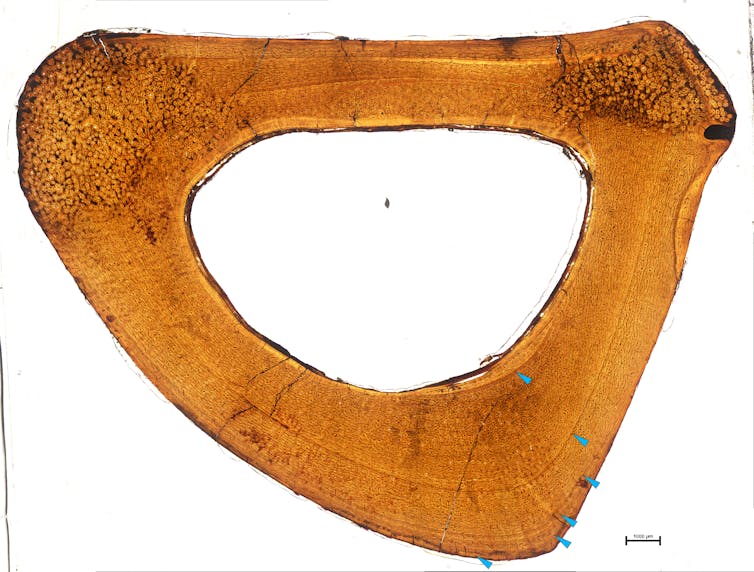
In a juvenile, we would expect lines of arrested growth in the bone to be widely spaced, indicating rapid growth, with even spacing between the lines from the inside to the outside surface of the bone. Here, we saw that the later lines were spaced progressively closer together, indicating that this animal’s growth had slowed and it was nearly at its adult size.
This was no juvenile. Instead, it was an adult of an entirely new species, which we dubbed Eoneophron infernalis. The name means “Pharaoh’s chicken from Hell,” referencing the nickname of its larger cousin Anzu. Traits unique to this species include ankle bones fused to the tibia, and a well-developed ridge on one of its foot bones. These weren’t features a young Anzu would outgrow, but rather unique aspects of the smaller Eoneophron.
Expanding The Caenagnathid Family Tree
With this new evidence, we started making thorough comparisons with other members of the family to determine where Eoneophron infernalis fit within the group.
It also inspired us to reexamine other bones previously believed to be Anzu, as we now knew that more caenagnathid dinosaurs lived in western North America during that time. One specimen, a partial foot bone smaller than our new specimen, appeared distinct from both Anzu and Eoneophron. Where once there was one “chicken from Hell,” now there were two, and evidence for a third: one large (Anzu), weighing as much as a grizzly bear, one medium (Eoneophron), humanlike in weight, and one small and yet unnamed, close in size to a German shepherd.

Comparing Hell Creek with older fossil formations such as the famous Dinosaur Park Formation of Alberta that preserves dinosaurs that lived between 76.5 million and 74.4 million years ago, we find not only the same number of caenagnathid species, but also the same size classes. There, we have Caenagnathus, comparable to Anzu, Chirostenotes, comparable to Eoneophron, and Citipes, comparable to the third species we found evidence for. These parallels in both species count and relative sizes offer compelling evidence that caenagnathids remained stable throughout the last part of the Cretaceous.
Our new discovery suggests that this dinosaur group was not declining in diversity at the very end of the Cretaceous. These fossils show that there are still new species to be discovered, and support the idea that at least part of the pattern of decreasing diversity is the result of sampling and preservation biases.
Did large dinosaurs go extinct the way a Hemingway character quipped he went broke: “gradually, then suddenly”? While there are plenty of questions still outstanding in this extinction debate, Eoneophron adds evidence that caenagnathids were doing quite well for themselves before the asteroid ruined everything.![]()
Kyle Atkins-Weltman, Ph.D. Student in Paleoecology, Oklahoma State University and Eric Snively, Associate Professor of Anatomy and Cell Biology, Oklahoma State University
This article is republished from The Conversation under a Creative Commons license. Read the original article.
Pictures have been teaching doctors medicine for centuries − a medical illustrator explains how

“Medical illustrators draw what can’t be seen, watch what’s never been done, and tell thousands about it without saying a word.”
For decades, this slogan appeared on the website and printed materials of the Association of Medical Illustrators. Although the association no longer uses this tag line, it’s still an accurate description of the profession.
As a practicing medical illustrator for over 30 years, I draw what can’t be seen and watch what’s never been done on a daily basis. And I teach my students to do the same.
But what exactly does all of that mean, and how does it improve medicine?
Tell Thousands About It Without Saying A Word
You may have heard the adage, “A picture is worth a thousand words.” In that same vein, medical illustrators use pictures to teach complex scientific concepts. As the famed medical illustrator Frank H. Netter once said, “(Pictures) eliminate the need for the lecturer or the author to translate what he has in his mind into words and for the listener or the student to translate those words back into a mental image.”
The use of illustrations to communicate medical information has a long history, dating back at least to ancient Egypt and flourishing in the Renaissance. The work of 16th century anatomists Giacomo Berengario da Carpi and Andreas Vesalius set a precedent for the use of detailed illustrations to teach anatomy, a practice that continues to this day.

The proliferation of illustrated anatomy atlases in the Renaissance coincided with the widespread acceptance of cadaver dissection. The earliest known human dissections were performed in the third century BCE. The practice was prohibited throughout the Middle Ages but became common again in the 13th and 14th centuries.
By the 1500s, dissections, usually of executed criminals, had become public spectacles. The demand for bodies eventually outstripped the supply of executed convicts, leading to the unscrupulous practices of grave robbing and even murder.
In addition to depicting the location and features of an object such as an organ, illustrations proved essential in describing events happening over time, such as the progression of a disease or the steps in a surgical procedure. Generations of surgeons learned new procedures from meticulously illustrated surgical atlases. An early example of physiology illustration, William Harvey’s classic 17th century work on the circulation of blood, “Exercitatio Anatomica de Motu Cordis et Sanguinis in Animalibus,” depicts the direction of blood flow through the veins of the forearm.
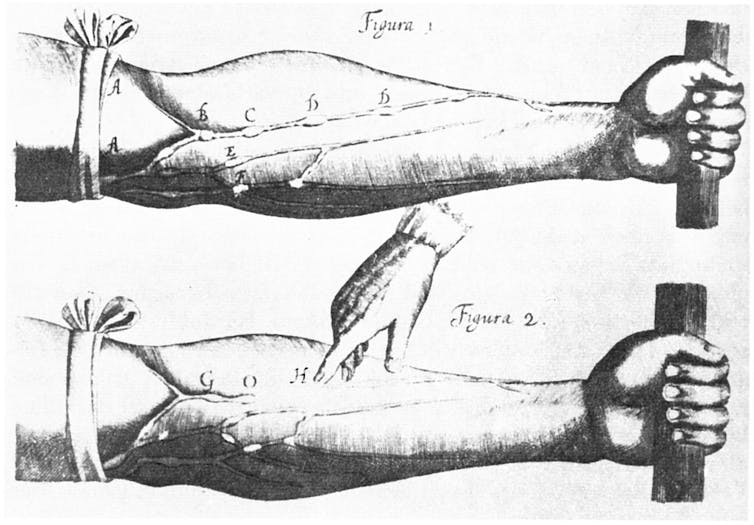
Nowadays, surgeons can practice a procedure hundreds of times in virtual reality before trying it on a real patient. Modern physiology and pathology texts include countless illustrations of the body, not just at the anatomical level but also the cellular and molecular. So valuable are these depictions of complex pathways and interactions that many science journals now require papers to include a graphical abstract, a single illustration that summarizes the content of each paper.
Draw What Can’t Be Seen
Medical illustrators employ special tools and training to visualize things that are normally hidden from the naked eye.
All professionally trained medical illustrators study human gross anatomy, including dissecting a human cadaver, in order to visualize the internal structures of the body. When a cadaver isn’t readily available to serve as reference for an illustration, illustrators use medical imaging, such as CT and MRI scans, and reconstruct the body in three dimensions.
At the cellular level, medical illustrators must understand how to use microscopy techniques in order to find references for accurate depictions of cellular structures.
Objects at the smallest scale – atoms and many molecules – are smaller than the wavelength of visible light. This means they are below the theoretical limit of what can be seen, even with the most powerful light microscope. So researchers experimentally determine the structures of molecules using techniques like X-ray crystallography and nuclear magnetic resonance spectroscopy instead. These techniques use X-rays or radio waves, respectively, to determine how atoms are arranged.

Medical illustrators learn to locate and retrieve data on the structure of molecules from sites like the RCSB Protein Databank. They also use a host of visualization applications and software plug-ins to render these structures in 3D.
Medical illustrators Alissa Eckert and Dan Higgins at the U.S. Centers for Disease Control and Prevention used these techniques to create the famous red-spiked coronavirus image that went viral during the pandemic.
Watch What’s Never Been Done
Obviously, you can’t really watch something that has never been done. But medical illustrators can help conceptualize new processes and techniques before they become a reality.
For example, they might illustrate how an experimental drug may theoretically work before it enters testing. Similarly, illustrations can be critically important in pre-surgical planning, especially in complex cases.
My favorite example of the role of medical illustration in surgery is the separation of conjoined twins Abbigail and Isabelle Carlsen at the Mayo Clinic in 2006. Working from nearly 6,000 radiographic images, the clinic’s medical illustrators produced five detailed illustrations of the twins’ anatomy. They even generated 3D-printed models of important structures, notably their shared liver.
The illustrations were critical in training a team of 70 surgeons, nurses and technicians involved in the case. They also served as a road map for the ultimately successful surgery, hung up on the walls of the operating theater during the procedure.
Road To Becoming A Medical Illustrator
In order to draw what can’t be seen and watch what’s never been done, medical illustrators require specialized training. Most medical illustrators in North America are trained at master’s programs accredited by the Association of Medical Illustrators in conjunction with the Commission on Accreditation of Allied Health Education Programs.
Since the profession requires a strong understanding of the biomedical sciences, students accepted into these programs must have a strong science background along with a portfolio demonstrating outstanding drawing skills. Students often have a double major in biology and art or a major in one area and minor in the other.
Once in the program, their science training continues with human gross anatomy and some combination of courses in neuroanatomy, embryology, histology, cell biology, pathology and immunology. Specialized courses in surgical observation and cellular and molecular visualization also include significant science content.
Students receive extensive training in computer graphics, including 2D digital illustration and animation, 3D computer modeling and animation, interactive media, virtual and augmented reality and educational game and mobile app design. Courses also emphasize the principles of design, including the use of color, layout and motion to create effective visuals.
Medical illustrators learn to consider the educational level of their audience, since their work may be used to educate patients – even kids – in addition to medical professionals. Illustrations made for a child recently diagnosed with leukemia would be very different from those aimed at the oncologist treating the disease.
After entering the workforce, many medical illustrators pursue optional board certification to become a certified medical illustrator, which recognizes professional competency and encourages continued learning. Continued certification requires 35 hours of continuing education every five years in the biomedical sciences, artistic techniques and business practices.
All of this education and training is essential to ensure that medical illustrators communicate complex scientific information with accuracy and clarity. I like to think of medical illustrators as teachers – they instruct with pictures.![]()
James A. Perkins, Distinguished Professor of Medical Illustration, Rochester Institute of Technology
This article is republished from The Conversation under a Creative Commons license. Read the original article.
In an ancient church in Germany, a 639-year organ performance of a John Cage composition is about to have its next note change

Composers count themselves lucky when musicians continue to perform their music after their death.
But the American avant-garde composer John Cage, who died in 1992, never would have guessed that a single performance of his music would begin in 2001 and still be playing. In fact, it isn’t due to conclude for another 616 years.
In a marathon performance like this, any little change becomes big news. On Feb. 5, 2011, for instance, one of the first three notes stopped sounding – after being sustained for eight years.
On Feb. 5, 2023, another note is going to begin playing – the first since Feb. 5, 2022. This one will be relatively short; it will hang around for only the next two years.
The piece is called “Organ2 /ASLSP.”
“ASLSP” refers to the phrase “as slowly and softly as possible,” a reference to a quotation that appears near the end of James Joyce’s novel “Finnegans Wake” – “Soft morning city! Lsp!”
Originally written for piano in 1985, Cage made an arrangement for organ. Like the piano score, Cage never specified how long the piece should be played. Most of its performances have lasted between 20 and 70 minutes.

At a talk prior to the work’s German premiere in 1987, the musicologist Heinz-Klaus Metzger wondered aloud – half jokingly – how long a performance should last, since an organ can sustain sound indefinitely. A group of organists, artists, scholars and theologians took Metzger’s question and considered how a very long performance might become a reality.
The performance is taking place at the St. Burchardi Church in Halberstadt, a small town in central Germany some 133 miles (214 kilometers) southwest of Berlin. The church dates from 1208, and in 1361 a large organ was installed, one of the first to have a keyboard of the type that is now universally used for pianos and other such instruments.
That organ is long gone, but this history inspired the organizers to choose the site for the event. Builders constructed a much smaller instrument and installed it in the church, one just large enough to accommodate the sparse number of musical notes in the piece.
Is this strange piece of music a joke? A grand artistic utterance? An everyday event? Sometimes I’m not sure myself, and I’ve been studying Cage and his music for the past 25 years.
A Provocative Composer
During his lifetime, John Cage was no stranger to controversy. He was one of the first classical composers to write music for percussion instruments only, because he felt that any sound could be used in music.
But his most famous – maybe notorious – composition is “4ʹ33,ʺ” a piece with no sounds at all.

There are countless explorations of what the piece means; one of the best is by musicologist James Pritchett, who traced Cage’s interest in silence to his studies of Eastern spiritual traditions and a growing dislike for the materialism of the West.
For me, it’s a great illustration of Cage’s interest in Zen Buddhism.
Zen has to do with becoming aware of everything in life. The ugliest thing is just as important as the most beautiful. Another important concept is that it’s far better to enjoy things while they last, precisely because they won’t last.
When you listen to “4ʹ33ʺ,” you’re hearing whatever sounds happen to be around you during a performance. You’re always going to hear something different, and you always get the chance to hear something that you might have ignored otherwise.
Eventually Cage began to feel that composers should just let sounds be sounds. They shouldn’t try to string them together to make people feel a certain way or think about a particular topic.
He did this through the use of what he called “chance operations.” Cage thought of musical composition as a process involving a series of numbered possibilities for every aspect of the music. For instance, in a piece for two pianos, Cage numbered all of the possible notes. He then used specially designed software to select which ones would appear in the piece. Another chance operation would answer the question of whether that note would be part of a chord and, if so, what the additional notes were. It’s a very time-consuming procedure.
Cage accepted whatever sounds the chance operations identified, since the sounds were pleasurable on their own. Late in life, he elaborated on this idea:
“I love sounds – just as they are. And I have no need for them to be anything more than what they are. I don’t want them to be psychological. I don’t want a sound to pretend that it’s a bucket, or that it’s president, or that it’s in love with another sound. I just want it to be a sound.”
That sometimes leads people to think they should have no feelings at all listening to Cage’s music. But Cage loved sounds, and love is certainly a feeling.
Would Cage Have Approved?
Naturally, a composer who took such a radical approach to music runs the risk of performances that reduce his ideas to absurdity.
I remember preparing a performance of his “Song Books” in Amsterdam where one of the musicians decided to interpret Cage’s instruction for an “auxiliary sound” as an invitation to produce an imitation of flatulence. I gently advised the musician that Cage had always tried to make musical compositions that sounded unlike anything he had heard before; as he wrote in his second book, “A Year from Monday,” he wanted the freedoms that he composed in his music to be taken seriously by performers, to make them nobler people.
I thought about this when I first began learning about the Halberstadt organ project.
No performers are sitting at the organ, day in, day out, in the cathedral where the piece is being performed. Instead, an electronic bellows pumps air into the organ; the individual-sounding notes are made from inserting or removing pipes of various lengths into the organ as they’re needed.
A 639-year performance of a piece of music, it seemed to me, was a poor use of human and environmental resources – and more of a gimmick than it was a real piece of music. I said as much in my book on Cage published in 2012, noting with dismay that Germany’s public broadcasting system, Deutsche Welle, erroneously reported that Cage himself planned the extraordinary duration of the work.
It was only last year, during a podcast conversation with Laura Kuhn, the executive director of the John Cage Trust, that I was able to see the “Organ2 /ASLSP” performance in a new light.
Thinking aloud about the various ways that Kuhn has brought others in touch with Cage’s ideas, I realized that Cage was, above all, a composer who sought out new ways of making music. The organ performance certainly demonstrates that artistic impulse.
In a way, it’s also another great illustration of Zen: The sounds last so long that they simply become a presence, like wind in the air or the clouds in the sky.![]()
Rob Haskins, Professor of Music, University of New Hampshire
This article is republished from The Conversation under a Creative Commons license. Read the original article.
AvPals Group Sessions At Newport: Term 1 2024

Palm Beach Golf Club: Swing Into Golf In 2024

As Morrison quits parliament, his ‘legacy’ has little to recommend it
Frank Bongiorno, Australian National UniversityThe recent months have been kind to Peter Dutton and the Coalition. Scott Morrison’s announcement that he will leave parliament at the end of February is the latest instalment of the federal opposition’s good run.
When the Coalition lost the 2022 election, Morrison was, according to the Australian Election Study, the least popular major party leader at any election since the survey began in 1987. Since that time, it has been revealed that he secretly took five ministries for reasons he has never been able to explain with any plausibility. He was also a deeply unimpressive witness before the Robodebt royal commission, a scandal he played a large role in making.
The reasons for his unpopularity even before those post-election revelations were clear enough. He was seen to have failed in the Black Summer bushfires of 2019-20. The image of Morrison holidaying in Hawaii while the country burned became the image of Morrison the politician, rivalled only by his carrying a lump of coal into parliament and the spectacle of his ukulele playing on national television.
On gender, he was embarrassing. It would be hard to invent a politician more poorly equipped to deal with the problem of sexual assault, an issue that took political centre stage in the wake of historic claims against his attorney-general, Christian Porter, and former Liberal staffer Brittany Higgins’ allegations against a colleague. His repeated fumbling suggested a man out of tune with the times.
Part of Morrison’s problem was that like so many political leaders, he seems to have come to believe in his own artifice. The “Scomo” image – the rugby league-loving daggy dad from the Shire – was pure performance. Morrison was really a rugby union man from affluent Bronte who had enjoyed a string of highly-paid jobs since his twenties.
His error was to believe Australians had voted him back into office because they bought this image. The result was that we had to endure more – curries, cubby-houses, flamboyant displays of barracking, and tedious cosplay in a bewildering variety of workplaces.
One suspects that most of us spotted the fakery a mile off. People voted for him – not overwhelmingly, but enough to get him over the line once – because they didn’t like Bill Shorten, and because they believed Labor was coming after their utes, weekends, jobs, negative gearing and franking credits.
When faced with something more benign three years later, they abandoned him in droves, turning to Labor, Independents, the Greens – anyone but Morrison and his similarly unpopular deputy, Barnaby Joyce.
Morrison’s defenders are already pointing to a “legacy”. We will hear much about AUKUS. But the Morrison legacy there was a poisonous relationship with France – whose president publicly accused Morrison of lying – and a big splashy announcement lacking basic detail made alongside a United States president who could not recall his name. AUKUS was designed to wedge the Labor Party. The Biden administration wanted him to take Anthony Albanese into his confidence. Morrison predictably declined to do that. There was political hay to be made.
With Morrison, politics invariably trumped policy. He does, however, deserve credit for the government’s handling of the pandemic in 2020. Australia was probably fortunate it had a Coalition government, because any Labor administration that had come up with JobKeeper and JobSeeker would likely have been subjected to relentless hostility by the media and Coalition opposition.
Of course, Morrison never dropped politics: favoured groups of Australians – men in high-vis and corporates – were treated well, while anyone regarded as in the camp of the enemy was less fortunate. His instincts were often bad, but tempered by an understanding of how bad they had proved during the bushfires, by the expert advice of officials, by the obstruction of premiers and chief ministers and, above all, by a desire not to be seen as responsible for a very high pile of dead bodies.
It was obvious the pathway through vaccination and out of danger was meant to lead to an early election and Morrison’s return – an outcome widely regarded by Australia’s political pundits as inevitable until the summer of 2020-21. His government’s muddling of the vaccination program, a new round of lockdowns in 2021, and the failure even to arrange enough test kits put paid to any prospect of an early resort to the polls and, in retrospect, can be seen to have sealed his fate.
Morrison’s Pentecostal religion gained a good deal of attention at the time he contested and won the 2019 election, but had less prominence thereafter. A recording of him addressing a conference of co-religionists that did the rounds served as a reminder that it was both odd and American. Morrison was itching to introduce US-style conservative religiosity into the everyday discourse of Australian politics but had sufficiently well-honed political instincts to understand he should not go there.
The poverty of his political language owed something to this prohibition. Take out the religious material, and Morrison had only slogans that tired those he had acclaimed as “quiet Australians”. After a while, the import of that phrase also became clear enough. Morrison’s ideal citizenry was one that left politics to professionals such as Morrison.
In the end, future historians will probably scratch their heads over why Morrison took the plunge from being a not-very-successful tourism executive to a not-very-successful prime minister. He was also for a time state director of the New South Wales Liberal Party, and his political career took its tone and colour from these earlier roles. He was always campaigning, always looking for the rhetorical trick, political stunt and clever phrase (Remember “negative globalism” and “can-do capitalism”?) that would gain him advantage. He launched his prime ministership in 2018 with a crackdown against criminals who were said to have placed pins in strawberries.
Sean Kelly, easily the most perceptive Morrison watcher, called his book on Morrison The Game and was astute in doing so: that was precisely how Morrison treated politics. It was just a game to be played and won.
He has been unable to hide his pride in besting Shorten in 2019, but seems otherwise uninterested in what he leaves behind him, including the wreckage of the Liberal Party, the public service and parliamentary government – which received its worst battering since November 1975 at the hands of Morrison’s secret dealing with the governor-general.
And for that, we have all paid a price. Politics might look like a game if on your way up you’ve coasted from one bubble to another, one executive job to another, one ministry to another, one political ally to another, one policy to another, one suburb to another, one football code to another. But it’s no game if you are being pursued by Centrelink for a debt you don’t actually owe. It’s no game if your home has just burned down in a bushfire. And it’s no game if you can no longer sell your barley, wine or lobster to China because the government thought it a good idea to go front-running on a grand international enquiry into COVID-19.
On the day of the 2022 election, Morrison tried another stunt – a public announcement that the government had intercepted a Sri Lankan asylum-seeker boat. The news was then texted to mobile phones for the benefit of undecided voters. It was the political equivalent of a minor Bond villain’s last, desperate throw of the dice.
It did the Coalition no good. But it was a reminder of what Morrison had never ceased to be: the marketing man who believed that, in the end, he had the punters’ measure.![]()
Frank Bongiorno, Professor of History, ANU College of Arts and Social Sciences, Australian National University
This article is republished from The Conversation under a Creative Commons license. Read the original article.
Why Australian workers’ true cost of living has climbed far faster than we’ve been told

Why is Prime Minister Anthony Albanese suddenly so keen to deliver extra cost-of-living relief – keen enough to summon Labor members of parliament to Canberra for a briefing on Wednesday, followed by a National Press Club address on Thursday?
One immediate reason is he is keen to make sure Labor wins the upcoming byelection in the outer-Melbourne electorate of Dunkley on March 2.
But the cost of living wouldn’t matter much for Dunkley – and it wouldn’t matter much for the rest of us – unless it was really biting.
And despite what the treasurer himself has been trying to tell us, it is biting.
Treasurer Jim Chalmers has been pointing out that in the June quarter and the September quarter (the three months to June and to September) real wages grew for the first time in years. By that he means that the wages index compiled by the Bureau of Statistics began growing faster than the consumer price index.
It’s better than growing more slowly, but it tells us next to nothing about what’s happening to buying power. Here’s why.
Why CPI Understates Today’s Living Costs
Way back in the late 1990s, more than a quarter of a century ago, the consumer price index (CPI) used to actually reflect the cost of living. It included all of the big costs incurred by households, including – importantly – mortgage interest payments. At the time, mortgages accounted for an average of $5 of every $100 each wage earner spent.
Then in September 1998, in response to representations from the Reserve Bank and the Treasury, the bureau changed the way it calculated the index. It excluded mortgage and other interest payments, in a decision it acknowledged would make the index worse at measuring living costs.
It still carries the warning on its website, saying the consumer price index is
not the conceptually ideal measure for assessing the changes in the purchasing power of the disposable incomes of households.
The index actually does a pretty good job of measuring changes in living costs at times when mortgage rates aren’t much changing. But at times when they are tumbling, it’ll overestimate living costs. And when mortgage rates are soaring – as they have been lately – it will way understate what’s happening to living costs.
We know by how much. For years, the bureau has also published a separate set of measures it pointedly calls “living cost indexes”. These do include mortgage and other interest charges, and for households headed by employees (for whom the buying power of wages matters) they are substantial.
Living Costs Are Up 9%, Rather Than 5.4%
While the consumer price index (the one quoted by the treasurer) increased 5.4% in the year to September, the living cost index for households headed by wage earners climbed 9%.
For these working households, the price of food climbed 4.8% in the year to September, the price of electricity 14.5% and the price of mortgage interest charges 68%.
It’s the increases in mortgage rates that have made the increases in the other prices hurt so much.
The overall increase in prices faced by wage-earners – 9% – is way above the typical wage increase of 4%.
Bill Mitchell of the University of Newcastle points out that on this measure, the correct one, the buying power of wages has been falling for two and a half years. He says it puts the treasurer’s comments in a wholly different light.
Why We Should Distrust The CPI
Working Australians are right to distrust the consumer price index, which is something the Australian Council of Social Service warned the bureau about when it made the change.
Each month, the Melbourne Institute asks Australians whether their family finances have deteriorated over the previous year. Usually, about one-third of those surveyed say they have.
But for more than a year now, around 50% of those surveyed have been saying their finances have got worse. That’s a peak not seen since the global financial crisis, and one that has lasted longer.
Asked about family finances over the next 12 months, more than 30% say they’ll worsen further. It’s usually 20%.
Looked at from today’s perspective, the arguments put forward in 1997 for weakening the consumer price index as a measure of living costs are unimpressive.
Back then, the Treasury noted that many welfare recipients didn’t have mortgages and that a consumer price index that excluded them would better reflect their living costs.
The Reserve Bank argued interest rates were “conceptually different from other prices”. In any event, it wanted them excluded because it found it hard to use higher interest rates to bring down inflation if those higher rates pushed the measure of inflation up.
The change attracted little attention at the time, because mortgage rates weren’t moving much. By the time they did, the change had been bedded down.
But Here’s Some Good News
For most of the time since the change, mortgage rates have either increased gradually or been cut, meaning the difference between what the consumer price index has been telling us and what’s been happening to us hasn’t been too stark. It’s been stark lately because interest rates have been rising quickly.
The good news – and there is good news – is that financial markets expect rates to begin falling this year, with the next move down.
Inflation as measured by the consumer price index (inflation excluding mortgage rates) is already falling.
We get the next official update on the consumer price index next week (and the update for the lesser-known living cost indexes a week after that).
It makes now a particularly good time to announce measures to address the cost-of-living crisis. We need them because we really are in something of a crisis. Things are a lot worse than the official index suggests.
And there’s a chance that soon they’ll begin to get better, allowing the prime minister to claim a win.![]()
Peter Martin, Visiting Fellow, Crawford School of Public Policy, Australian National University
This article is republished from The Conversation under a Creative Commons license. Read the original article.
As new ABC chair, one of Kim Williams’ challenges will be to stiffen the organisation’s spine
Denis Muller, The University of MelbourneKim Williams takes over as chair of the ABC at a moment when its preparedness to protect its journalists and the organisation’s editorial independence from external attack is under serious question.
It was the issue that came to define the tenure of the outgoing chair, Ita Buttrose. She proved at crucial moments to be a strong defender of the ABC’s independence against sustained attacks on it by the government of Scott Morrison, who appointed her to the job as a “captain’s pick”.
Unlike Buttrose, Williams comes to the job at least as a result of due process. The government chose him from a shortlist of three prepared by an independent panel, the system set up by the Gillard government but routinely ignored by its Liberal-National successors.
Williams’ history indicates he brings to the job a formidable intellect, a broad understanding of the media industry and a temperament that might be cautiously described as mercurial.
He also brings some baggage. In December 2011, he was appointed CEO of Rupert Murdoch’s News Limited, which was later rebadged News Corporation Australia.
After a turbulent 20 months, during which he tried to restructure the newspapers to make them more suited to the digital age and bring about complementary cultural change, he fell victim to the brutal internal politics of News Corp, where he was resented by the editors as an outsider, and resigned.
Although he was an outsider in the newspaper business, he was no stranger to the media industry more broadly. In his ten years as CEO of Foxtel between 2001 and 2011, he was credited with bringing the company back from its deathbed.
While he spent 18 years working for Murdoch – indulging the routine attacks News Corporation makes on the ABC – writing him off as a “Murdoch man” would not do justice to the breadth he brings to the position.
He is a classically trained musician and composer, a former general manager of Musica Viva, head of the Sydney Opera House Trust and CEO of the Australian Film Commission.
Here he ran into veteran broadcaster Phillip Adams, who has described him as “a maker and a destroyer”. “Even as a success, there is something tragic about him.”
At the same time, Adams recognised Williams’ intellectual ability and they formed a formidable alliance at the commission. Adams is one of the ABC’s most treasured broadcasters, having presented Late Night Live on Radio National for 33 years.
Williams also has executive experience at the ABC. In 1991 he was appointed to lead the ABC’s pay-television initiative, Australian Information Media (AIM). But suddenly, in the midst of negotiations with Foxtel over its becoming a carrier for AIM’s content, Williams announced he was resigning from AIM to become CEO of Murdoch’s Fox Studios.
Adams likened this to a rat leaving a sinking ship. An ABC board member at the time, Rod Cameron, described it as a disgrace.
Although described as charming, Williams is also reputed to have a ferocious temper. A former News Corp executive is reported as saying:
He internalises to the point where you think his whole head is going to explode. The pressure he brings himself under, let alone the target, is truly terrifying.
Williams has also been widely criticised for lacking not just social skills but political skills. He made many enemies at News Corp but more importantly, in the context of his ABC appointment, his ability to get policy changes through the political process has been questioned.
The media analyst Margaret Simons has noted that while at Foxtel he failed to persuade governments of either side to liberalise the anti-siphoning laws, under which certain major sporting events may not be shown on pay TV until they have been shown on free to air. Getting more of these high-profile events for Foxtel was a key part of the business strategy to build the network.
She reports he also failed to advance media deregulation at the time the Gillard government commissioned the Convergence Review, which was about reviewing media policy in the light of digital technology.
This background suggests Williams’ tenure as chair of the ABC could be a mixture of dazzling successes and disastrous failures.
It may also be turbulent. The internal politics of the ABC are every bit as febrile as those of News Corp. Political adroitness will be essential not only in navigating those but in effectively representing the corporation in Canberra and fending off the depredations of politicians on both sides.
Williams has made an encouraging start by saying in an ABC interview that he will treat staff concerns seriously.
But the ultimate test is whether he will be able to stiffen the corporation’s spine when it comes to defending its journalists and their journalism from external attack.![]()
Denis Muller, Senior Research Fellow, Centre for Advancing Journalism, The University of Melbourne
This article is republished from The Conversation under a Creative Commons license. Read the original article.
Laughter Is The Best Medicine: Free Seniors Festival Comedy Shows In Sydney + Batemans Bay

Recognising The Nominees Of The 2024 Senior Australian Of The Year Award
- vital contribution older people in Australia make to our nation
- passion and commitment of award winners to help others, live well, stay healthy and maintain their connection to community.
- Ebenezer Banful OAM (ACT) – a dedicated volunteer and multiculturalism advocate
- Glenys Oogjes (VIC) – who has been instrumental in shaping Australian animal welfare
- John Ward (NSW) – who has devoted his life to providing medical care for disadvantaged and ageing Australians
- Reverent Robyn and Reverend Dr Lindsay Burch (QLD) – from the Gold Coast who are founders of the food charity Havafeed Relief
- Yalmay Yunupiŋu (NT) – an esteemed teacher and linguist
- Sister Meredith Evans (SA) – a Sister of Mercy known for her contributions to education and community service
- Charlie Bass (WA) – an innovator and founder of the Centre of Entrepreneurial Research and Innovation
- Reverend James Colville AM (TAS) – the founder of Tasmanian housing non-profit Colony 47.
Superannuation In Retirement Consultation: Federal Government
- Supporting members to navigate the retirement income system,
- Supporting funds to deliver better retirement income products and services, and
- Making lifetime income products more accessible.
It’s 4 years since the first COVID case in Australia. Here’s how our pandemic experiences have changed over time
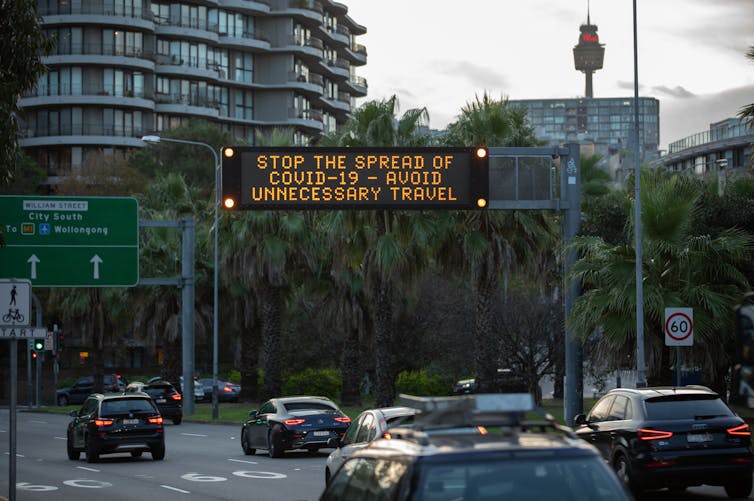
It might be hard to believe, but four years have now passed since the first COVID case was confirmed in Australia on January 25 2020. Five days later, the World Health Organization (WHO) declared a “public health emergency of international concern”, as the novel coronavirus (later named SARS-CoV-2) began to spread worldwide.
On March 11 the WHO would declare COVID a pandemic, while around the same time Australian federal and state governments hastily introduced measures to “stop the spread” of the virus. These included shutting Australia’s international borders, closing non-essential businesses, schools and universities, and limiting people’s movements outside their homes.
I began my project, Australians’ Experiences of COVID-19, in May 2020. This research has continued each year to date, allowing me to track how Australians’ attitudes around COVID have changed over the course of the pandemic.
Evolving Pandemic Experiences
We recruited participants from across Australia, including people living in regional cities and towns. Participants range in age from early adulthood to people in their 80s.
The first three stages of the project each involved 40 interviews with separate groups of participants (so 120 people in total). These interviews were done in May to July 2020 (stage 1), September to October 2021 (stage 2), and September 2022 (stage 3). Stage 4 was an online survey with 1,000 respondents, conducted in September 2023.
Limitations of this project include the small sample sizes for the first three stages (as is common with qualitative interview-based research). This means the findings from those phases are not generalisable, but they do provide rich insights into the experiences of the interviewees. The quantitative stage 4 survey, however, is representative of the Australian population.
The findings show that as the conditions of the pandemic and government management have changed across these years, so have Australians’ experiences.
In the early months of the pandemic, some people reported becoming confused, distressed and overwhelmed by the plethora of information sources and the fast-changing news environment. On the other hand, seeking out information provided reassurance and comfort in response to their anxiety and uncertainty about this new disease.
Australians continued to rely heavily on news reports and government announcements in the first two years of the pandemic. Regular briefings from premiers and chief health officers in particular were highly important for how they learned what was happening, as were updates in the media on case numbers, hospitalisations, deaths and progress towards vaccination targets.
Trust Has Eroded
Australians appear to have lost a lot of trust in COVID information sources such as news media reports, health agencies and government leaders. Early strong support of federal, state and territory governments’ pandemic management in 2020 and 2021 has given way to much lower support more recently.
My 2023 survey (this is published as a report, not peer-reviewed) found doctors were considered the most trustworthy sources of COVID information, but even they were trusted by only 60% of respondents.
After doctors, participants trusted other experts in the field (53%), Australian government health agencies (52%), global health agencies (49%), scientists (45%) and community health organisations (35%). Australian government leaders were towards the lower end of the spectrum (31%).
In 2021, Australians responded positively to the vaccine targets and “road maps” set by governments. These clear guidelines, and especially the promise that the initial doses would remove the need for lockdowns and border closures, were strong incentives to get vaccinated in 2021.
Unfortunately, the prospect that vaccines would control COVID was shown to be largely unfounded. While COVID vaccines were and continue to be very effective at protecting against severe disease and death, they’re less effective at stopping people becoming infected.
Once very high numbers of eligible Australians became vaccinated against the delta variant, omicron reached Australia, resulting in Australia’s first big wave of infection. This led to disillusionment about vaccines’ value for many participants.
In the 2023 survey, respondents reported a high uptake of the first three COVID shots. But when asked whether they planned to get another vaccine in the next 12 months, almost two-thirds said they did not, or they were unsure.
Enter Complacency
Complacency now seems to have set in for many Australians. This can be linked to the progressive withdrawal of strong public health measures such as quarantine, mandatory isolation when infected, and testing and tracing regimens.
Meanwhile, the media, government leaders and health agencies have played less of an active public role in conveying COVID information. This has led to uncertainty about the extent to which COVID is still a risk and lack of incentive to take protective actions such as mask wearing.
In 2023, after mandates had ended, only 9% of respondents said they always wore a mask in indoor public places. Only a narrow majority of respondents even supported compulsory masking for workers in health-care facilities.

The 2023 survey confirmed many Australians no longer feel at risk from COVID. Some 17% of respondents said COVID was definitely still posing a risk to Australians, while a further 42% saw COVID as somewhat of a risk. This left 28% who did not view COVID as much of a continuing risk, and 13% who thought it was not a risk at all.
COVID Is Still A Risk
Whether or not people feel at continuing risk from COVID, the pandemic is still significantly affecting Australians. The 2023 survey found more than two-thirds of respondents (68%) reported having had at least one COVID infection to their knowledge, including 13% who had experienced three or more. Of those who’d had COVID, 40% said they experienced ongoing symptoms, or long COVID.
If the pandemic loses visibility in public forums, people have no way of knowing the risk of infection continues, and are therefore unlikely to take steps to protect themselves and others.
Updated case, hospitalisation, death and vaccination numbers should be communicated regularly, as used to be the case. To combat confusion, complacency and misinformation, all health advice should be based on the latest robust science.
Australians are operating in a vacuum of information from trusted sources. They need much better and more frequent public health campaigns and risk communication from their leaders.![]()
Deborah Lupton, SHARP Professor, Vitalities Lab, Centre for Social Research in Health and Social Policy Centre, and the ARC Centre of Excellence for Automated Decision-Making and Society, UNSW Sydney
This article is republished from The Conversation under a Creative Commons license. Read the original article.
Travellers with disability often face discrimination. What should change and how to complain

Australia’s former disability discrimination commissioner, Graeme Innes, has settled his dispute with Adelaide Airport. His complaint to the Human Rights Commission was lodged after being denied access to a body scanner with his assistance dog in May 2022.
Unfortunately, Innes’ experience will resonate widely with Australia’s 4.4 million people with disability.
“People with disability know how challenging air travel can be, and that experience needs to be more inclusive,” said Innes, who was disability discrimination commissioner for nine years and is on the board of the National Disability Insurance Agency.
Experiences like Innes’ have been widely reported and have happened to prominent Australians with disability. The everyday experience of air travel is likely even more shocking. Change is happening, but it is moving slowly.
Airport And Airline Ableism
The Human Rights Commission received more than 100 disability discrimination complaints against airlines in the six years to 2022, including the period in which COVID restrictions saw air travel severely limited.
Issues included:
- assistance animal refusals
- inaccessible facilities
- inaccessible ticketing arrangements for people with vision impairments
- taxis and rideshare providers not turning up, long delays or refusing passengers with disability aids and/or assistance animals.
These issues highlight a system underpinned by unchallenged ableism – discrimination that favours people without disability.
Freedom Of Movement
An important right under the United Nations Convention on the Rights of Persons with Disabilities is freedom of movement. This right seeks to enable all people to be included in society in ways they self-determine.
Ableism in air travel is a fundamental denial of independence and freedom of movement. Discrimination can be even more blatant and offensive. People have been removed from flights or denied boarding because there are limits on the number of wheelchair users who can access an aircraft or because they require additional support to access facilities.
People with disability report the removal of, or damage to, personal mobility equipment, and lack of suitable equipment. In the most severe cases, people have been injured during travel or left stranded in dangerous circumstances.
Inconsistency Can Fuel Ableism
Inconsistent policies and practices significantly impact travellers with disability. This is made worse by the fact that individual airlines and airports are encouraged by government to develop their own Disability Access Facilitation Plans.
So, it is not surprising when news reports highlight instances of assistance dogs being denied travel domestically and internationally, even when they’ve previously been approved by other airlines.
Lack of consistency, negative attitudes, stereotypes and prejudices in the air travel industry have resulted in reportedly aggressive eviction of passengers with disability from exit rows. Others report being told to “catheterise” (to insert a tube through the urethra to the bladder) to avoid needing toilet facilities on an overseas flight. Many people with disability experience situations like Innes’ where they are subjected to alternative, sometimes undignified, processes.
Ongoing experiences of ableism not only deny people with disability their rights to travel but can also damage their dignity. Anticipation of discrimination can increase anxiety and stress for travellers with disability or prevent them travelling altogether.
Slow Reform
These stories and many others point to the need for urgent reform.
Stories shared by more than 60 participants in a special Disability Royal Commission session prompted its chair to write directly to the CEOs of Australian airlines and airports, urging them to work on solutions.
The review and modernisation of the 2002 Disability Standards for Accessible Public Transport along with the upcoming release of the Australian government’s Aviation White Paper could be key mechanisms to address systemic discrimination. But only if key recommendations from disability organisations and advocacy centres are adopted. They include:
specific standards for air travel co-designed with people with disability and representative organisations. Universal design aims to make products and environments usable by all people, without adaptation. It can play an important role in overcoming the systemic barriers in infrastructure and service design to create more seamless and inclusive transport and air travel experiences
reportable and enforceable standards and independent oversight, such as funding the Human Rights Commission to oversee compliance.
Complaints Are Just One Route
The exclusion of people with disability from seamless airline travel is a violation of their fundamental right to freedom of movement.
Decades of travel horror stories in the media, continuing legislative reviews and national enquiries should bring change. Everyone should be able to make journeys with dignity and autonomy. People with disability deserve the same travel privileges as non-disabled Australians.
Governments and the aviation industry will need to collaborate to implement comprehensive accessibility measures, ranging from wheelchair-friendly facilities to trained staff capable of providing appropriate assistance. Embracing inclusivity in air travel not only aligns with the principles of equity but also contributes to a society that celebrates diversity.
For now, there are a number of ways to raise complaints, including with the individual airline or with the Human Rights Commission. Raising complaints with the Human Rights Commission can be completed by anyone who experiences discrimination. Legal support and advice may also be sought from some state-based legal aid organisations.
While complaints are one mechanism for change, more proactive methods for change include the disability royal commission’s recommendation for the design and implementation of a Disability Rights Act, which would see human rights enshrined in legislation and facilitate barrier-free travel.
![]()
Kelsey Chapman, Research Fellow Dignity Project, Griffith University; Elizabeth Kendall, Professor, Director, Griffith Inclusive Futures, Griffith University, Griffith University, and Lisa Stafford, Adjunct Senior Research Fellow, Inclusive Futures Centre, Griffith University
This article is republished from The Conversation under a Creative Commons license. Read the original article.
People in the world’s ‘blue zones’ live longer – their diet could hold the key to why

Ageing is an inevitable part of life, which may explain our strong fascination with the quest for longevity. The allure of eternal youth drives a multi-billion pound industry ranging from anti-ageing products, supplements and diets for those hoping to extend their lifespan.
If you look back to the turn of the 20th century, average life expectancy in the UK was around 46 years. Today, it’s closer to 82 years. We are in fact living longer than ever before, possibly due to medical advancements and improved living and working conditions.
But living longer has also come at a price. We’re now seeing higher rates of chronic and degenerative diseases – with heart disease consistently topping the list. So while we’re fascinated by what may help us live longer, maybe we should be more interested in being healthier for longer. Improving our “healthy life expectancy” remains a global challenge.
Interestingly, certain locations around the world have been discovered where there are a high proportion of centenarians who display remarkable physical and mental health. The AKEA study of Sardinia, Italy, as example, identified a “blue zone” (named because it was marked with blue pen), where there was a higher number of locals living in the central-eastern mountainous areas who had reached their 100th birthday compared with the wider Sardinian community.
This longevity hotspot has since been expanded, and now includes several other areas around the world which also have greater numbers of longer-living, healthy people. Alongside Sardinia, these blue zones are now popularly recognised as: Ikaria, Greece; Okinawa, Japan; Nicoya, Costa Rica; and Loma Linda, California.
Other than their long lifespans, people living in these zones also appear to share certain other commonalities, which centre around being part of a community, having a life purpose, eating nutritious, healthy foods, keeping stress levels low and undertaking purposeful daily exercise or physical tasks.
Their longevity could also relate to their environment, being mostly rural (or less polluted), or because of specific longevity genes.
However, studies indicate genetics may only account for around 20-25% of longevity – meaning a person’s lifespan is a complex interaction between lifestyle and genetic factors, which contribute to a long and healthy life.
Is The Secret In Our Diet?
When it comes to diet, each blue zone has its own approach – so one specific food or nutrient does not explain the remarkable longevity observed. But interestingly, a diet rich in plant foods (such as locally-grown vegetables, fruits and legumes) does appear to be reasonably consistent across these zones.
For instance, the Seventh-day Adventists of Loma Linda are predominately vegetarian. For centenarians in Okinawa, high intakes of flavonoids (a chemical compound typically found in plants) from purple sweet potatoes, soy and vegetables, have been linked with better cardiovascular health – including lower cholesterol levels and lower incidences of stroke and heart disease.
In Nicoya, consumption of locally produced rice and beans has been associated with longer telomere length. Telomeres are the structural part at the end of our chromosomes which protect our genetic material. Our telomeres get shorter each time a cell divides – so get progressively shorter as we age.
Certain lifestyle factors (such as smoking and poor diet) can also shorten telomere length. It’s thought that telomere length acts as a biomarker of ageing – so having longer telomeres could, in part, be linked with longevity.
But a plant-based diet isn’t the only secret. In Sardinia, for example, meat and fish is consumed in moderation in addition to locally grown vegetables and traditional foods such as acorn breads, pane carasau (a sourdough flatbread), honey and soft cheeses.
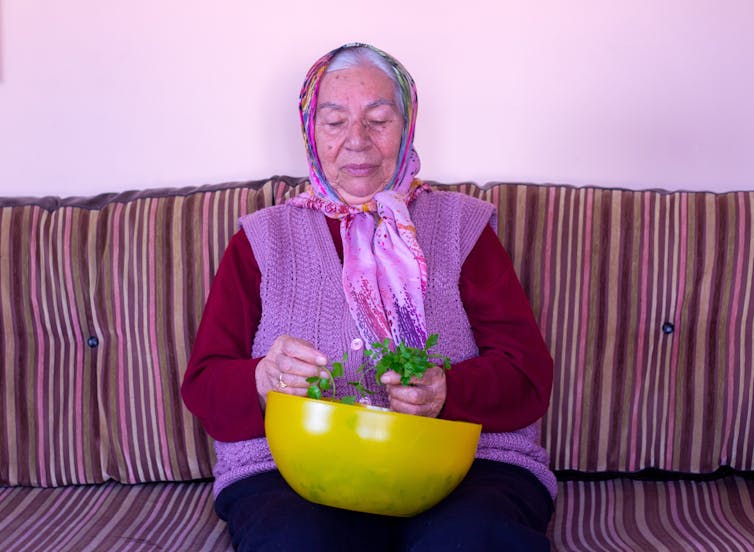
Also observed in several blue zone areas is the inclusion of olive oil, wine (in moderation – around 1-2 glasses a day), as well as tea. All of these contain powerful antioxidants which may help protect our cells from damage as we age.
Perhaps then, it’s a combination of the protective effects of various nutrients in the diets of these centenarians, which explains their exceptional longevity.
Another striking observation from these longevity hot spots is that meals are typically freshly prepared at home. Traditional blue zone diets also don’t appear to contain ultra-processed foods, fast foods or sugary drinks which may accelerate ageing. So maybe it’s just as important to consider what these longer-living populations are not doing, as much as what they are doing.
There also appears to be a pattern of eating until 80% full (in other words partial caloric reduction. This could be important in also supporting how our cells deal with damage as we age, which could mean a longer life.
Many of the factors making up these blue zone diets – primarily plant-based and natural whole foods – are associated with lower risk of chronic diseases such as heart disease and cancer. Not only could such diets contribute to a longer, healthier life, but could support a more diverse gut microbiome, which is also associated with healthy ageing.
Perhaps then we can learn something from these remarkable centenarians. While diet is only one part of the bigger picture when it comes to longevity, it’s an area we can do something about. In fact, it might just be at the heart of improving not only the quality of our health, but the quality of how we age.![]()
Justin Roberts, Professor of Nutritional Physiology, Anglia Ruskin University; Joseph Lillis, PhD Candidate in Nutritional Physiology, Anglia Ruskin University, and Mark Cortnage, Senior Lecturer in Public Health and Nutrition, Anglia Ruskin University
This article is republished from The Conversation under a Creative Commons license. Read the original article.
Good lunchboxes are based on 4 things: here’s how parents can prepare healthy food and keep costs down

Heading back to school is a time of great anticipation for many families, but it is not without challenges. One of the big challenges is preparing healthy, easy, affordable and appealing lunchboxes.
Lunchboxes are vital for supporting children’s energy levels throughout the school day, which in turn helps maintain their concentration.
What does a healthy lunchbox contain? How can you keep it fresh, while also keeping costs down?
Making A Healthy Lunchbox
A healthy well-balanced lunchbox should have four things:
1. food for energy: these foods have carbohydrates for energy to learn and play. This could be sandwiches, wraps, pasta or rice dishes
2. food for growth: these foods have protein to support growing bodies and minds. This could be lean meats, eggs, beans or dairy
3. food for health: these foods have vitamins and minerals to support healthy immune systems and include fruits and vegetables in a variety of colours
4. something to drink: water, milk or milk alternatives are the best choices. Do not give your children sugary drinks, including juice, cordial or energy drinks as they can lead to dental issues. If your child has trouble drinking plain water, try different bottles or cups. Some kids are more likely to drink from a strawed or spouted bottle. You can also try adding in a few drops of colourful fresh vegetable juice such as beetroot to make the water pink.
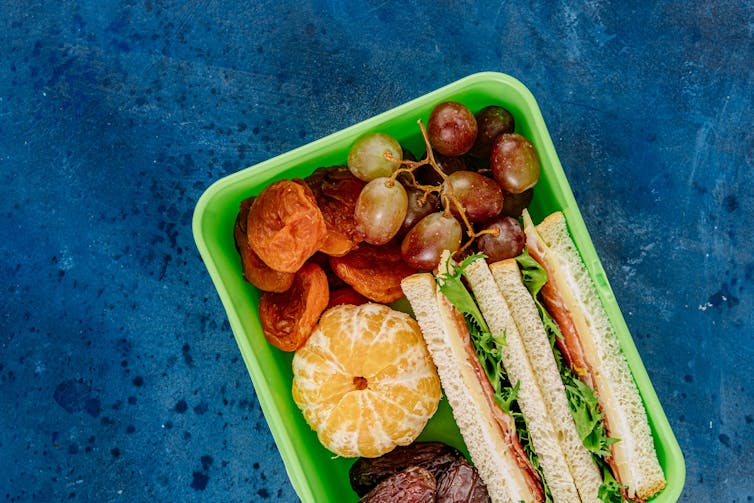
Choose Snacks Wisely
Most kids will eat a treat food over the core foods listed above (just like most adults!). These foods are fun and yummy but not the best choice for sustained energy and focus at school everyday.
So try and avoid snacks like fruit bars and straps, which are low in fibre, fluids, vitamins and minerals, and high in sugar. Also avoid dairy desserts such as custard pouches, biscuits, chocolate bars and muesli bars that are often high in fat and sugar and don’t need to be included in the lunchbox.
While homemade snacks like pikelets, scrolls or homemade dip are ideal and more cost effective, pre-packaged options can be a lifesaver for time-pressed parents.
When choosing packaged snacks, look for items under 600 kilojules per serving, low in saturated fat (less than 2 grams per serving) and containing fibre (more than 1 gram per serving).
Also look for nutrient-dense ingredients like low-fat dairy, wholegrains, fruits, vegetables, or beans to provide a more balanced snack selection. Good options include popcorn, dried fruit boxes, wholegrain crackers and cheese, mini rice cakes, tinned fruit cups and yoghurts without added sugars.
Keep Lunch Boxes Easy
Try to make school food easy to handle and eat.
For younger children, cut up large pieces of fruit and vegetables, quarter sandwiches and choose things with easy-to-open packaging.
Involve your children in preparing and packing the lunchbox or show them the final product so they know its contents. This means the child is not surprised by the contents. They are also more likely to eat a meal they helped make.
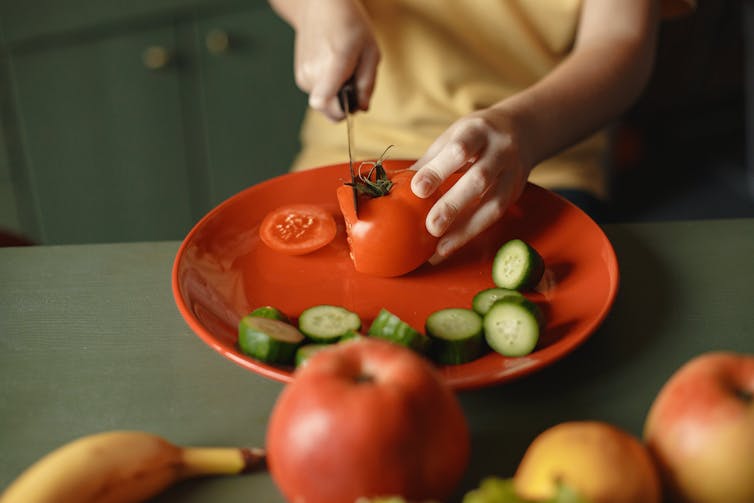
Keep Things Fresh
Food can sit in lunchboxes for hours, so it’s important to keep it fresh. To help keep it as cool you can:
use an insulated lunchbox and ice pack. Pack the ice pack next to items prone to spoilage
if you are preparing the lunchbox the day before, store it in the fridge overnight
ask your kids to keep lunchboxes in their school bags, away from direct sunlight and heat
also consider freezing water bottles overnight to provide a cool and refreshing drink for hot days
if you know it’s going to be a particularly hot day or your child is going to be out and about with their lunch box, choose foods that don’t have to be kept cool. For example, baked beans, tetra pack milk, wholegrain crackers and diced fruit cups. Also consider uncut and whole raw fruit and vegetables such as an apple or orange, baby carrots, baby cucumbers or cherry tomatoes.
Keep Costs Down
There are several ways you can try to keep costs down when buying school lunch supplies:
follow the Australian Dietary Guidelines. A 2023 study suggests maintaining a healthy diet – along the lines of the guidelines – could save A$160 off a family of four’s fortnightly shopping bill
choose seasonal fruits and vegetables for the freshest items at lowest cost
take advantage of special deals or bulk purchases, especially for your child’s favourite snacks or things with a long shelf-life like canned or frozen foods
bake items such as scrolls or muesli bars and freeze in bulk when time allows. The One Handed Cooks have healthy recipes for all ages that are wallet and freezer friendly
use dinner leftovers as next-day lunches

- keep an eye on your child’s lunchbox to see what they eat. They may eat less during lunchtime but need a snack later. Adjust the lunchbox contents based on their hunger level and have a post-school snack prepared to avoid unnecessary food waste.
For more ideas on managing lunchboxes, check out the Grow&Go Toolbox. Nutrition Australia also has some great suggestions for balancing your child’s lunchbox.![]()
Clare Dix, Research Fellow in Nutrition & Dietetics, The University of Queensland and Stella Boyd-Ford, Research Fellow with the Grow&Go Toolbox, The University of Queensland
This article is republished from The Conversation under a Creative Commons license. Read the original article.
3 ways to help your child transition off screens and avoid the dreaded ‘tech tantrums’

Many Australian parents worry about how much time their children spend watching screens.
While some time on devices is fine for entertainment and education, we also know it is important children do things away from TVs and devices.
This means for many families, there is a daily battle around getting kids off their screens and avoiding “tech tantrums”.
Our new research looks at how parents and carers can help children with what researchers call “technology transitions”.
Why Are Transitions So Tough?
Technology transitions are a lot like other transitions children experience throughout their day.
These include stopping play to get dressed, moving from having breakfast to getting in the car, or finishing time on the swing to leave the park. These can be tricky because they involve self-regulation skills that children learn and develop as they grow.
Transitioning from screen to non-screen activities is something many children would do more than once a day.
Often technology transitions can appear harder for children and their carers than other transitions because devices can be highly engaging, with developers and media designers actively working to keep children connected (think of how streaming services automatically start playing the next show and display all the similar options for viewing).

Our Study
We are working on a larger project to develop an online tool with advice for parents about using digital technologies with their children.
In this part of the study, we have been exploring how to support children with technology transitions. Together with Playgroup WA, we worked with a group of 14 parents to explore different ways to move children off technology.
Over 12 weeks, we provided parents with ideas and advice to support transitions and then asked them what worked best. These resources included content from the federal government’s parenting website Raising Children Network and ABC Kids.
Families reported their top three strategies for supporting technology transitions.
1. Prepare Your Kids
We would be upset if we were watching a movie and someone suddenly stopped it midway through without warning.
Just like adults, children can feel very annoyed and frustrated when their device is suddenly taken away, especially when they are enjoying a game or watching content they like.
So you need to prepare children and let them know when their time with a screen will end.
Some successful strategies parents and carers in this research used were “you can watch two episodes of this show” or “when this game is finished we will stop”. These help children to know how much time they will have with a device and that they will be able to finish an activity they are enjoying.
Telling them what activity would follow was also helpful. For example “when you have finished that game it will be time to eat” or “after you have watched that show we will go to the park”. What they are moving to may not always be fun, helping children understand what to expect helps make for a smoother transition.
2. Do Something ‘For Real-Life’ Inspired By The Screen
You can use children’s interests in what they are watching to help them move from technologies into non-digital activities.
For example if your child has been watching Bluey you could invite them to complete a Bluey puzzle, or role-play some Bluey games such as keepy uppy or obstacle course. Families in this study reported moving from watching Fireman Sam to visiting a fire station or building a fire station with their child using blocks and other play materials in the home.
Parents also successfully used music and songs children liked to help with technology transitions. This could be playing music from a show, or turning on music kids liked to act as a fun activity to engage them in something else.

3. Give Kids Choice
Offering children choice in these situations can also be very powerful.
Many aspects of children’s lives are managed for them, when to go to school or pre-school, what they have to wear and using a seat belt in the car. Many of these things are not negotiable and often for good reasons.
This is why it is helpful to give children some choice in their lives when you can.
Parents reported success when providing kids with simple choices when preparing to move off technology. For example “would you like to watch two or four episodes of this show?” or “would you like to start the timer for your game or do you want me to let you know when your time is up?”
These strategies help children feel like they have some choice about how long they will use technologies.
As parents and carers navigate screens and technology with their kids, they should know they are not alone if they find transitions difficult. And there are strategies that can help.
The Raising Children Network has more ideas for supporting transitions.![]()
Juliana Zabatiero, Research Fellow, Curtin University; Kate Highfield, Associate Professor, Early Childhood Education Academic Lead, University of Canberra; Leon Straker, Professor of Physiotherapy, Curtin University, and Susan Edwards, Professor of Education, Australian Catholic University
This article is republished from The Conversation under a Creative Commons license. Read the original article.
Wondering how to talk to your teen about drugs? Start the conversation early, be honest and avoid judgement

With several drug overdoses already this festival season, and recent news of three new recreational drugs identified by the drug checking service in Canberra, many parents of teenagers will be wondering how they can keep their kids safe from harmful drugs.
It’s not the first time CANtest, Canberra’s fixed site drug checking service, has identified new drugs circulating. Worldwide, more than 1,000 new drugs have been released on to the illicit market in the past 15 years.
Because illicit drugs are unregulated, there’s no quality control or restrictions on sales, like there is, say, for alcohol or medicines. Manufacturers can add whatever substances they like and sell their drugs as anything. Data from CANtest shows illicit drugs often contain substances other than the expected drug.
The age group most likely to have used an illicit drug recently is young adults in their 20s (30.6%), but nearly 22% of teenagers have tried an illicit drug in their lifetime. The key is to start talking to teens well before they encounter these substances so they’re well prepared.
First, Don’t Panic
The good news is most teenagers don’t use illicit drugs and the majority of those who do only do so occasionally, and don’t come to serious harm. Drug use among teens in Australia has actually been in decline for more than two decades.
Still, some do, and using illicit drugs is risky, primarily because they’re illegal and you don’t know what you’re getting.
Children are heavily influenced by their parents’ attitudes when it comes to alcohol and other drug use. While some parents worry discussing drugs might encourage drug use, open communication generally, and specifically in discussing drugs, has been associated with lower rates of drug use.
Maintain An Open Dialogue
Conversations about drugs can start at an early age. Talking early means a young person already has well-formed attitudes before the influence of their peers kicks in. Even before they get to school you can be talking to them about using medicines safely.
As children become teenagers, they’re exposed to more news and information online. You can use current events, like the recent festival overdoses, as a catalyst for raising the issue.
Find a time to talk when you’re both clear-headed, you’re somewhere private and you have plenty of time. In the car can be a good place.

Ask questions, listen to what your teen has to say, and resist the urge to lecture. We know honest information works best. Scare tactics and exaggeration are generally unhelpful and may make teens more curious about trying drugs.
For example, claims they will become addicted after using a drug once or that using drugs causes instant and irreversible brain damage are not credible to teens, and they’re likely to ignore them.
Ask what they know about the topic and what their thoughts are. Then give them the facts in a non-judgemental way. Talk about the reasons some people choose to use drugs, and about the risks.
Avoid glorifying drug use, such as talking about fun times you’ve had using drugs in the past. Some parents think this makes them more credible, but it also potentially communicates a permissive attitude to drugs.
Emphasise Personal Responsibility
If your teen is worried about peer pressure or standing out from their friends if they don’t want to use drugs, it can be helpful to run through a few scenarios with them. What would they say if someone asked them if they wanted to try MDMA?
Emphasise personal responsibility and the importance of making independent decisions, and help them make contingency plans if someone is applying unwanted pressure. This could include seeking out friends at a party who don’t use drugs, planning how to exit, or calling a parent.
It’s absolutely OK to set and be clear about your expectations around drug use, but try not to make threats. Saying things like “if you use drugs you’re on your own” is unhelpful because if they get into trouble they may not feel they can call for help.

Take A Harm Reduction Approach
Sometimes though, no matter what you do, some young people will want to experiment. Risk-taking is a natural part of adolescence and young adulthood.
Make sure they know how to respond in an emergency. Consequences from illicit drugs such as toxicity can often be reversed if treated early enough, so make sure your teen knows if they or their friends use something and start feeling unwell that they should get medical help straight away. It’s better to get help and not need it.
At festivals there’s always a medical tent. Ensure they know to call 000 if there is no immediate medical help available and they should disclose what has been taken. Police are not usually called to drug emergencies.
Make sure they feel like they can call you for advice or to pick them up and that they won’t be interrogated or berated. It’s much better if you can talk to them later about what they learnt from the incident.
If you know your teen is occasionally using recreational drugs or is intending to, or their friends are, you can be more direct with harm reduction information.
Let them know it’s possible to get drugs checked in some places to see what’s in them.
If they can’t, make sure they know they should just take a small amount first to see how a drug affects them. It’s best to take a quarter or half initially to make sure there are no adverse reactions, and ideally wait at least 45 minutes before talking more. It can take up to an hour or more to feel the effects of MDMA.
Mixing drugs with alcohol or mixing multiple drugs, including prescription medicines, significantly increases the risk of something going wrong and should be avoided.
If you need advice you can call the National Alcohol and Other Drug Hotline on 1800 250 015. The Alcohol and Drug Foundation has a range of helpful information about drugs and their effects.![]()
Nicole Lee, Professor at the National Drug Research Institute Curtin University (Melbourne based), Curtin University
This article is republished from The Conversation under a Creative Commons license. Read the original article.
Symptoms of menopause can make it harder to work. Here’s what employers should be doing

How menopause affects women’s working lives has been shrouded by stigma for decades.
But this is starting to change. Australian journalist Imogen Crump’s recent on-air hot flush and her remark “I don’t think hormones respect national television” drew applause for its candour.
The federal parliament has menopause firmly on its radar with an inquiry set to explore the economic, physical, mental and emotional effects of this typically natural transition.
The inquiry will also investigate why awareness, availability and usage of workplace supports remains low. It’s not enough for employers to offer supports – employees need to be confident enough to access them.
Our global review of organisational supports for menstruation and menopause found workplaces play a pivotal role in breaking menopausal taboos. With the right interventions, workplaces can enable employees to manage their symptoms and remain in the workforce.
3 In 4 Women Experience Troubling Symptoms
Menopause is when a woman or person who menstruates stops having their period for at least 12 months.
Most people who menstruate transition to menopause and experience perimenopausal symptoms between 45 and 60 years of age.
Symptoms commonly include hot flushes, night sweats, cognitive disruptions known as “brain fog”, anxiety, depressive symptoms and disturbed sleep.
For some people, menopausal symptoms can be brief and cause little discomfort. But around 25% of women experience symptoms that profoundly affect their daily working lives.
Why Menopause Is A Workplace Issue
The government’s focus on prolonging workforce participation, together with its workplace equality agenda, has placed menopause on the agenda for unions and individual organisations.
Recent Australian research found 17% of women aged 45 to 64 reported taking an extended break from work in the last five years.
Menopause can also be a key factor in some women’s decision to retire early. Women retire 7.4 years earlier, on average, than men. This means a loss of earnings upwards of A$577,512 per woman.
The economic impact is significant. Menopause is estimated to cost Australian women $15.2 billion in lost income and superannuation for every year of early retirement.

Changing Workplace Culture Is Key
Our review investigated the supports organisations around the globe are offering for women going through menopause. Organisations have trialled a wide range of interventions, with varying success.
The better ones took a holistic approach. They prioritised a safe and open workplace culture, where menopausal symptoms could be talked about. Awareness raising, education and buy-in from senior leaders contributed to a positive workplace culture.
Without this, employees can fear repercussions will impact their job security or career progression and are likely to be suffering in silence.
Collaboration And Adaptability Is Key
It’s important for employees and employers to work together to develop evidence-based workplace guidelines. These should include actionable advice about how to modify working conditions.
Guidelines supporting staff can be better received than policies as they can be less bureaucratic and more practical. Menopause guidelines might recommend access to:
- flexible working conditions
- fans
- cold drinking water
- natural light
- free period products
- uniforms made from breathable, natural fabrics.
Guidelines must be adapted to different industries, professions and work roles. Ways of cooling down employees will be more necessary for hot workplaces such as commercial kitchens or labour intensive roles in agriculture and construction.
Guidelines within the teaching profession, in contrast, might include more access to toilet breaks and on-site showering facilities.
Flexible working conditions, including flexible start and finish times, more frequent breaks and working from home can also be useful during symptom flare ups. Australian legislation already enables these supports, but their take-up is often tied to senior management support.

Additional leave entitlements, combined with education and the other interventions mentioned can be effective, but remain widely debated.
Some argue additional entitlements can lead to menopausal women being seen as weak or unreliable.
But in the right circumstances, leave provisions can enable employees to take time away from work they need to better manage their symptoms and return to work fresh.
Best-practice approaches also recognise how other health issues like pelvic pain (such as endometriosis) and menstruation can affect employees throughout their life-course.
Lagging Workplaces Need To Catch Up
Victorian Women’s Trust, Future Super and ModiBodi were among the first Australian organisations to offer support to employees affected by menopause and menstruation. These organisations offer a variety of workplace supports that trust employees to be honest about their circumstances and empower them to access help when they need it.
With a tight employment market and a workforce motivated by progressive corporate cultures, more organisations may be encouraged to consider a menstrual and menopause policy. Sustainability Victoria recently topped the 2023 AFR Boss Best Places to Work List (in the government, education and not-for-profit sector) in part due to its progressive menstruation and menopause policy.
Organisations looking to implement menopause-sensitive workplace policies need not reinvent the wheel. Research-informed, free workplace resources can encourage productive conversations. They can be modified to meet unique industry and workplace contexts, with leading workplaces often sharing their guidelines and policies to help break the stigma and taboo shrouding menstruation and menopause in the workplace.
If we are serious about workplace gender equity, workplace menopause supports should be part of business as usual. ![]()
Michelle O'Shea, Senior Lecturer, School of Business, Western Sydney University; Danielle Howe, PhD Candidate, Western Sydney University; Mike Armour, Associate Professor at NICM Health Research Institute, Western Sydney University, and Sarah Duffy, Senior Lecturer, School of Business, Western Sydney University
This article is republished from The Conversation under a Creative Commons license. Read the original article.
New Medicine Can Create A New Life For Diabetes Patients -- Without Needles!
19-million-year-old fossil jaw bone hints the biggest whales first evolved somewhere unexpected

Baleen whales are the titans of the ocean, the largest animals to have ever lived. The record holder is the blue whale (Balaenoptera musculus), which can reach lengths of up to 30 metres. That’s longer than a basketball court.
However, throughout their evolutionary history, most baleen whales were relatively much smaller, around five metres in length. While still big compared to most animals, for a baleen whale that’s quite small.
However, new fossil discoveries from the Southern Hemisphere are beginning to disrupt this story. The latest is an unassuming fossil from the banks of the Murray River in South Australia.
Roughly 19 million years old, this fossil is the tip of the lower jaws (or “chin”) of a baleen whale estimated to be around nine metres in length, which makes it the new record holder from its time. This find has been published today in the journal Proceedings of the Royal Society B: Biological Sciences.
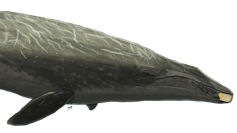
What Are Baleen Whales?
Most mammals have teeth in their mouth. Baleen whales are a strange exception. While their ancestors had teeth, today’s baleen whales instead have baleen – a large rack of fine, hair-like keratin used to filter out small krill from the water.
This structure enabled baleen whales to feed efficiently on enormous shoals of tiny zooplankton in productive parts of the ocean, which facilitated the evolution of larger and larger body sizes.
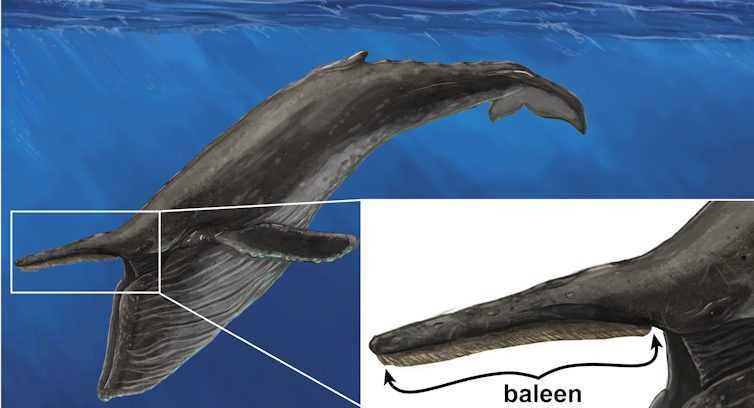
The ‘Missing Years’ Of Whale Evolution
Various groups of toothed whales terrorised the ocean for millions of years, including some that were the ancestors of the toothless baleen whales. Yet at some time between 23 and 18 million years ago these ancient “toothed baleen whales” went extinct.
We aren’t exactly sure when, as fossil whales from this episode in Earth’s history are exceedingly rare. What we do know is immediately after this gap in the whale fossil record, only the relatively small, toothless ancestors of baleen whales remained.
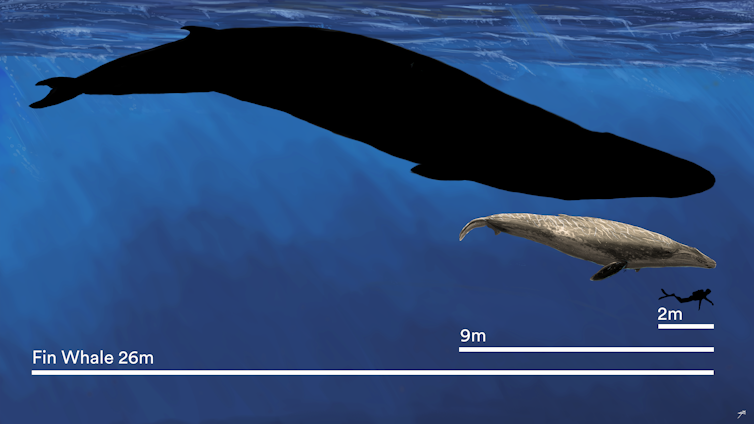
Scientists previously thought baleen whales kept to relatively small proportions until the ice ages (which began from about 3–2.5 million years ago). But the majority of research on trends in the evolutionary history of whales is based on the reasonably well-explored fossil record from the Northern Hemisphere – a notable bias that likely shaped these theories.
Crucially, new fossil finds from the Southern Hemisphere are starting to show us that at least down south, whales got bigger much earlier than previous theories suggest.
An Unexpected Find
More than 100 years ago, palaeontologist Francis Cudmore found the very tips of a large pair of fossil whale jaws eroding out of the banks of the Murray River in South Australia. These 19-million-year-old fossils made their way to Museums Victoria and remained unrecognised in the collection until they were rediscovered in a drawer by one of the authors, Erich Fitzgerald.
Using equations derived from measurements of modern-day baleen whales, we predicted the whale this fossilised “chin” came from was approximately nine metres long. The previous record holder from this early period of whale evolution was only six metres long.
Together with other fossils from Peru in South America, this suggests larger baleen whales may have emerged much earlier in their evolutionary history and the large body size of whales evolved gradually over many more millions of years than previous research suggested.
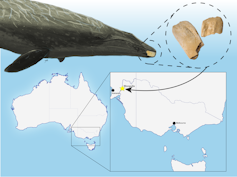
The Southern Hemisphere As The Cradle Of Gigantic Whale Evolution
The large whale fossils from Australasia and South America seem to suggest that for most of the evolutionary history of baleen whales, whenever a large baleen whale shows up in the fossil record, it is in the Southern Hemisphere.
Strikingly, this pattern persists despite the fact the Southern Hemisphere contains less than 20% of the known fossil record of baleen whales. While this is an unexpectedly strong signal from our research, it doesn’t come as a complete surprise when we consider living baleen whales.
Today, the temperate seas of the Southern Hemisphere are connected by the chilly Southern Ocean, which surrounds Antarctica and is extremely productive, supporting the greatest biomass of marine megafauna on Earth.
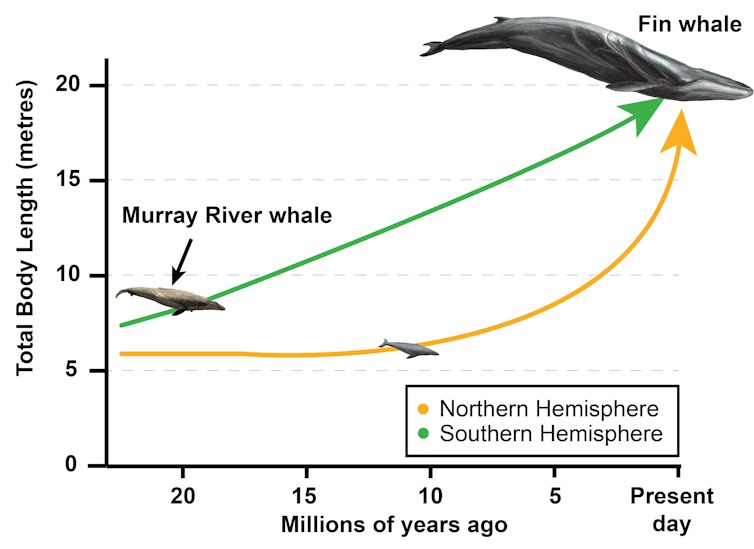
Around the time baleen whales started evolving from big to gigantic, the strength of the Antarctic Circumpolar Current was intensifying, eventually leading to the present day powerhouse Southern Ocean.
Today, baleen whales are ecosystem engineers, their huge bodies consuming tremendous amounts of energy. Upon death, these whales provide an abundance of nutrients to deep-sea ecosystems.
As we learn more about the evolutionary history of whales, such as when and where their large size evolved, we can begin to understand just how ancient their role in the ocean ecosystem may have been and how it could shift in tune with global climate change.![]()
James Patrick Rule, Research Affiliate, Monash University and Erich Fitzgerald, Senior Curator, Vertebrate Palaeontology, Museums Victoria Research Institute
This article is republished from The Conversation under a Creative Commons license. Read the original article.
Trash TV: streaming giants are failing to educate the young about waste recycling. Here’s why it matters
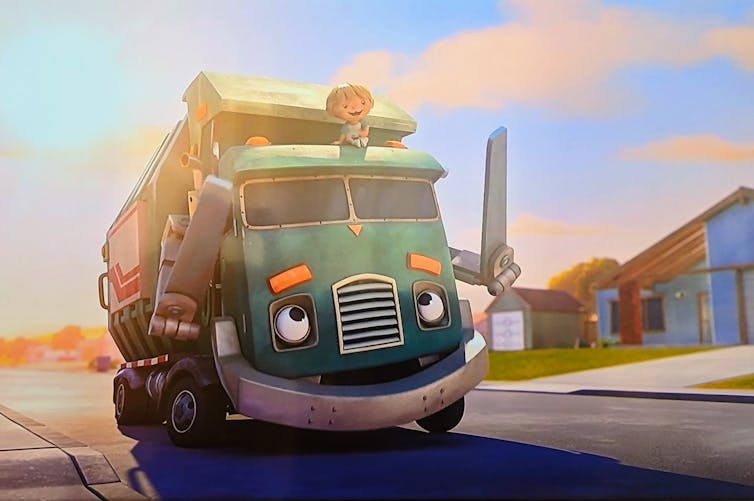
As a new parent, I’ve had the joy of watching animated cartoons with my two-year-old son. His favourite show is Trash Truck, on Netflix, featuring a tight-knit ensemble of five characters: a trash truck, a young boy, a raccoon, a bear and a mouse. The show offers valuable life lessons, emphasising the importance of friendship, sharing, love for animals and respect for parents.
But there’s a problem. The way it portrays the collection of waste grabbed my attention. It’s simply a matter of gathering mixed waste from bins and depositing it in a landfill. There’s no sign of any process for sorting or recycling waste.
This left me pondering why a charming cartoon series with a global audience, capable of educating the future generation about waste recovery, lacks such relevant educational content.
I’m a researcher who has studied waste management for the past six years. I decided to analyse similar series such as The Stinky and Dirty Show (Amazon Prime), BabyBus (YouTube) and Frank the Garbage Truck (YouTube). A clear pattern emerged – all show waste simply being dumped.
To make it clear, in one episode of BabyBus, a song goes:
[Garbage truck sings] Garbage truck yeah yeah, looking for garbage here and there […] I have a long arm yeah yeah, look what I can do. […] [Two paper coke cups sing] Big tummy, no no no, it is going to eat me, the trash can is shaking shaking, I don’t want to go […] [Garbage truck sings] Now off to the dump […] [Discarded apple sings] No I don’t want to go to the dump […] [Garbage truck sings] Dirty trash bye bye, smelly trash bye bye.
This episode dropped four years ago on YouTube. It has hit a whopping 109 million views. That shows how powerful these platforms are for reaching people.
Why Does Waste Education Matter?
Many nations have hastily adopted various strategies and developed policies to tackle the ever-growing issue of waste. In particular, scientific literature informing these strategies and policies highlights education as an effective and sustainable solution.
The findings from our multiple research projects reinforce this fact. For instance, we found “poor culture and education” is one of the top three barriers to sustainably managing construction and demolition waste and treating it as a resource. In a later study, we identified education as a priority to enable development of markets for recycled construction waste materials. Most recently, we found “education, investigation and demonstration activities” are the main strategy for optimising use of recycled materials in the building and construction sector.
Screen Time Can Be Learning Time
The United Nations Sustainable Development Goals emphasise the crucial role of children in achieving these global objectives. Its 2030 Agenda for Sustainable Development describes children as:
critical agents of change […] [who] will find in the new goals a platform to channel their infinite capacities for activism into the creation of a better world.
We have seen a big increase in waste education for children such as recycling programs at schools in recent years. But according to Bronfenbrenner’s ecological systems theory of human development, the primary environmental influence on children occurs within their homes. A large part of a child’s time is spent at home where they often have uninterrupted access to multimedia content.
Recent research indicates screen time for children has surged particularly during and after COVID-19. While this trend may not be ideal, we can harness it for shaping the mindset of the next generation. In particular, it’s an opportunity to promote environmental sustainability.
The United States’ National Association for the Education of Young Children suggests multimedia learning, when used appropriately, helps children understand complicated topics while also providing positive engagement and enjoyment.

The Power And Responsibilities Of Streaming Media
Online video streaming has transformed the media landscape and viewing habits worldwide. The swift expansion of internet usage, the ubiquity of mobile devices and the surging demand for online video content have driven this change.
The global video streaming market has grown remarkably over the past ten years. By 2022, estimated annual revenue from streaming TV and video hit US$154 billion.
Waste is everyone’s responsibility, as outlined in many waste management initiatives and activities around the world.
With a global total of 1.2 billion viewers, giant streaming media companies such as Netflix (247.2 million paid subscribers, Amazon Prime Video (200 million paid subscribers) and Disney+ (150 million paid subscribers have a key role to play in educating the next generation. In particular, their animated cartoon series can influence the next generation’s attitude and behaviour.
Given its impact on the young, the global entertainment industry needs to be held accountable to ensure it portrays current knowledge about how we manage pressing issues such as waste.![]()
Salman Shooshtarian, Senior Lecturer, School of Property, Construction and Project Management, RMIT University
This article is republished from The Conversation under a Creative Commons license. Read the original article.
Albanese tax plan will give average earner $1500 tax cut – more than double Morrison’s Stage 3
Michelle Grattan, University of CanberraA person on the average annual wage of $73,000 will get a tax cut of more than $1500 a year under Labor’s revamped tax policy – more than double the cut they’d have received under the Coalition’s legislated stage 3 plan.
In the government’s dramatic recalibration of stage 3, the proposed tax cut for those earning more than $200,000 will be slashed in half, from around $9000 to more than $4500.
At the other end of the income scale, all taxpayers will get a cut, rather than just those earning more than $45,000 as under the legislated stage 3.
Taxpayers earning less than $150,000 will get larger tax cuts under the government’s proposed plan compared with the Morrison one, while those earning more than $150,000 will get smaller cuts.
Amid political attacks over his broken promise – Anthony Albanese had repeatedly committed to delivering stage 3 as legislated by the Coalition – the Prime Minister will tell the National Press Club on Thursday, “When economic circumstances change, the right thing to do is change your economic policy. That’s what we are doing.”
Treasurer Jim Chalmers told the ABC on Wednesday night: “The many will benefit from this, rather than the few”.
The policy switch was endorsed at a brief caucus meeting late Wednesday.
“Our plan will more than double the benefit for Australians on the average income,” Albanese says in his Press Club speech, extracts of which were released ahead of delivery. .
“And it will look after low income earners and part-time workers as well.
"So someone working at Australia’s largest employer, Woolworths, earning $40,000 will now get a tax cut of over $650.
"Under Scott Morrison’s plan, they would have got nothing.”
Under the changes, the lowest rate of tax is reduced from 19 cents to 16 cents in the dollar. This will mean people will pay less tax on the first $45,000 they earn.
“This is a significant boost for the take-home pay of Australians on modest incomes and people working part-time,” Albanese says.
“An early educator, or an aged care worker or a cleaner earning $50,000, will receive a tax cut worth $929 a year”.
He says these tax cuts will help parents returning to work, especially women with young children. Business would also be assisted, by the boost in workforce participation.
Albanese says that with the focus “fairly and squarely […] on middle Australia”, the second tax rate, reducing from 32.5% to 30%, will now apply up to $135,000.
The government is retaining the 37% rate, which is scrapped in the Morrison stage 3 model, and that will now apply from $135,000 instead of $120,000 as at present. The top 45% rate will start from $190,000, up from the present $180,000 but down from the $200,000 legislated for stage 3.
Albanese says under the new plan a full-time worker earning $100,000 will get a cut of more than $2100 – “over $800 more for middle income earners because of our changes.”
For a family on he average household income – about $130,000 – with one partner earning $80,000 and the other $50,000, their combined tax cut will be more than $2600. This is $1600 more than under stage 3.
Albanese quotes Treasury as saying the government’s change is “broadly revenue neutral, will not add to inflationary pressures and will support labour supply”.
The proposed new rates will start from July 1, when stage 3 was due to begin. The changes will have to be legislated but the government has enough support from the crossbench in the Senate to be confident of passage.
Labor is rolling out an advertising campaign to sell the changes.
Albanese says in his speech: “This is the right decision for the right reasons – and we’ve made it the right way. It is the best way forward – because it is the best way to help Australians struggling with their cost of living without putting pressure on inflation.”
Chalmers on Thursday will release a Treasury analysis to back up the government’s case. The plan “will be better for middle Australia, better for cost-of-living pressures, better for women and workforce participation, better for nurses and teachers and truckies,” he said. The Treasury analysis would show the plan would be better for the economy, he added.
Shadow treasurer Angus Taylor said the Coalition was “absolutely locked down on supporting the stage 3 tax cut”. He called the government’s changes the “mother of all broken promises”. ![]()
Michelle Grattan, Professorial Fellow, University of Canberra
This article is republished from The Conversation under a Creative Commons license. Read the original article.
China’s population shrinks again and could more than halve – here’s what that means
Xiujian Peng, Victoria UniversityChina’s population has shrunk for the second year in a row.
The National Bureau of Statistics reports just 9.02 million births in 2023 – only half as many as in 2017. Set alongside China’s 11.1 million deaths in 2023, up 500,000 on 2022, it means China’s population shrank 2.08 million in 2023 after falling 850,000 in 2022. That’s a loss of about 3 million in two years.
The two consecutive declines are the first since the great famine of 1959-1961, and the trend is accelerating.
Updated low-scenario projections from a research team at Shanghai Academy of Social Sciences, one of the first to predict the 2022 turndown, have China’s population shrinking from its present 1.4 billion to just 525 million by 2100.
China’s working-age population is projected to fall to just 210 million by 2100 – a mere one-fifth of its peak in 2014.
Deaths Climbing As Births Falling
The death rate is climbing as an inevitable result of the population ageing, and also an upsurge of COVID in the first few months of 2023.
The population is ageing mainly because the birth rate is falling.
China’s total fertility rate, the average number of births per woman, was fairly flat at about 1.66 between 1991 and 2017 under China’s one-child policy. But it then fell to 1.28 in 2020, to 1.08 in 2022 and is now around 1, which is way below the level of 2.1 generally thought necessary to sustain a population.
By way of comparison, Australia and the United States have fertility rates of 1.6. In 2023 South Korea has the world’s lowest rate, 0.72.
Births Plummet Despite Three-Child Policy
China abandoned its one-child policy in 2016. In 2021 the country introduced a three-child policy, backed by tax and other incentives.
But births are continuing to fall. In part this is because of an established one-child norm, in part because the one-child policy cut the number of women of child-bearing age, and in part because economic pressures are making parenthood less attractive.
China’s National Bureau of Statistics says employees of enterprises work an average of 49 hours per week, more than nine hours per day. Women graduates earn less than men and are increasingly postponing having children.
The Year Of The Dragon Offers Hope
One hope is that 2024 will see a bump in births, being the year of the dragon in Chinese astrology, a symbol of good fortune.
Some families may have chosen to postpone childbirth during the less auspicious year of the rabbit in 2023. At least one study has identified such an effect.
An Older, More Dependent Population
The same research team at the Shanghai Academy of Social Sciences and the Centre for Policy Studies at Australia’s Victoria University have China’s population falling by more than one-half to around 525 million by 2100, a fall about 62 million bigger than previously forecast.
The working-age population is set to fall more sharply to 210 million.
We now expect the number of Chinese aged 65 and older to overtake the number of Chinese of traditional working age in 2077, three years earlier than previously.
By 2100 we expect every 100 Chinese of traditional working-age to have to support 137 elderly Chinese, up from just 21 at present.
Our central scenario assumes China’s fertility rate will recover, climbing slowly to 1.3. Our low scenario assumes it will decline further to 0.88 over the next decade and then gradually recover to 1.0 by 2050 before holding steady.
We have based our assumptions on observations of actual total fertility rates in China’s region and their downward trend. In 2022 these rates hit 1.26 in Japan, 1.04 in Singapore, 0.87 in Taiwan, 0.8 in Hong Kong and 0.78 in South Korea.
In none of these countries has fertility rebounded, despite government efforts. These trends point to what demographers call the “low-fertility trap” in which fertility becomes hard to lift once it falls below 1.5 or 1.4.
An Earlier Peak In World Population
At present accounting for one-sixth of the world’s population, China’s accelerated decline will bring forward the day when the world’s population peaks.
Our updated forecast for China brings forward our forecast of when the world’s population will peak by one year to 2083, although there is much that is uncertain (including what will happen in India, now bigger than China, whose fertility rate has fallen below replacement level).
The accelerated decline in China’s population will weaken China’s economy and, through it, the world’s economy.
It will put downward pressure on Chinese consumer spending and upward pressure on wages and government spending. As the world’s second-largest economy, this weakness will present challenges to the world’s economic recovery.![]()
Xiujian Peng, Senior Research Fellow, Centre of Policy Studies, Victoria University
This article is republished from The Conversation under a Creative Commons license. Read the original article.
Disclaimer: These articles are not intended to provide medical advice, diagnosis or treatment. Views expressed here do not necessarily reflect those of Pittwater Online News or its staff.